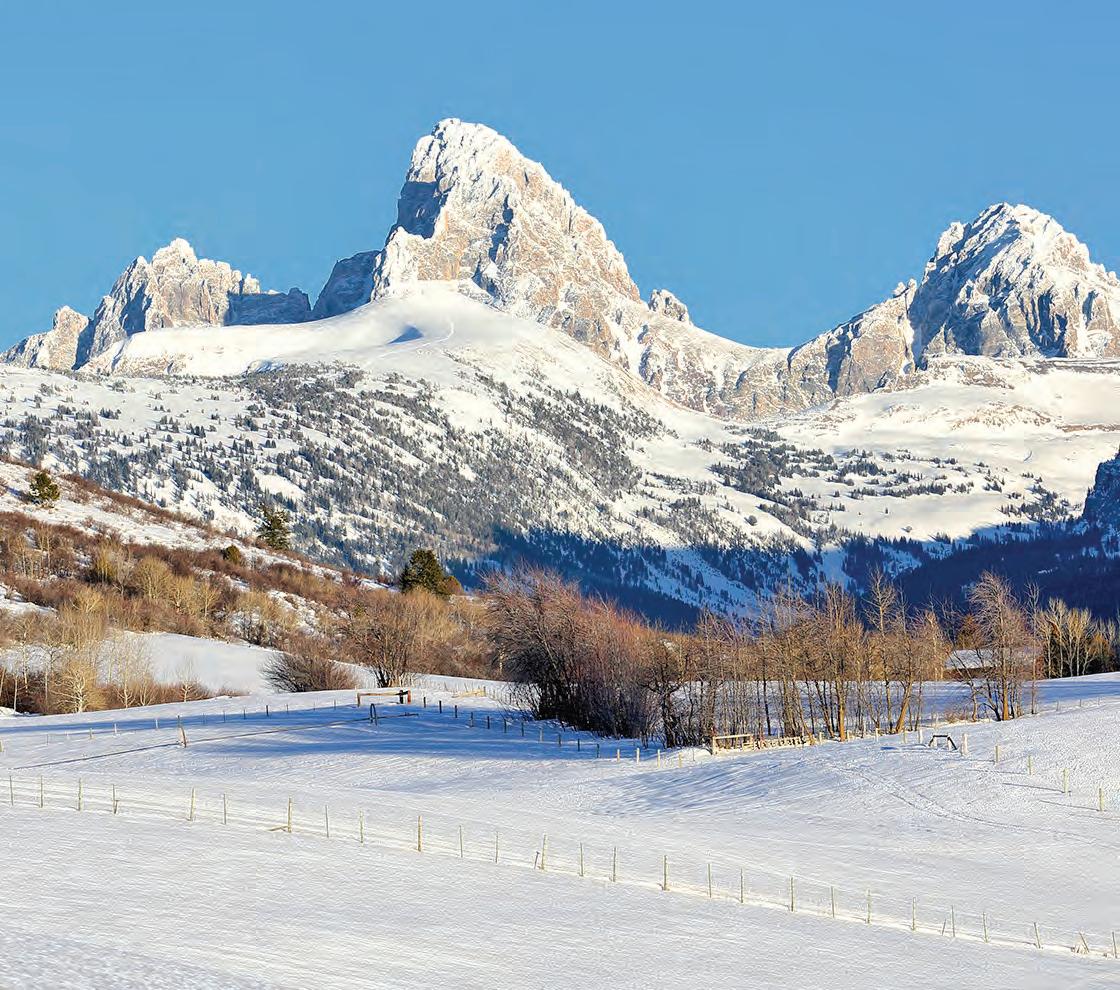








our top agents look forward to assisting you in getting the most out of your real estate experience
Whether you’re buying or selling, upgrading or downsizing, the most important decision is to find the right real estate agent to be your guide. The team at Coldwell Banker Mountain Properties has deep roots in the community, a love for the area and a commitment to excellence that will exceed your expectations. With our proven Teton Valley real estate expertise, our team is here to help guide you home.

















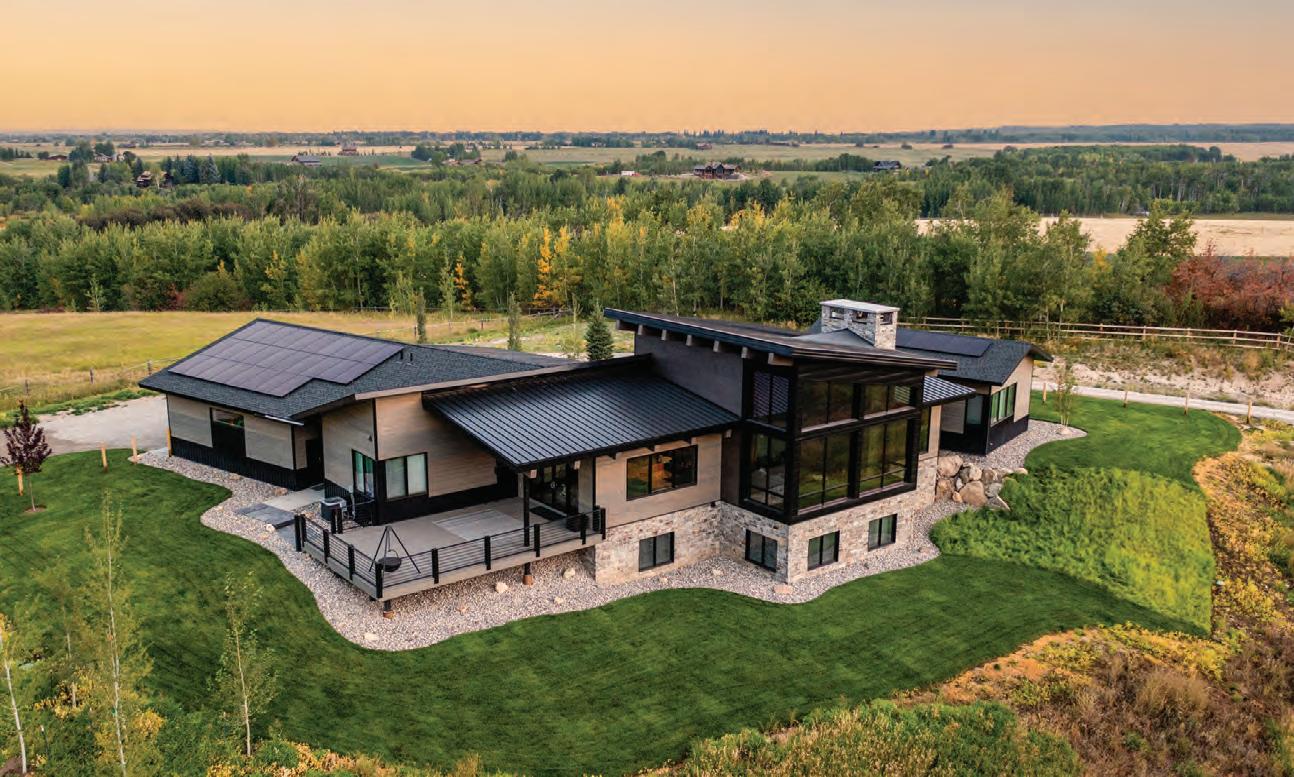




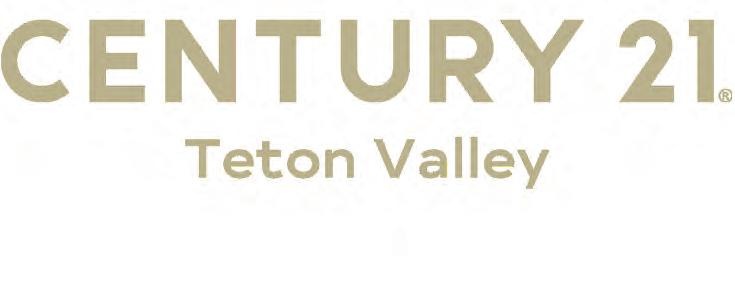






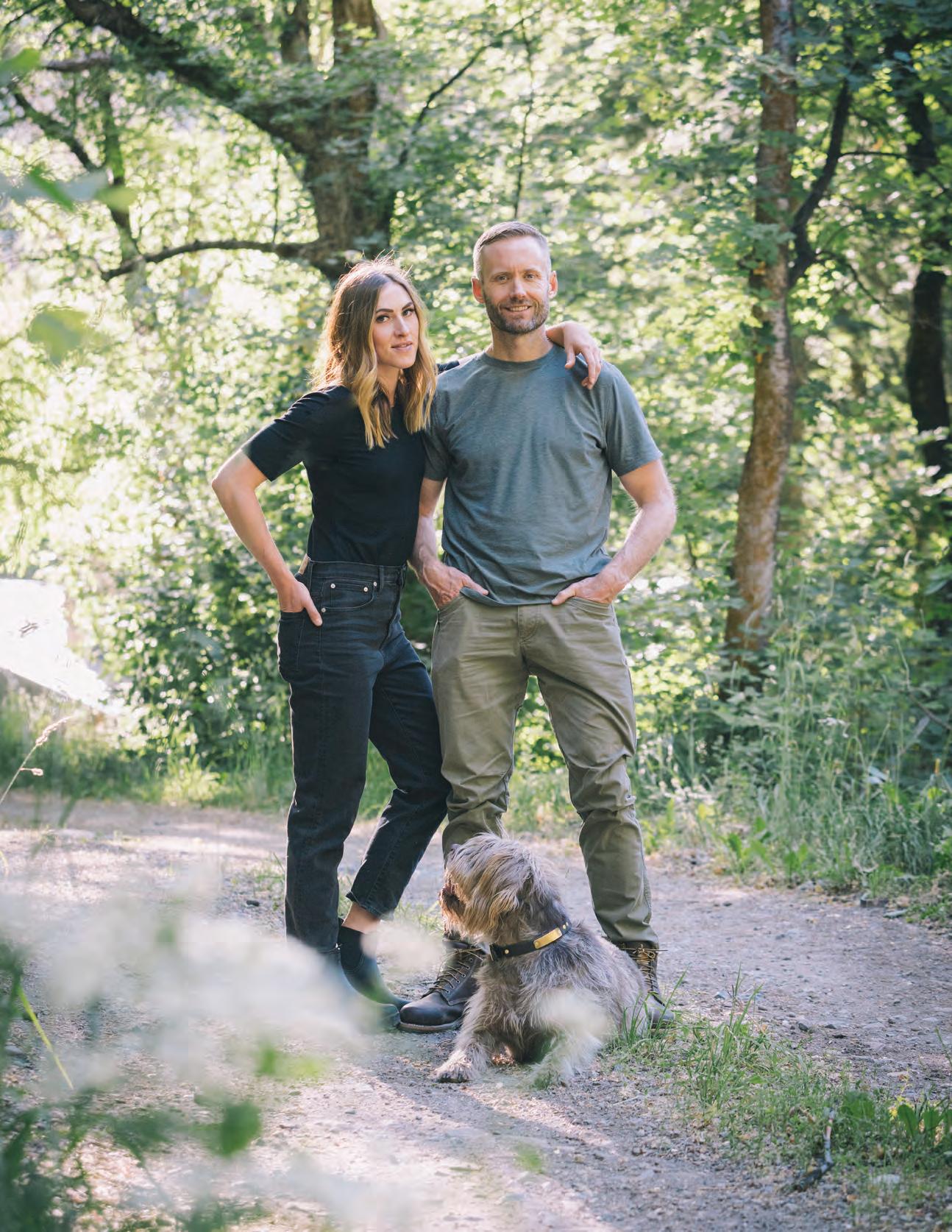

Primed to provide high-quality and compassionate care for all stages in life, Teton Valley Health Care has two clinics — conveniently located near you.
Both accept walk-ins and offer personalized, unrushed appointments, whether these are physical exams, illness or injury care, or plain old wellness visits.
We accept all types of insurance. Plus, we’ve got bilingual providers and a financial assistance program, too.



Stay active with the advanced orthopedic care your bones and joints truly deserve.
At Teton Valley Health Care, we love this region — along with the sheer bounty of outdoor activities at our disposal. Which is why we’ve developed solutions for every body, every age and every condition.
Our orthopedics and sports medicine team is overseen by a board-certified surgeon, and we can provide both minimally invasive procedures — for everything from hand surgeries to knee replacements — and nonsurgical options, including physical therapy, exercise prescriptions and occupational therapy.
If you’re an athlete or just want tips on how to stay safe on your next long-distance hike, we can offer training and techniques on injury prevention, too.

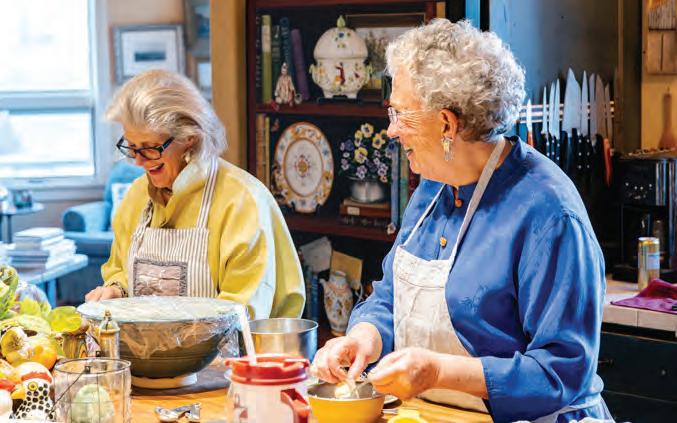


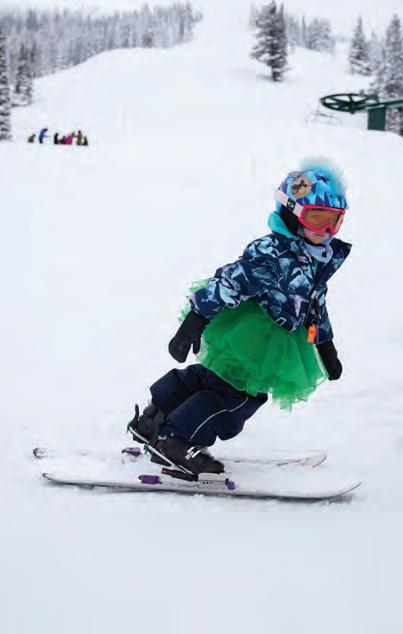
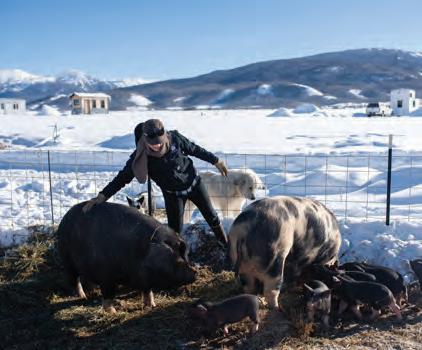


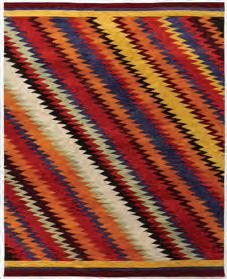
COMMUNITY, GIVING, EXCEPTIONAL SERVICE, EXPERIENCE
COMMUNITY, GIVING, EXCEPTIONAL SERVICE, EXPERIENCE

Follow your dream, home...
Follow your dream, home...
Anne has a reputation of delivering exceptional service and possessing unrivaled expertise of the real estate market in the greater Teton area. She prides herself on creating a bespoke experience for each client to help them follow their dream, home.
Anne has a reputation of delivering exceptional service and possessing unrivaled expertise of the real estate market in the greater Teton area. She prides herself on creating a bespoke experience for each client to help them follow their dream, home.
ENGEL & VÖLKERS | ANNE FISH
ENGEL & VÖLKERS | ANNE FISH
307.307.413.1159
307.307.413.1159
anne.fish@evrealestate.com
annefish.evrealestate.com
anne.fish@evrealestate.com annefish.evrealestate.com




GIVING 10% TO WHAT MATTERS
GIVING 10% TO WHAT MATTERS

Anne Donated 10% of Her Commissions on $55M in Sales to Local Nonprofits in 2022.
Anne Donated 10% of Her Commissions on $55M in Sales to Local Nonprofits in 2022.
IMAGINE The Impact!
IMAGINE The Impact!
Supporting Local Arts, Culture, and Heritage
Supporting Local Arts, Culture, and Heritage

Proudly Owned by Anne Fish
Proudly Owned by Anne Fish




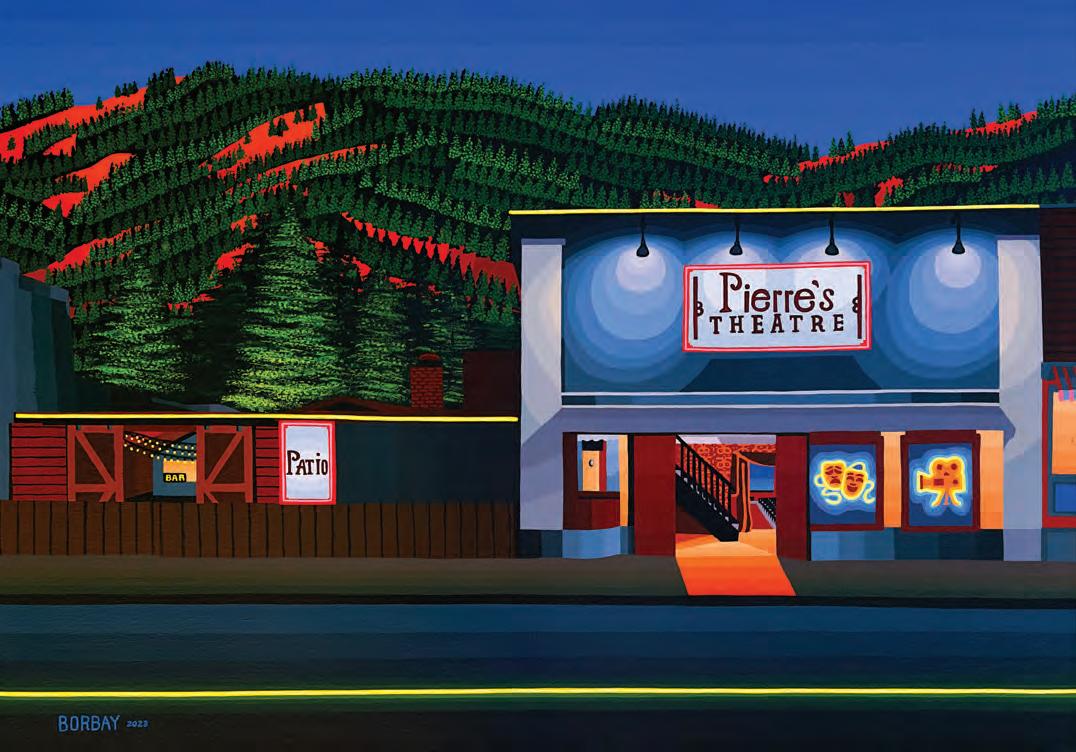




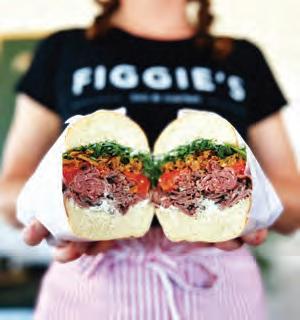



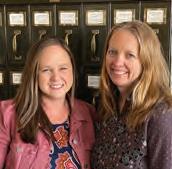
In early October, I went to a dinner party with some dear friends, old and new. It was without question the perfect fall day. After three days of rain in the valley and the season’s first snow high on the mountaintops, the snowcapped mountains made for a gorgeous contrast to the vibrant foliage. As the sun set, we headed upstairs to take in the expansive views of the sunset coloring Housetop Mountain and Rendezvous Peak, east of Victor. Pink alpenglow washed over the stark white peaks and flooded the sky.
While staring at the scene, someone pointed to a change in the snow on the headwall. “Is that the first slide of the season?” they asked. Binoculars were quickly grabbed, and everyone peered out to confirm it was indeed an avalanche. I couldn’t help but laugh. This felt like a quintessential Teton Valley dinner party. Excitement and anticipation for the snow to come. Discussions of big avalanches, big skis, big winters, and the like, took hold of the conversation, all while passing around binoculars to peer out at Mother Nature. I wondered if another group of valley residents were gathered, doing the exact same thing that evening. Life in the Tetons is pretty sweet, I’d say.
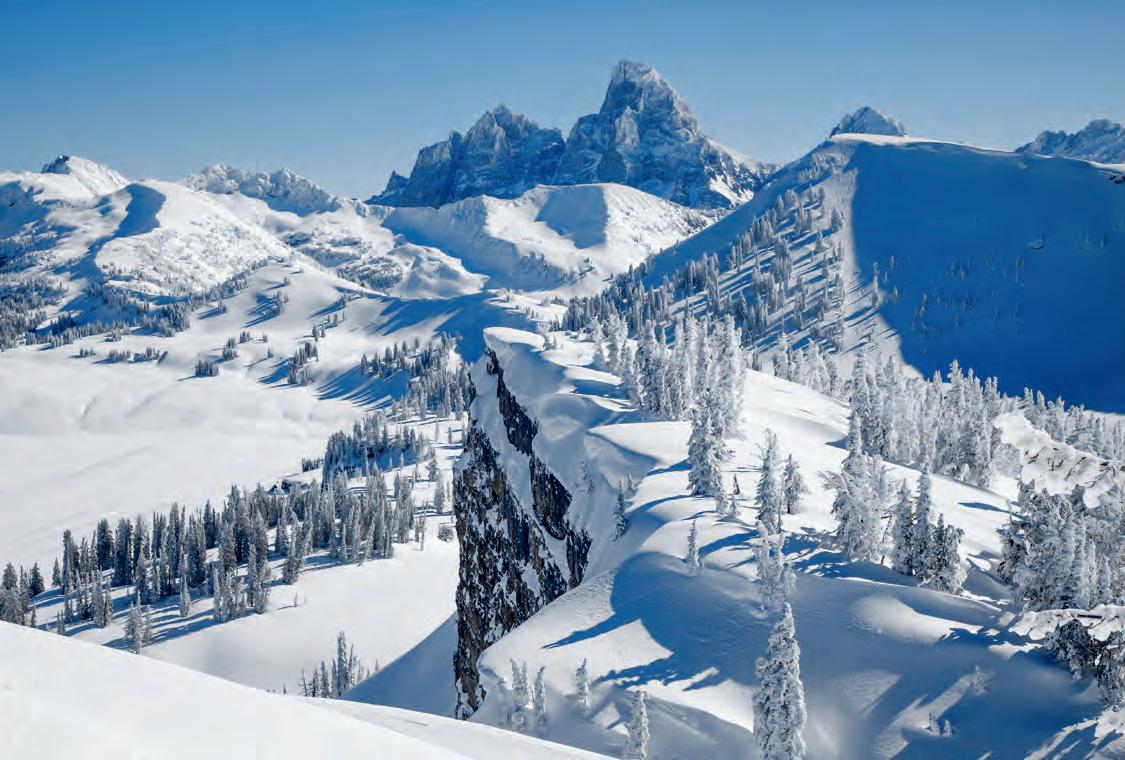
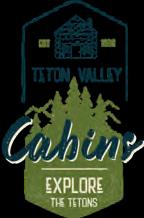





This dinner party was not unlike another you’ll read about in the pages of this issue (For the Love of Community, page 58). For this edition of Teton Valley Magazine, I got to know three women who are as hilarious as they are wonderful. I joined them for a multi-generational dinner to learn from their decades of time spent cooking, gathering, and celebrating. Writing the story and getting to know them bolstered my love of this community. Teton Valley seems to always find a reason to gather and celebrate.
In this issue, we also celebrate winter on the west side. There’s all that happens beyond the slopes—pack your calendar with ideas galore in Kristen Pope’s Snow Play (page 78). Revel in the legacy and tradition of telemark skiing and its foothold in the skiing world, told through Camrin Dengel’s photo essay (page 70). Head to 22 Designs or Yöstmark this season and give the tele turn a try! Winter ranchers, hardy plow drivers, cowboy poets, ice sculptures, and so much more—it’s all here.
So, let this winter edition be an invitation to gather and celebrate the season. Call a neighbor, take in a sunset, and maybe grab a pair of binoculars and peer out at surrounding peaks or search for winter wildlife. Oh, and find tips for spotting the tiny, winged variety on page 92. Whatever you may discover, tell us. I bet there’s a story there.




publisher + editor in chief
Kate Hull
kate@powdermountainpress.com
publisher + art director
Sage Hibberd sage@powdermountainpress.com
sales manager
Jessica Pozzi
jessica@powdermountainpress.com
publisher emeritus
Nancy McCullough-McCoy
editor at large
Michael McCoy
design advisor
Linda Grimm
graphic designer
Julie Martin
contributors
Molly Absolon
Lara Agnew
Natalie Behring
Camrin Dengel
Cody Downard


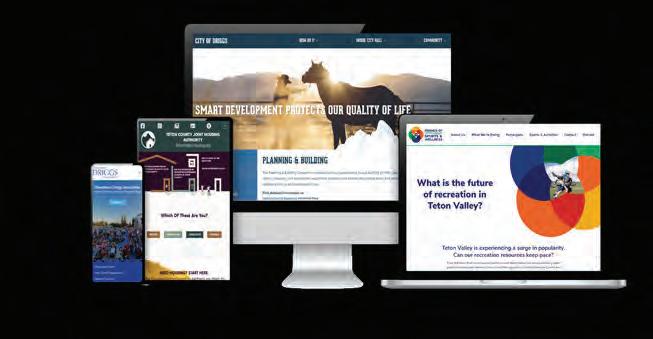
P.M. Fadden
Mark Gocke
Tom Hallberg
Meghan Hanson
Julie Martin
Michael McCoy
Kristen Pope
Linda M. Swope



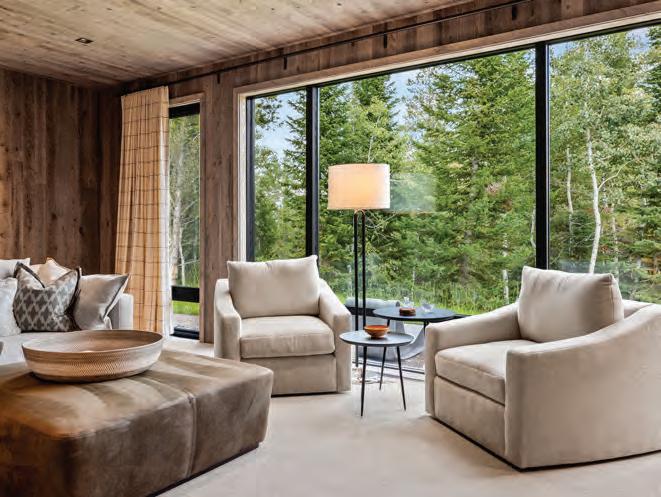
Molly Absolon
Molly (Wings Over Driggs, page 64) covers everything from outdoor risk and adventure to lifestyle and the arts in order to support her own mountain adventures.
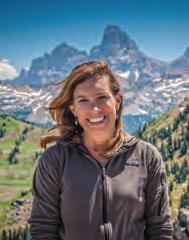
She lives in Victor with her husband—her daughter Avery is now off to college— and supplements her writing work with occasional outdoor education gigs.
Camrin Dengel

Camrin (Tele Lives, page 70) is a Teton Valley based photographer. The heart of her work centers around environmental storytelling, regenerative food systems, sustainable trades, and nature-based lifestyles. Her clients include The Nature Conservancy, Patagonia, VICE, and Friends of the Teton River.
Mark Gocke
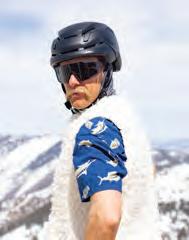
Tom Hallberg
As the managing editor of Backcountry Magazine, Tom (Ode to Peaked, page 52) spends much of his time going backcountry skiing and splitboarding or writing about other people’s adventures in the mountains. When he writes about the people and places of Teton Valley and the surrounding region, he likes to highlight stories of resilience and transformation.
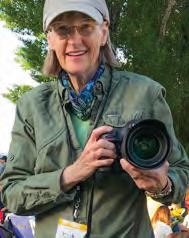
Linda M. Swope

Mark (Wee Winter Wonders, page 92) has called the Tetons home for the past 25 years. He spends much of his time photographing most anything outdoors, whether it be for his day job with the Wyoming Game and Fish Department or on any number of misadventures in the backcountry with family and friends. Capturing special moments with wildlife in their natural habitat is his passion. You can view more of Mark’s unique images at markgockephotography.com
Linda (King Sushi, page 102) got her first camera at age ten. At twenty-four, after earning degrees in psychology and sociology from the University of Texas, she began a fulltime photography career that has lasted forty-five years. She has shot everything from celebrities to rodeo to the San Antonio Spurs. Linda discovered Jackson Hole in 1988 and moved to the Tetons, where she pioneered the destination wedding photography business and shot thousands of portraits, action pics, and events in the region. She came to Teton Valley seven years ago and devotes her time to fine art photography and photographing for nonprofits. “My proudest moments are when working with our amazing nonprofits,” she says. “Pure inspiration!” Look for Linda chasing cranes or with her spouse e-biking the valley with a camera in her pannier bag.

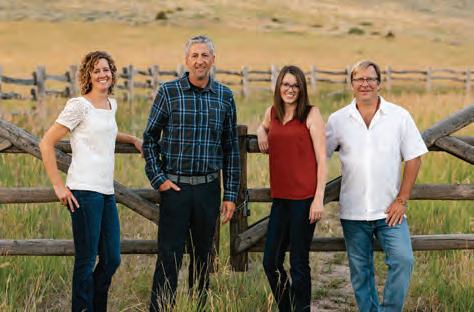


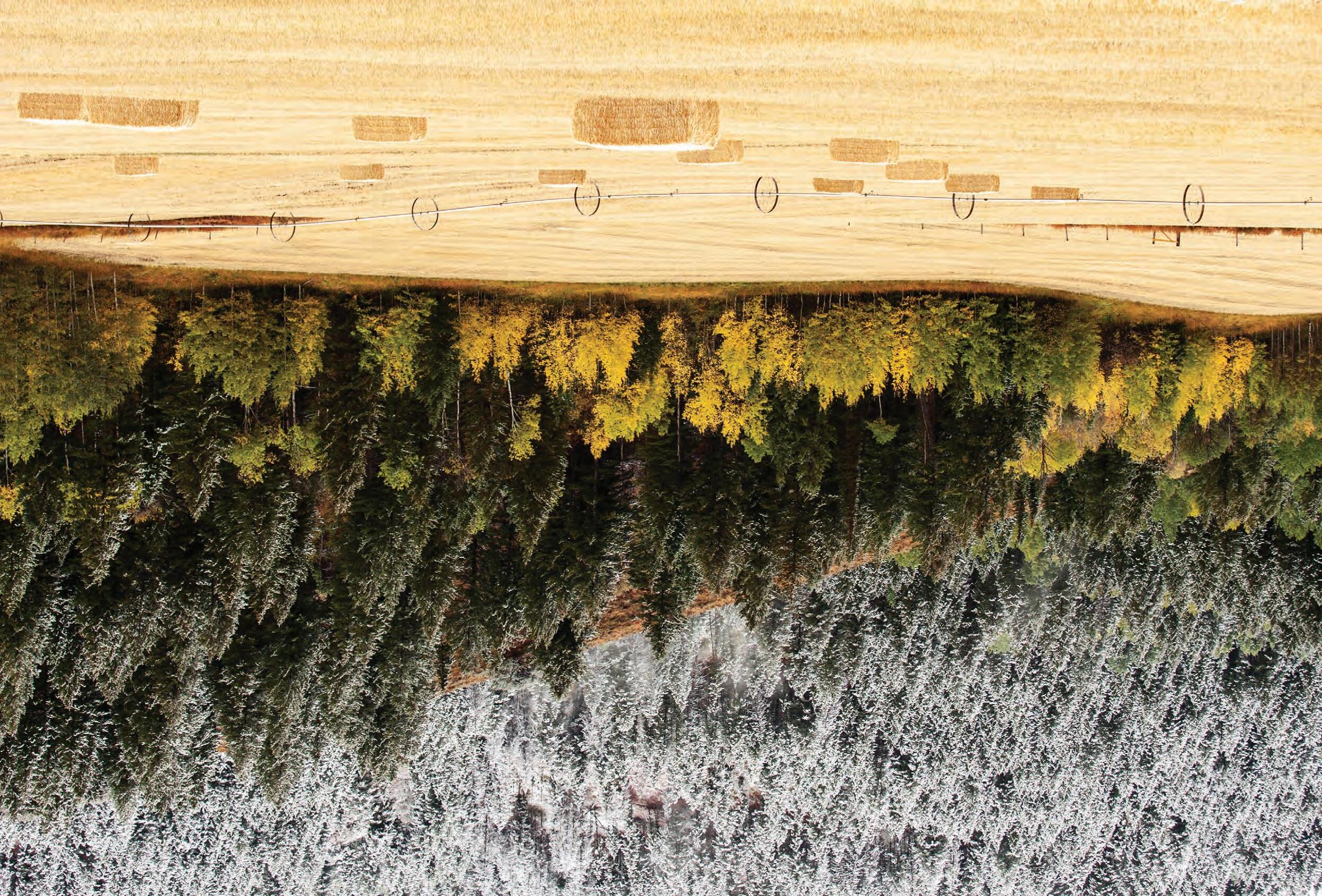






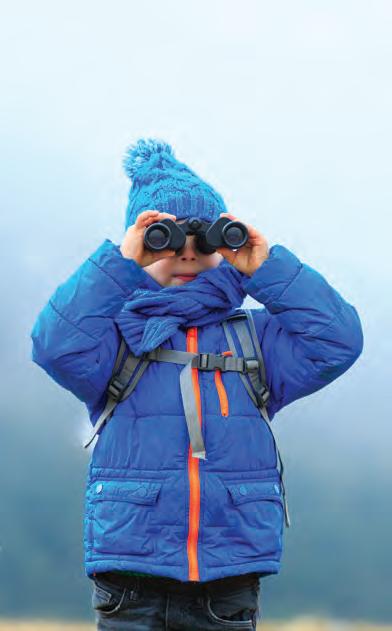
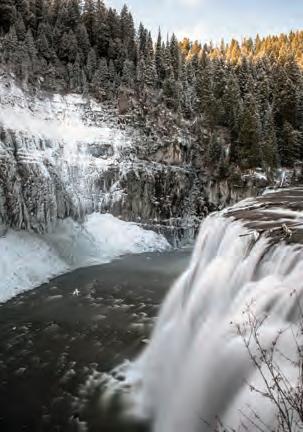


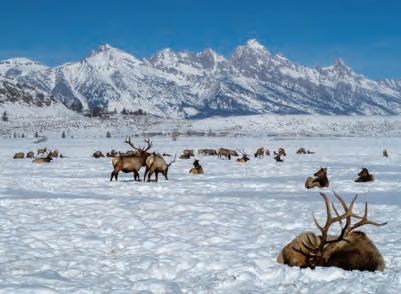

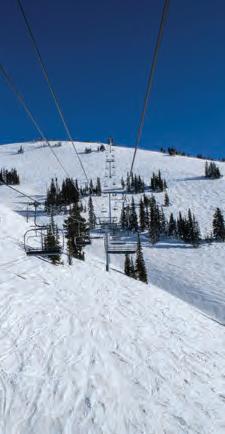


ENJOY a hearty brunch at Butter with favorites like tropical French toast or rancheros chilaquiles
WARM UP with a latte and pastry before heading to the resort with a stop at Wydaho Roasters in Driggs
KICK OFF AN EPIC ski day with a ride up Peaked Mountain on Grand Targhee’s Colter Lift (more on page 52)
TAKE TO THE SNOW on two wheels! Rent a fat bike at Habitat and explore the valley’s groomed trails
EXPLORE THE TETON OUTBACK on skis with the pro and savvy guides at Yöstmark Backcountry Tours
DISCOVER THE UNEXPECTED on a winter adventure sans skis or snowboard—find ideas on page 78
REFUEL WITH A SMOOTHIE or freshly squeezed juice at the Barrels & Bins Smoothie Bar
GRAB YOUR BINOCULARS and spot our tiny winged winter residents like black-capped chickadees (more on page 92)
STRENGTHEN YOUR CORE and more during a Pilates class at Victor’s StudioCORE Teton Valley
SAVOR A SLOW MORNING with an espresso and good company at Rise Coffee House in Driggs

VISIT VICTOR’S MAKERS DISTRICT for locally made goods from Give’r Gloves, New West KnifeWorks, and more
IMPROVE YOUR SKILLS ON SKINNY SKIS by booking a lesson with Teton Nordic Ski School
TAKE IN THE TALENT on display inside Teton Valley’s art galleries like Foxtrot Fine Art in Driggs
SATISFY THAT SWEET TOOTH with gluten-free pastries at Dulce Baking Company now open in Driggs (see page 22)
ORDER UP an amazing sandwich and homemade cookie at Figgie’s Deli & Market in Driggs
CHECK OFF YOUR LIST for gifts at Victor Emporium or Driggs’ Fireweed Shop & Studios and MD Nursery
TAKE A DAY TRIP TO ASHTON and enjoy the magic of Mesa Falls during the snowy season
HEAD OVER TETON PASS to the National Elk Refuge for a sleigh ride you won’t soon forget
SAVE THE DATE for Downtown Driggs Association’s stellar snow sculpting festivities in January
POP INTO THE RUSTY NAIL in Driggs or Victor’s Festive Living for fine décor and homegoods

21 22 23 24 25 26 27 28 29 30
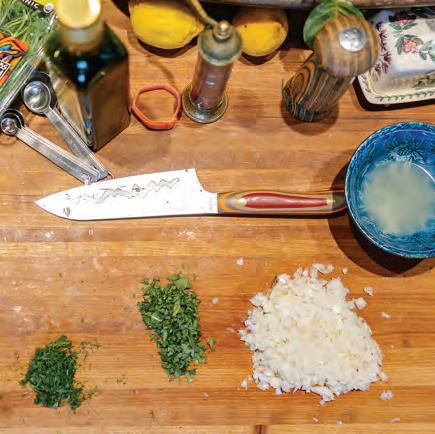
EVER HEARD OF A BONSPIEL? Watch a curling tournament or try it out yourself at Kotler Ice Arena in Victor
KICK OFF HAPPY HOUR with an ice cold brew at Victor’s Main Street hotspot, Refuge Taphouse
SIP A SAMPLE at Victor’s craft cidery, Highpoint Cider, then stick around for bingo or trivia night
OPT FOR PIZZA from any of the top-notch spots for a slice found in Victor, Driggs, and Tetonia
CATCH LAST CHAIR at Grand Targhee then nosh on the famous Wydaho nachos at the Trap Bar and Grill
SAVOR DELICIOUS Italian fare and fresh handmade pasta at Pizzeria Alpino in Driggs—save room for cheesecake
KICK BACK UNDER LAP BLANKETS on a Linn Canyon Ranch sleigh ride before enjoying a gourmet dinner
HANG WITH THE LOCALS at the Royal Wolf where “snow sagas and fish tales are told nightly”
SHARE STORIES from the slopes and enjoy flavorful Thai cuisine at Teton Thai in Driggs
CATCH A MUST-SEE PLAY, special event, or movie night with a twist at Victor’s historic Pierre’s Theatre


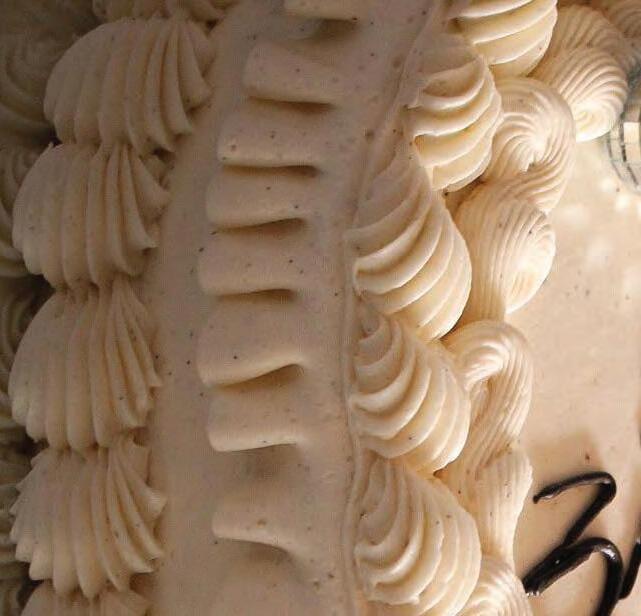

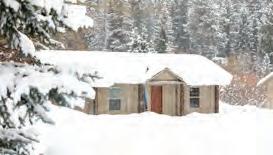

BREAKFAST PASTRIES, CINNAMON ROLLS, scones, cupcakes, and cakes … the Dulce Baking Company baked goods lineup is stacked with delicious sweet treats. And these goodies are all gluten free. Dulce Baking Company is now open inside the Depot Square in Driggs, offering baked goods for a variety of dietary needs, all filled with mouthwatering flavors.
Owner and baker Alicia Muñoz moved to Teton Valley three years ago from Arizona to be the pastry chef at Teton Springs. She then moved to home-baking and operated a much-loved stand at the farmers market, as well as taking on custom orders for weddings and events. Her baking style is rooted in providing options for all needs.
“My fiancé and I are both celiac and I also have a dairy allergy,” she says. “Making sure that am catering to special dietary needs is very important to me because I feel like it isn’t given enough attention, especially in such a small area.”
The bakery name, Dulce, is Spanish for sweet and ties into her cultural roots. “The name has been in my heart since 2015,” Alicia says. “I like that it pays homage to my Latina background.”
Alicia envisions the space as being a cozy, welcoming hub where people can grab a treat or even pick up a cake for a special event. While her menu is still in the works, there will be no short supply of muffins, dessert pastries, last-minute cakes and cupcakes, and the like.
“I want Dulce to be a space where everyone can enjoy something, because I cater to gluten free or vegan,” Alicia says. “Half my clients don’t even need those dietary things, they just enjoy what I bake. I also want my bakery to be a staple for events and special moments in people’s lives.”
VISIT: 105 Depot Street, Suite 102, Driggs Order a cake and learn more at dulcebaking.co
MOOSE CREEK RANCH has its roots in the slopes. The ranch was the site of Victor’s only ski hill, the aptly named Victor Ski Hill. In the mid-1930s, determined local residents cleared the slope on the Allen Creek drainage with the aid of $5,000 in Works Progress Administration (WPA) funds. The ski hill’s outline remains visible today.
While the ski hill is now a part of the ranch’s rich history, guests can still enjoy the surrounding winter wonderland, with complimentary cross-country ski and snowshoe lenders and access to worldclass backcountry skiing. The ranch is also centrally located between Grand Targhee Resort and Jackson Hole Mountain Resort for top-tiered powder days. Visit moosecreekranch.com to learn more.








COZY UP with a cup of hot cocoa any which way you like it. A fan of classic hot cocoa? This winter staple is made with rich cocoa powder and warm milk for a velvety sweet treat. Europeanstyle hot chocolate blends melted dark chocolate with cream, for a decadent blend of dessert and chocolatey beverage. For a spicy, savory kick, Mexican hot chocolate is topped with a dash of cinnamon and chili powder. Top with marshmallows or whipped cream. Best enjoyed fireside.

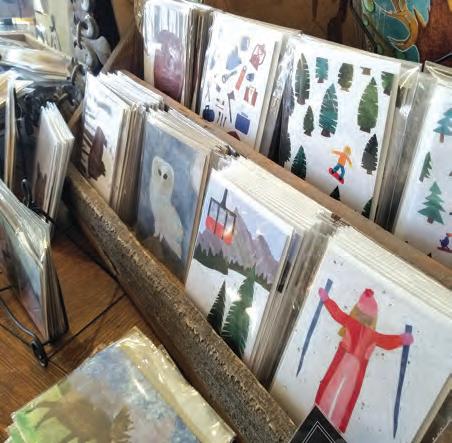
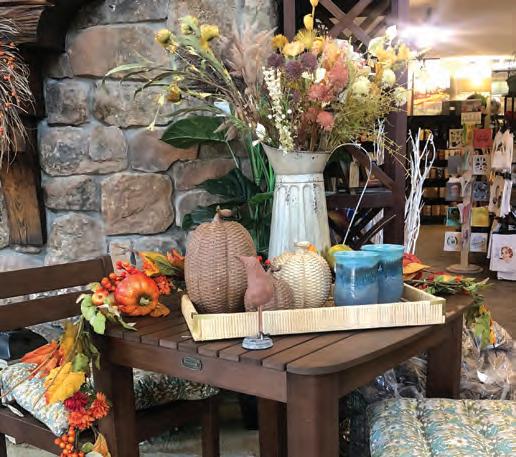



THIS YEAR MARKS THE TEN-YEAR anniversary of after-school programming for Teton Valley. What began as Teton Afterschool has evolved and grown to be an expansive nonprofit, ABC (Above and Beyond the Classroom), that crafts robust activities like time at the climbing gym and thought-provoking stem curriculum for students’ after school hours.
Charged with providing academic, enrichment, and wellness programs for at-risk students, ABC at its core is about serving the families of Teton Valley by providing kids a place to grow in a safe and supportive environment.
“Our biggest focus is community interaction and outreach. We are here, we are available, and we have space for kids of all backgrounds,” says Kami Archibald, executive director. Kami started with the program ten years ago and is now back at the helm.
“We offer a very low-cost after school and summer program, with a sliding scale between $2 and $10 per day,” she says.
“We rely heavily on the generosity of our community, with donations and grants accounting for nearly 85 percent of our program budget. This allows ABC to have high-quality programs without being a financial burden.”
The nonprofit helps fill the gaps between the classroom and after-hours care, creating a much-needed resource for working families in our community.

3 centers for ABC After School: Driggs, Victor, and Tetonia
924 free meals given to families through the Meal in a Bag program
10 hours in group mental health sessions as part of ABC After School
75 percent of students received a reduced-rate fee for ABC programs
10 community partners that support programming to ensure high-quality experiences for students
205 children enrolled in ABC After School and Summer Programs
LEARN MORE: abctetonvalley.org




Crafting Home Buying & Selling Experiences in Teton Valley
“Living your best life with the right people by your side,” isn’t a mantra reserved exclusively for our customers. As part of Engel & Völkers, our partners benefit from a brand of the highest-caliber—one known for its service, expertise, and passion—allowing you to provide exceptional client experiences by leveraging a global network of thousands that also carry the Engel & Völkers name.


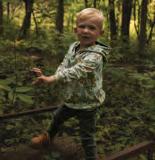

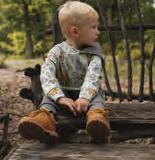


ELITE ENDURANCE ATHLETE and Driggs
resident Ian Hosek represented the United States alongside fifteen other Americans at the inaugural World Obstacle/UIPM OCR World Championships this fall in Belgium.
The first federated world championship for obstacle course racing, more than fifteen hundred athletes from fortyfour nations competed in the event. Ian contested in the half-marathon distance. He finished as the top-ranked American male in the competition and placed thirty-
Obstacle Course Racing has its roots in military-style obstacle courses, Ian explains, as well as adventure racing and mud runs. “It is a combo of running and obstacles that can be any number of things, from carrying around a bucket of rocks to crawling under barbed wire, monkey bars, swimming through things— anything that is not just running.
“It was really cool to see the international competition from that level,” Ian says. “The level of competition was just so high. Small mistakes caused several placements; that was fun to see. I am excited to utilize the skills and confidence I got from Belgium in that race.”
usaocr.org
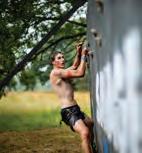

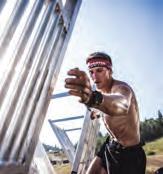













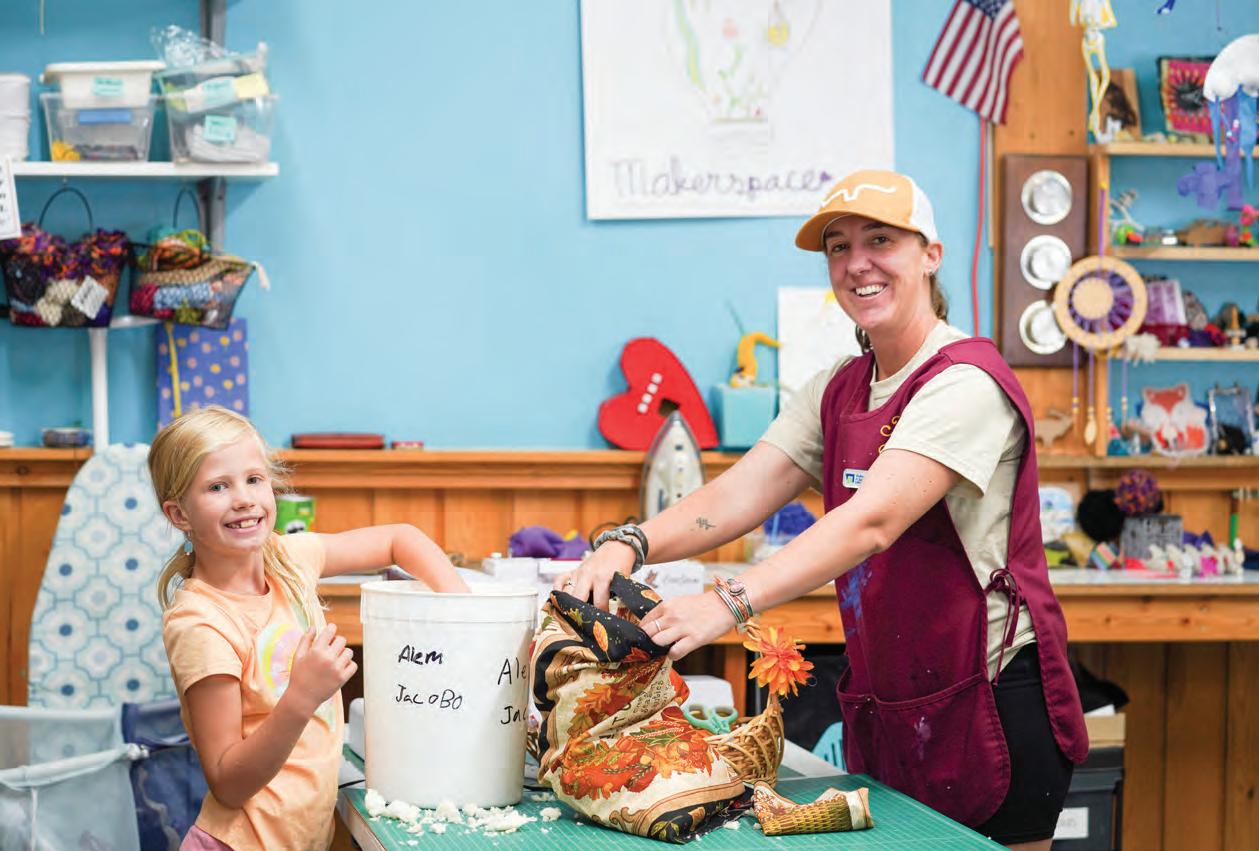



BY KRISTEN POPE PHOTOGRAPHY BY JULIE MARTIN
Makerspace fosters innovation and exploration for all ages
On a cold, blustery day, the snow is flying outside. Meanwhile, roughly two dozen kids and adults are warm and cozy inside the Valley of the Tetons Library Makerspace in Driggs, engrossed in their activities.
An area for younger kids has a toy kitchen, train tracks, a dollhouse, and building equipment to inspire creative play. Farther back, robots, electronics, and a tinkering area beckon the older crowd. Inviting creative expression from kids and adults alike are craft supplies, hot glue guns, a working kitchen, a music studio, hand tools, areas for sewing, knitting, crocheting, and building, as well as robot building kits, laser engraver, media room, and more. Makerspace is a program of the library, and every day that it’s open, an average of forty to sixty community members come by to connect, explore, and create. Makerspace users are able to collaborate with one another on projects or work independently, and many like to watch others create to find inspiration of their own.
“To fully inhabit it and know it, you have to come into it because you don’t really know what will spark your interest,” says Savannah Wake, Valley of the Tetons Library assistant director. (The library hired Dr. Chris Heilman this past summer to take on the role of director.)
Savannah says Makerspace pro-
vides a warm, safe space for community members. That aspect, combined with the creativity that is unleashed there, makes the program popular.
During the day, library staff see a good number of adults and homeschoolers using the space; then, after school, the school-aged kids show up in force. It’s available to everyone during open hours, but after school is the program’s busiest time.
“There’s no set curriculum,” says Tanya Alexander, Valley of the Tetons Library programs manager. “They [students] have their freedom to explore, they can see their friends outside of school in this really free environment, and they get to connect with people of all ages and with all backgrounds inside the Makerspace.”
It all started as a “tinker club” held a few times a week at the Victor branch of Valley of the Tetons Library in 2016. The club then moved into a space in the Driggs branch in 2018, but the location they were using was also the location for a variety of other activities, so it wasn’t perfect. When the place next to the Driggs branch became available, the


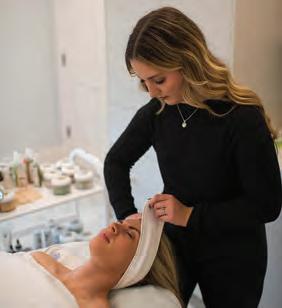

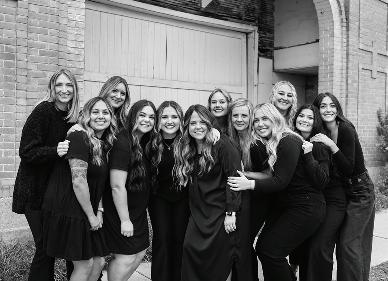



library decided to rent the additional space to use for programs like Makerspace, which moved in and opened in early 2021.
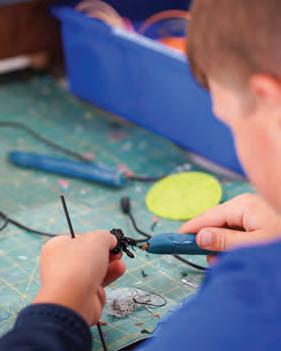

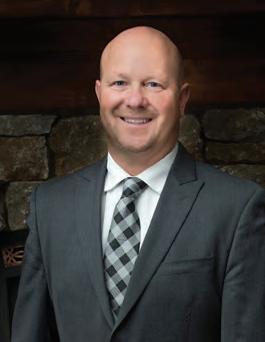
Barton J. Birch
“The
Now, the space is a free-flowing opportunity for creativity. While there are set hours and dates of operation, once someone arrives, they are free to discover for a few minutes or all day until closing time. The environment isn’t structured into one-hour or two-hour programs; rather, it allows creativity for however much time a person has available.
“There is really an ethos we’ve built in Makerspace,” Savannah says. “You don’t have to choose from only a list of five activities that we’re offering that day or anything like that. We do have staff there to help guide, but we’re not there to just give structured activity.” She praises it as an opportunity for people to learn together, adults and youth, staff and patrons, and explains that a really amazing aspect of the space is that it is an environment that’s really free to use and enjoy.
Tanya Alexander, Valley of the Tetons Library programs manager
Julie Field is a Victor mom of four.
Two of her kids are active participants at Makerspace, including her twelveyear-old son, Jameson, who attended almost daily after school in fourth and fifth grades. He especially enjoyed creating projects like a small blue snake, as well as woodburning and working with electronics.
“He was basically there every day after school,” Julie says. “He absolutely loved it. It was such a great place
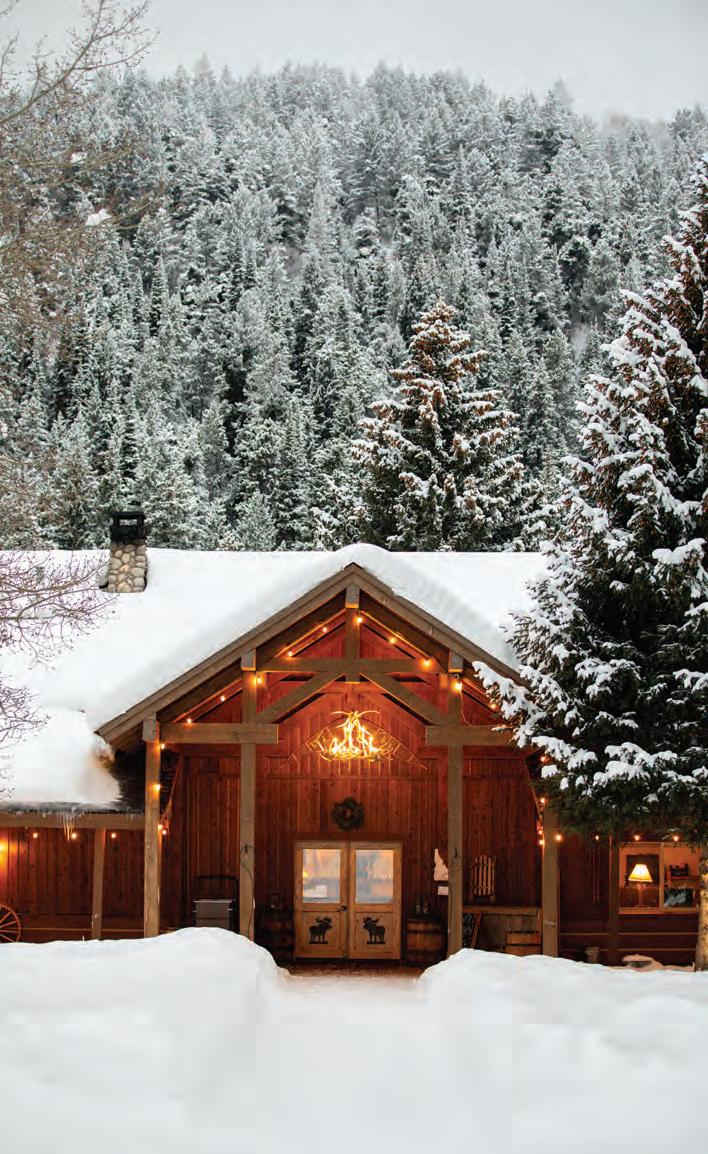

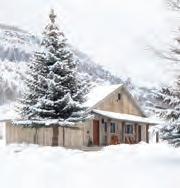



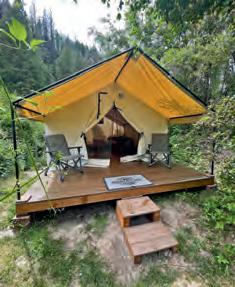
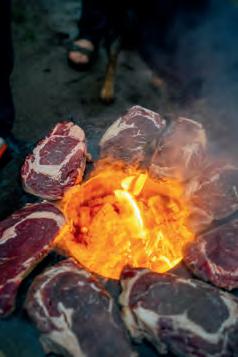





for him to go after school with some friends… It was a great, comfortable place for them to go and be together to play and explore and find some new interests.”
Providing a place for kids and adults alike to grow, explore, learn, and have access to equipment to try all sorts of different things is part of the joy of Makerspace—in addition to the human connections.


“When I go home at night, what I think about sometimes is the friendships and the connections that are happening,” Tanya says, pointing to the interactions unlikely to happen in a more structured environment, like school. “The other thing that I love about Makerspace is watching the evolution of an idea and how everybody’s brain is so active and creative in the right environment… I think that’s a re-
for everyone.”
Generational Wyoming & Montana Natives serving the Rocky Mountain West for over 50 years.




Founded in the late 1800s, 6,500-Acre CK Ranch, named after the Lindback family, sits alongside North Cottonwood Creek. The property borders approximately five miles of forest service land and boasts a renowned fishing stream, a coveted Blue Ribbon Fishery. CK Ranch is a haven for diverse wildlife and offers breathtaking views of the Wind River and Gros Ventre Mountain Ranges. This expansive property, free from conservation easements or restrictions, presents a rare opportunity for value-conscious buyers to shape their vision. Located in northwest Wyoming, it is just 1.5 hours from Jackson Hole and 3.5 hours from Salt Lake City.
Nestled along the banks of Flat Creek, just five minutes south of Jackson Hole, Wyoming, is an exceptional homestead property with sweeping 360-degree Teton Valley Mountain Views. To the north, the imposing Grand Teton graces the skyline, while to the south lies the serene Munger Mountain. The western vista unfolds the majestic Teton Range and Glory Bowl. This paradise also offers easy access to Jackson, bike trails, hiking adventures, and exceptional fly-fishing right at your doorstep. With county permits in place and three operational wells, including a robust 500 GPM well, this property is turn-key for immediate construction or a prudent investment. This represents the last sizable, buildable parcel available in the Teton Valley at this price.



While we sleep, these drivers battle the deep
BY TOM HALLBERG

Blaine Ball’s winter mornings start while most of us are sleeping—not predawn eye flutters asleep, but drooling on the pillow asleep, unconsciously stealing blankets from your partner asleep.
While we’re stacking zzzz’s, if snow is stacking up, Blaine, the former field supervisor and plow driver for the City of Victor, is pushing through snooze alarms. “We check at 1 a.m. and make a determination so that we can actually be hitting the road by 2 a.m.,” he says. Blaine is now the Teton County Road and Bridge supervisor.
At the same time, or close enough for those of us in the Sandman’s realm, dozens of other plow drivers hop in their rigs for the cities of Driggs and Tetonia, the Wyoming Department of Transportation (WYDOT), and the Idaho Department of Transportation. “Our goal is to get most of the major roads open before people start heading to work between seven and eight o’clock in the morning,” says Darryl Johnson, public works director for Teton County, Idaho.
Things haven’t always been this way. Snow removal as a government service in the United States is about a century old, roughly the same age as jazz music, Band-Aids, and vacuum cleaners. The first known snowplow was piloted behind a horse-drawn cart in Milwaukee
in 1862. In the following decades, snowremoval devices improved, moving from the horse-drawn plow to a horsedrawn roller, a large drum that flattened snow on walking paths; to plows on train engines; and, finally, in the 1920s, to a plow blade on an automobile.
That last iteration led, over the course of a century, to modern hydraulically controlled plows. Today’s drivers can use small-to-medium-sized blades, which attach with brackets to pickup trucks, or commercial grade plows that include standard blades, grader wings for shaving tall snowbanks, and rotary plows (think a snowblower on steroids times two).
In Teton Valley, a patchwork of agencies divides roads by jurisdiction. The county employs nine drivers within the County Road and Bridge Department who collectively are responsible for more than two hundred miles of roads. Towns plow within their city limits, the state of Idaho covers major highways, and WYDOT plows Highway 22 over Teton Pass, a crucial artery for Teton Valley’s thousands of commuters. Subdivisions and neighborhoods


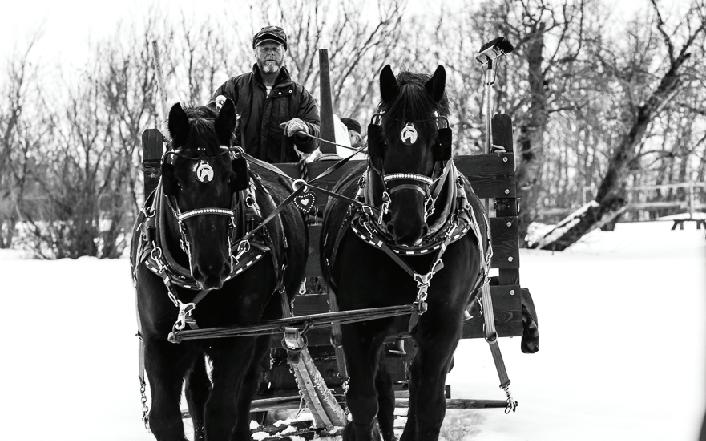



outside town limits are responsible for their own roadways, and most pony up the money to pay a private contractor to provide plowing services.
Public plowers start with the largest roads, then work toward smaller ones, traveling in the most efficient manner. “We do the major and minor collectors and then we all allot the arterials,” Darryl says of county plowing. For those not familiar with public works lingo, those include streets like Ski Hill Road and 5000 South to start. Victor, now with a full public works crew, is starting enhanced plow services this year, which means on days without a big storm, they will remove snow and haul it away. Except during blizzards and drawn-out storms, crews are done by midday, with just enough time to go home, see their families, and hit the sack early to be ready for the next day.
Regarding Teton Pass, WYDOT foreman Troy Jerup says crews hope to make one pass before the morning commute, then at least one driver is on the pass all day, every day. During storms, they simply try to keep pace with precipitation; between dumps, they perform maintenance, clear ice from the road surface, widen the travel lanes with the rotary plow, or grade the banks. WYDOT runs two shifts on the pass, morning and evening, so there’s always coverage except for a few hours at night.
The “schedule”—not always knowing when you’re going to work, waking at 1 a.m., working days on end during storms—can be tough on drivers. Constantly changing work hours means drivers can’t bank on a full night’s sleep. “There’s a lot of times that I’m fighting sleep,” Blaine says. “I’ll just be up for 24 hours, and I’ll sleep the next day.”
In addition to long hours, unpredictable schedules, and lots of overtime, plow drivers say their public interaction can sometimes include fewer grateful ‘thank yous’ and more impassioned complaints: My road hasn’t been plowed. The driver left a berm in my driveway. Plowing makes too much noise in the middle of the night. In part due to such complaints, drivers don’t always think the public understands their job and what they’re doing in those long hours in the dark.
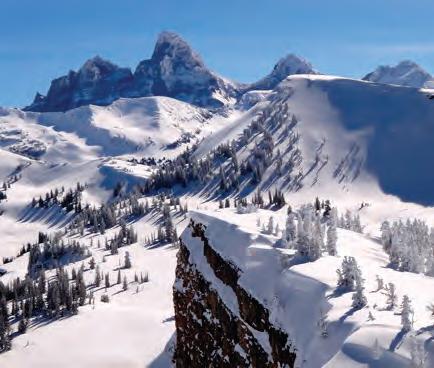
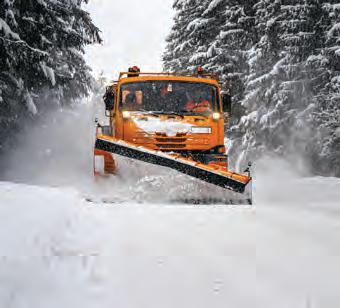

A patchwork of agencies divide roads by jurisdiction. The county employs nine drivers who collectively are responsible for more than two hundred miles of roads.
So, what are our responsibilities as residents? Barring becoming heavyequipment operators ourselves and bolstering driver ranks that have dwindled in recent years, there are a few things we can do. First, leave nothing in the street. Towns forbid on-street parking at night, but trash cans and recycling bins placed in a plow blade’s path require drivers to slow down and go around. Multiplied by dozens of homes, that greatly increases the time it takes to cover a route.
Second, clear the berm left in your driveway. That’s your job, no matter how much you wish it wasn’t. As part of that, don’t push snow back into the street. Snow pushed into the plow’s path can freeze and cause the blade to skip, making it less efficient or prone to breaking.


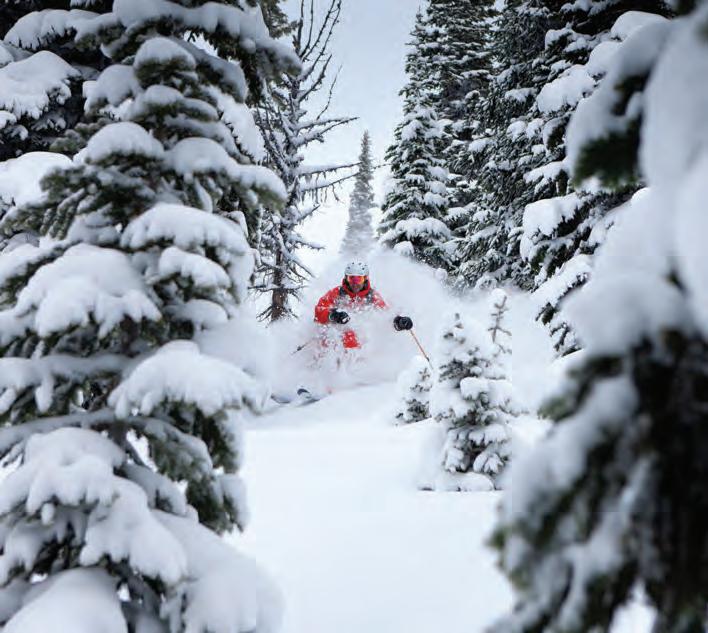


“There’s a lot of times that I’m fighting sleep. I’ll just be up for 24 hours, and I’ll sleep the next day.”


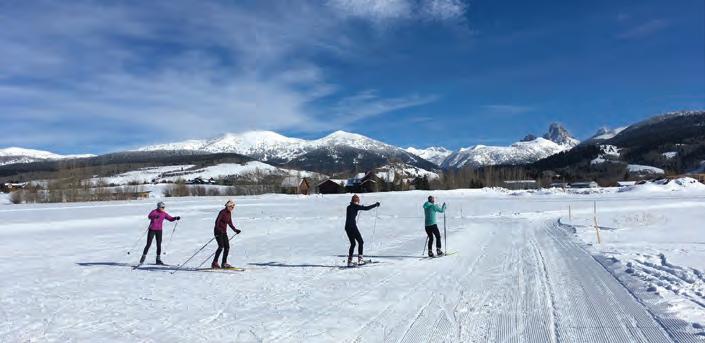

Third, be careful when passing plows on the street or highway. Troy, the WYDOT foreman, says drivers on the pass often make dangerous passing maneuvers that sometimes force plows to stop completely. Once they’re stopped going uphill, plow operators often need to put on traction chains to resume plowing, creating headaches for them and drivers alike.
Fourth, have empathy. If your road doesn’t look plowed, you might have been first, and during a storm it might have filled back in. Or blizzard conditions might mean plows aren’t running at all. Dealing with the inconvenience of snow-filled roads is simply part of living in a remote mountain town, a decision we implicitly continue to make by staying in Teton Valley. Unlike people living in the mountains at the turn of the twentieth century, however, we don’t have to hitch up a wagon team to go to the market for eggs.
So, the next time you see a plow driver, wave and say thanks, if you can. After all, we’d never get anywhere around here without them.



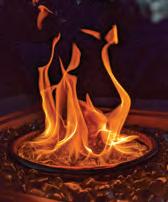








BY MOLLY ABSOLON PHOTOGRAPHY BY CAMRIN DENGEL
Old-World farming values meet modern sustainability
Ursula roots around amidst a lush crop of alfalfa, snorting as she pushes aside the dirt with her snout. At about 700 pounds, she moves with a distinct but dignified waddle. She’s the queen pig—the best mother—at Late Bloomer Ranch in Driggs.
Corinne McAndrews leans over the knee-high electric fence and rights an A-frame shelter that hides a litter of football-sized piglets. The piglets are destined for the butcher, but in the meantime, they roam the alfalfa, tussle with their siblings, roll in the dirt, and bask in the sunshine.
Corinne and her crew move fences for the ranch’s pigs, sheep, and chickens every three days to ensure there is always fresh forage for them, and so the alfalfa can rebound from being grazed. It’s an intensive form of raising animals and requires a lot of labor, but Corinne says you can tell the difference in the meat.
“Pigs have strong herd dynamics,” she says. “They are happiest when they are in social groups. Here they get to live with their closest friends and family. They sleep on top of each other in a big pig pile. They aren’t stressed out. That’s why their meat is so good.”
Corinne came to agriculture late— hence the name of her ranch. She grew up in Baltimore in a classic white-collar world, but she was a troubled kid, and graduated from high school “by the skin of [her] teeth.” Looking for some direction in her life, she took off to travel in
Europe with a friend and ended up volunteering on a farm in Spain.
“It sounds romantic,” Corinne says. “But it was not a world I was used to. There was no electricity or hot water and hardly any internet. I was crawling out of my skin. It wasn’t as if I discovered an immediate understanding of my place in the world from weeding onions, and it definitely wasn’t what I wanted to be doing. But it was absolutely what I needed.”
Corinne returned to the United States, took classes in agroecology, and moved to California to work on a vegetable farm. Reflecting on her time, she realized she thrived on the hard work of agriculture.
“I got addicted to the gratifying nature of the work,” Corinne says. “It can be physically demanding, but there is something deeply connecting about growing your own food. I like going to bed tired after a hard day on the farm.”
Corinne found herself drawn more to animals than vegetables as she learned about their importance in the agricultural cycle. The farm in California was proving to be a less than healthy work environment for her, plus she was ready to work for herself. So
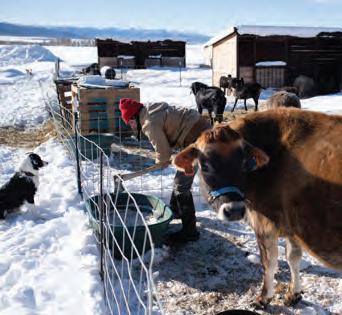








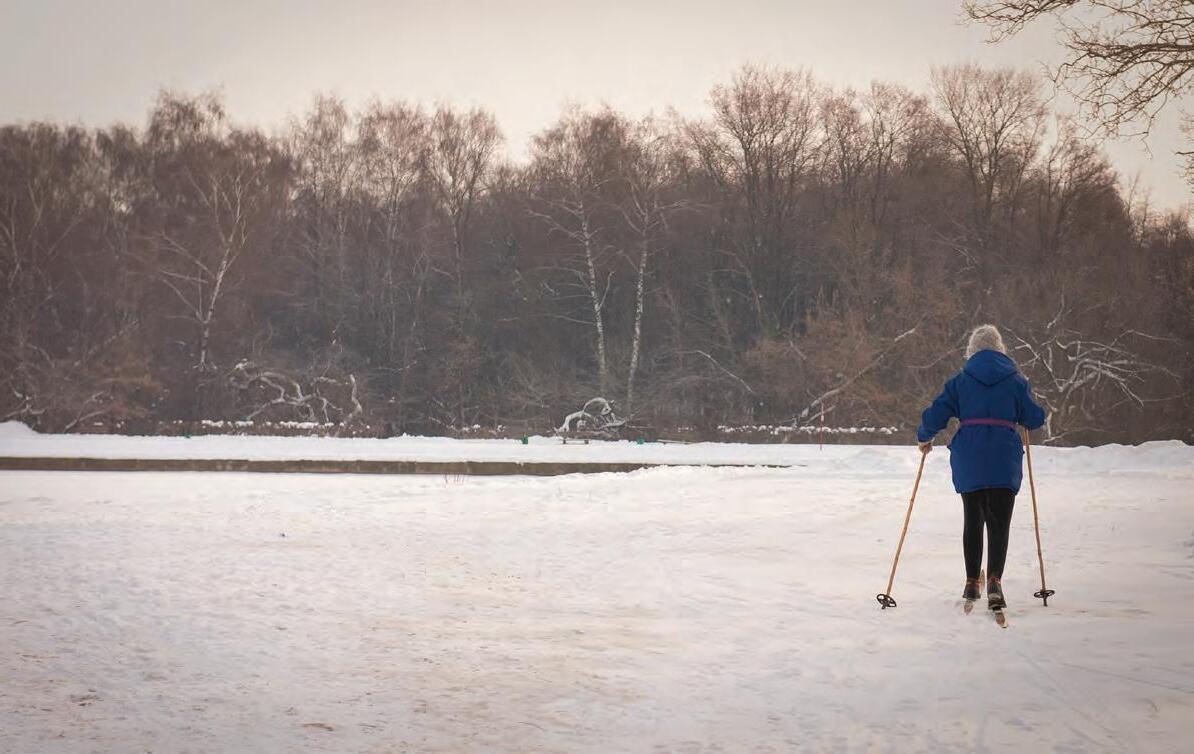
she, and her husband, Mike Woodruff, started looking for land where she could have her own ranch and he could find work as an architect. They moved to Teton Valley in 2019 and now live on Late Bloomer Ranch with their threeyear-old daughter, Wilhelmina.
The ranch near Driggs has proven to be a good fit. Late Bloomer is sup ported by a thriving group of farmers who are also trying to raise food with out any chemical treatments and with minimal mechanical interventions. The community in the valley supports lo cal agriculture and is willing to pay for food raised with love and compassion. And Corinne’s husband has work as a designer with Prospect Studio.
Corinne’s vision for Late Bloomer is utopian. She wants her employees— ranch foreman, Elliana Araujo, and allaround hand, Matt Geurink—to feel as if they have fulfilling, well-paid, sustain able careers on the farm. They aim for forty-hour work weeks, and Matt has housing onsite. Many farm decisions are made by consensus.


“Corinne cares about our wellbeing,” Elliana says. “She views success as a blessing that might result, but not as a goal or purpose. In fact, I don’t think she thinks about this endeavor in terms of success; she just wants to feed herself and her community.”
Late Bloomer’s team is youthful and confident. They believe that the loving way their pigs, sheep, and chickens are treated translates into nutritious, tasty meat. All the farm’s animals roam freely in roomy pastures. They are fed highquality local produce and milk in the winter. Corinne chose a butcher in Blackfoot, Idaho, who she believes treats the animals with care and integrity, which eases their stress. Late Bloomer bacon is cured in a salt brine devoid of chemicals.
“We raise animals that have histories and lineages of growing on pastureintensive diets, raising their own young, and thriving in cold and mountainous conditions,” Corinne writes on Late Bloomer’s website. “This is the basis of animal welfare at Late Bloomer Ranch: Animals express their inborn behaviors right where they are. How does this translate into your experience as an eater? Flavor. A richness and complexity not found on grocery store shelves. Nu-


trition. Higher omega-3 fatty acids and fewer omega-6s. More protein, more Vitamins E and D, more unsaturated fats. A cleaner eating experience that can be felt in the body.”
Corinne points to Ursula snuffling around in the dirt.
“We never use nose rings on our pigs,” she says. Nose rings are used to prevent pigs from rooting, which destroys fences. According to Corinne, nose rings make life easier for producers, but prevents the pigs from following their natural instincts and cause them stress, which she believes affects the quality of the meat they produce and the health and happiness of the young they raise.
“Pigs are happiest when they are in social groups. Here they get to live with their closest friends and family. … They aren’t stressed out. That’s why their meat is so good.”



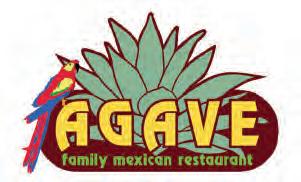

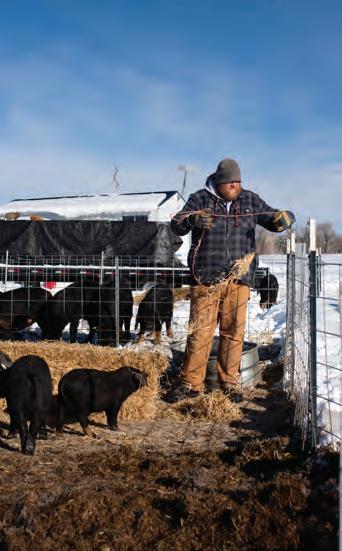
“Corinne




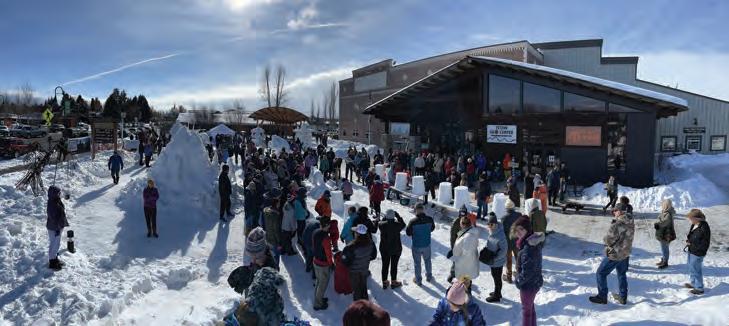
And yet, despite their willingness to work hard, Corinne says her team holds a boundary at when to call it at the end of the day. She doesn’t want to rely on underpaid, overworked seasonal labor to make her farm thrive.





“If something doesn’t get done, that’s okay,” Corinne says. “We still have tomorrow.”
Late Bloomer Ranch pork, eggs, seasonal cut flowers, and wool are available to purchase online. Bulk boxes can be delivered to the Lower 48 and all items picked up locally. Pick up locations include Thursdays at Food Shed Idaho in Victor (owned by Corinne’s aunt), Tuesdays or Fridays at the ranch, or Wednesdays in Jackson at the Home Ranch Parking Lot.



























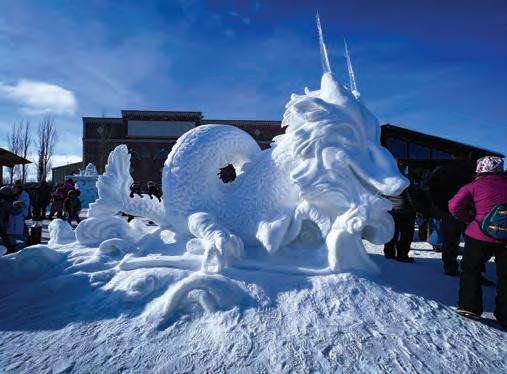
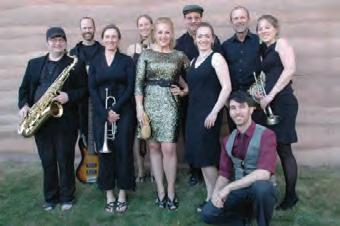






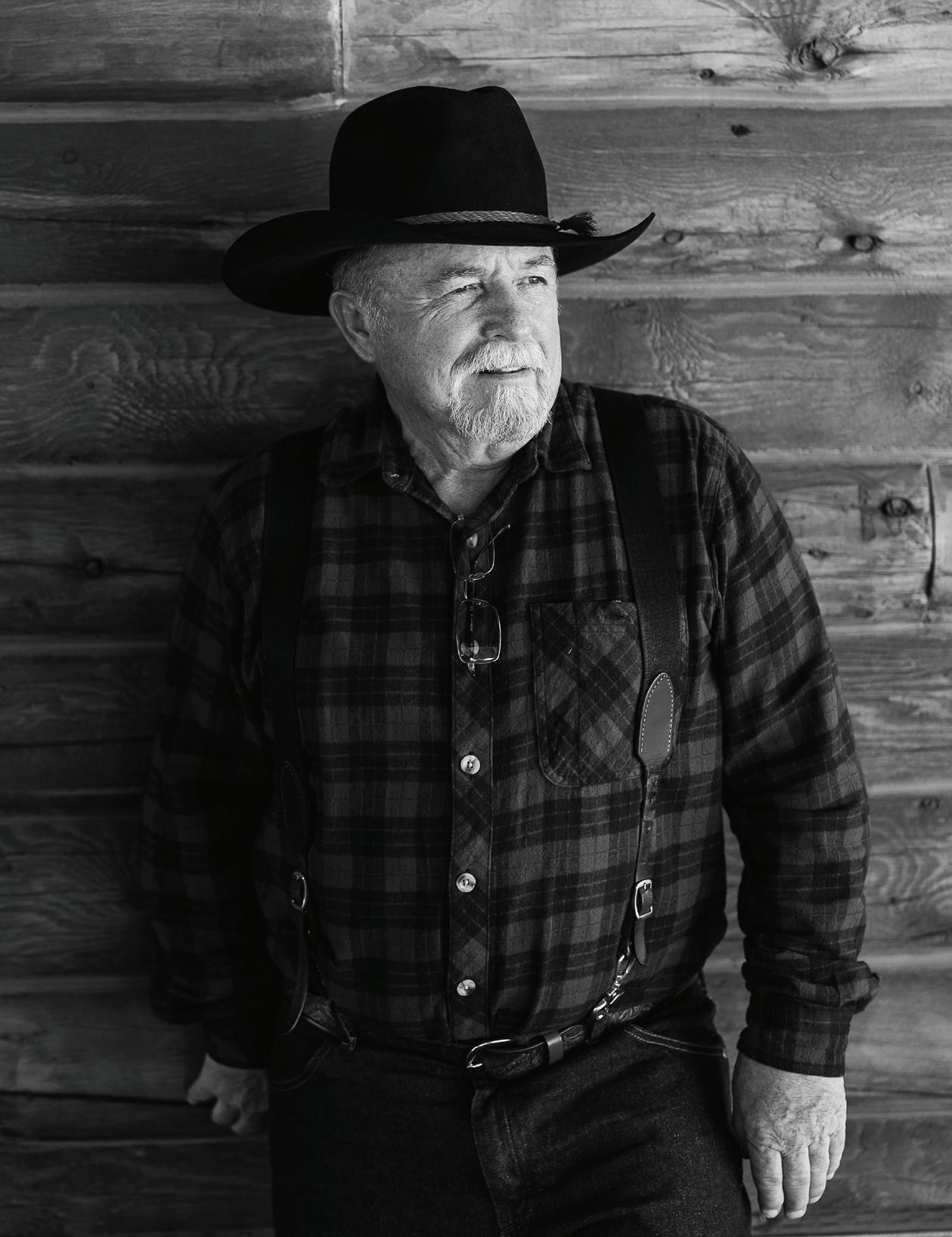
BY MOLLY ABSOLON PHOTOGRAPHY BY LARA AGNEW
‘Word wrangler’ Bryce Angell tells it like it was … without the cuss words

Bryce Angell is not your classic Hollywood Cowboy. “I’m not one of those tall, lean cowboys in Wranglers that you see in movies,” he says.
But despite not fitting into the stereotypical physical mold, Bryce, age seventy, has earned his cowboy bona fides. He grew up around horses—at times his family had as many as seventyfive head on their farm near St. Anthony—and he worked as a ranch hand for his father’s hunting and outfitting business in Island Park when he was a kid. When he was seventeen or eighteen, he says, he became a farrier. “I was already shoeing everyone’s horses in the neighborhood,” he says. “Horses were part of my work and part of my play, too.”
In fact, it was horses that brought him to cowboy poetry, and in this way, he may be more of a classic cowboy than he lets on. His first poem, entitled “Friends,” came to him while he was sitting around a fire on an overnight horseback trip in Utah in 2015. That’s the way cowboy poetry is said to have originated.
According to the Western Folklife Center, cowboy poetry started to emerge in the late 1800s, growing out of the western tradition of cowboys and cowgirls gathering around campfires along the trail to tell stories, sing songs, and fabricate tall tales. The poems
helped create the romantic cowboy archetype—the image of a strong, silent, independent person, traditionally a man, who is bonded to his horse—that has become entrenched in the American psyche.
Cowboy poetry has grown more standardized over time. Today most is written in rhyming couplets with a rousing rhythm that lends itself to oral presentation. There is also an unspoken rule about subject matter. To be a cowboy poet, you have to write about ranch life. Robert Service’s poem, “The Cremation of Sam McGee,” shares a common structure with most cowboy poems, but because it is about gold miners in the far North, it falls outside the genre.
“Cowboy poetry has got to be country,” Bryce says. “All my stuff is country. If you have a horse or cow or some old timer involved, you have something to work with. Most of my poems are about things that happened to me growing up.”
One of his most popular poems is about branding cattle. He was a young kid and found himself becoming disturbed by the cattle’s constant lowing and obvious signs of distress. His



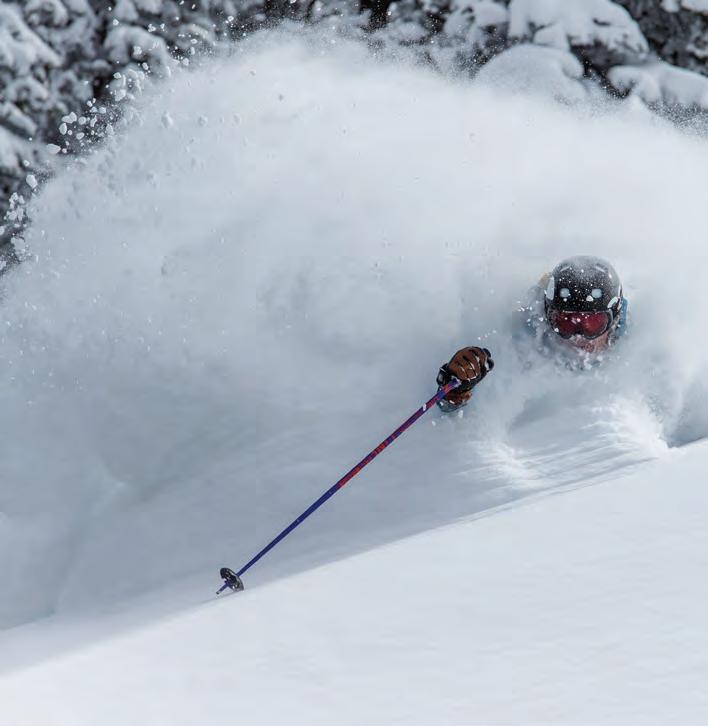


“Cowboy poetry has got to be country. All my stuff is country. If you have a horse or cow or some old timer involved, you have something to work with.”
Bryce Angell
cousin insisted the branding didn’t hurt the cows much, and convinced Bryce to feel what it was like by touching a piece of red-hot wire to his chest. Needless to say, that brand hurt Bryce a lot, but in keeping with tough-guy cowboy tradition, as he wrote in his poem, he managed not to cry. Today, that story is one his grandchildren love to hear over and over again.
After he wrote “Friends,” Bryce jumped into his newfound passion with both boots and began writing poetry every day. His wife, Terri, who is a schoolteacher, made sure he “crossed his t’s and dotted his i’s,” and in the process, became Bryce’s most reliable critic and editor. Soon he decided he wanted to share some of his work, so he began looking for places to publish. One of his first outlets was the Teton Valley News
“At the time I had three newspapers
printing my poems,” he says, “when a lady from Montana called and asked if I wanted to be part of a cowboy poetry group. I said yes, of course. But then I hung up and realized I hadn’t done anything like this before. I was sick about it.”
Bryce isn’t one to shy away from challenges, however. He’s a born storyteller and likes people, so he figured he might as well reach out to one of his heroes for guidance if he wanted to pursue his poetry dreams.
“I decided to email Baxter Black, the cowboy poet of cowboy poets,” he says.
“I wrote, ‘Here’s my dilemma, you don’t know me from Adam, but if you have a minute, I’d appreciate your advice.’ Baxter got right back to me, and we ended up talking for over an hour. He gave me the best advice in the world.”
The key thing Bryce took from that conversation was not to swear in his poetry.
“Baxter said if you cuss in your poetry, you sound like you are trying to come across as a tough guy, but usually it has the opposite effect.”
Baxter also asked if Bryce had done any events before or shared his poetry.
“Then he said, ‘You are already at the bottom so you have no where to go but up,’” Bryce recalls, laughing.
Baxter died in 2022, but Bryce still treasures his exchange with him. He was recently recounting the experience with his grandson, who was decidedly unimpressed, having never heard of
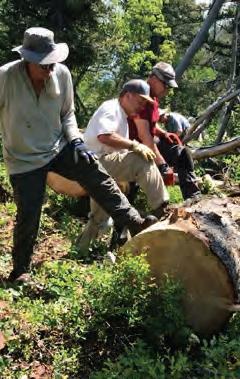
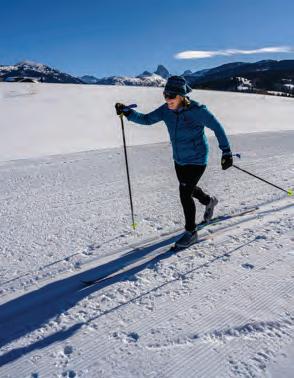
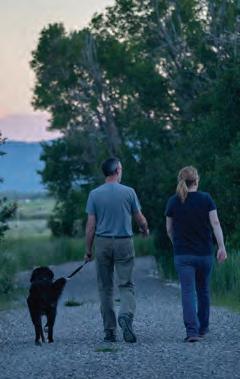

Baxter Black. But his grandson is an avid soccer fan, so when Bryce compared Baxter to a favorite famous soccer player, his grandson understood. Baxter was a megastar.
Inspired by his late hero, Bryce’s poems are funny, self-deprecating, and full of insights into the little things in country life that result in humor, love, and wisdom. He writes about everyday experiences—with the country caveat—that his readers can relate to. With a lifetime spent around horses, he’s got plenty of material to work with, even though he sold his last one a year ago.
“I used to always have at least one horse or colt to work with,” Bryce says. “But I don’t do that anymore because of my age. These days, my hobby is writing. That keeps me busy.”
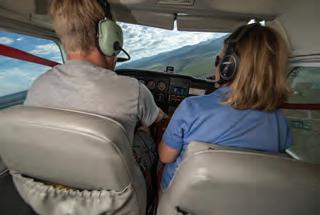
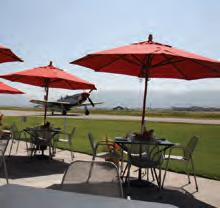
Bryce’s poems are in sixteen newspapers and five magazines, one as far away as Florida. Bryce retired from a career as a registered nurse at Eastern Idaho Regional Medical Center in 2019, though he continues to work eight hours a week at the Ashton Living Center. He lives on his father’s old outfitting base in Island Park in a house he and his wife built a few years ago. The couple have twenty-five grandchildren,



so family and house projects keep them busy. Plus, every day Bryce searches his memories and writes a poem about his beloved country life.


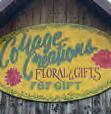



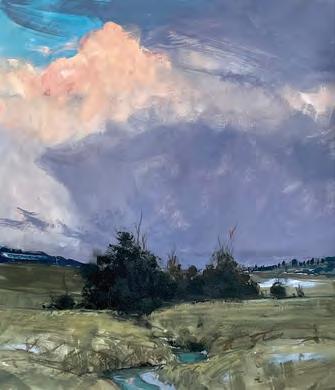
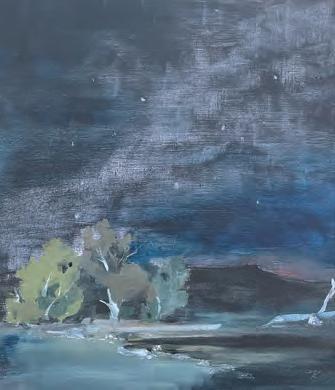
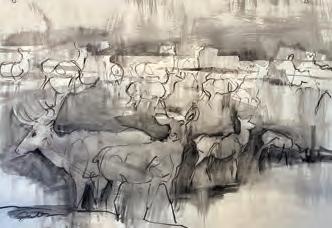


“City life is different from country life,” Bryce says. “I think that’s why city people love cowboy poetry. It’s kind of romantic for them.”






BY TOM HALLBERG
Grand Targhee Resort’s Peaked Mountain once offered a steep north side that held good snow for weeks after a storm accessible only to those with backcountry prowess or a seat on a snowcat. Now, with the Colter lift in place, the experience has shifted to a shared love of this special mountain.
My first two weeks at Grand Targhee Resort were a ski bum’s fever dream. It was early December 2012, and I was acclimatized to the frenetic pace of ski-school work at Oregon’s Mount Bachelor, where we taught constantly. In contrast, each day my new bosses at Targhee turned me loose—it wasn’t peak season just yet. The holidays would be go-time, they said, so go learn the mountain while you can.
My bank account suffered; I did not. Daily storms pounded the westfacing resort until I was convinced I had fallen through the wardrobe into a Narnia of free refills. Each day, I learned the names and locations of runs and nooks and crannies. Slim’s Shot. Patrol Chutes. The Good, the Bad, and the Ugly. Painted Pony.
Names like these, and the familiarity to be able to find them and know when they are good, are currency among a mountain’s regulars, proof you have put in the time. One name, however, remained shrouded in mystery to me. Peaked.
As I learned the resort, I recognized that the mountain is predominantly intermediate terrain. You can, however, find drops, go wild off The Ugly’s cornice, or speed down groomers on
Blackfoot. Just as I was wondering how to expand my horizons to challenge myself, I glimpsed Peaked’s north side on the first clear day since I’d moved to Idaho.
Visible from the Dreamcatcher lift, the craggy face is anomalous at Targhee, featuring steep slopes cleaved by cliffs, some manageable, others closed because of their sheer size. Most often, this part of the mountain was the spot where ski and snowboard competitions were hosted or where snowcats headed to take paying customers on a private day exploring the powder-filled area on the southwest side.
How do I get there? I asked anyone in sight. Easy, take the Mary’s bootpack, ski the saddle, boot up Peaked, then drop through a gate into one of the three named runs: Pink Slip, Bobcat, and Reliable.
Then, over the holidays, before I could use that newfound information, work came in a furious stretch so intense that by New Year’s Eve I fell asleep at the dinner table and missed the midnight festivities. My bank account grew; I suffered. But all things end, and in mid-January the holiday crowds went home.
Between school groups and week-
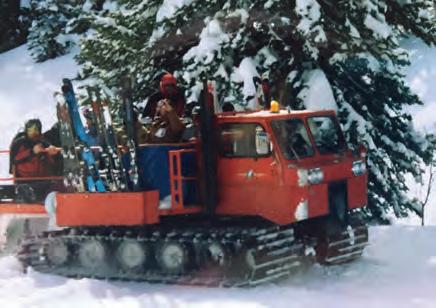










end lessons, we returned to a schedule most ski bums would prefer. When I had no lessons, if I hustled, I could make two Peaked laps in the morning and another two in the afternoon. I dragged ski school compatriots with me, promising great snow (true) and an easy hike (not always true). In the face of my fervor, some partners returned to the ease of spinning lifts, but I continued to hike, except on powder days.
I had moved to Driggs because I’d heard the backcountry skiing in the Tetons was the best combination of access and quality in the country, at least in the Lower 48. But I was working at the resort five to six days a week, sneaking in predawn Teton Pass laps, then bagging long tours on my few days off. Hiking Peaked scratched not only the itch for more challenging terrain, but the need I felt to move my legs. These walks were certainly not the only factor, but that winter proved to me that I preferred the solace of walking all day for a run or two over repeat rides on conveyor-belt chairlifts.
Those days look a little different now. Targhee is busier, but the new Colter lift opens the mountain up to less congestion. The lift takes riders to the former cat-served skiing area on Peaked’s southwest flank above the Sacagawea lift. It also offers lift skiers access to the north side and has gates that reach another eye-opening resource: the backcountry terrain that drops toward Teton Canyon, which includes large avalanche paths and technical shots not to be taken lightly. Now, hundreds each day can cruise right past the top of Peaked’s steeps, same as they can access the south bowls in the mountain’s backcountry. Increased access inevitably brings increased use.
All ski resorts change. In an era of conglomeration, big companies are buying cool, small resorts to add them to their portfolios. To stay relevant in that changing world, Targhee must grow and change.
There are also winners in this change: other skiers and riders. The area the Colter lift now accesses was once available only to those able to pay
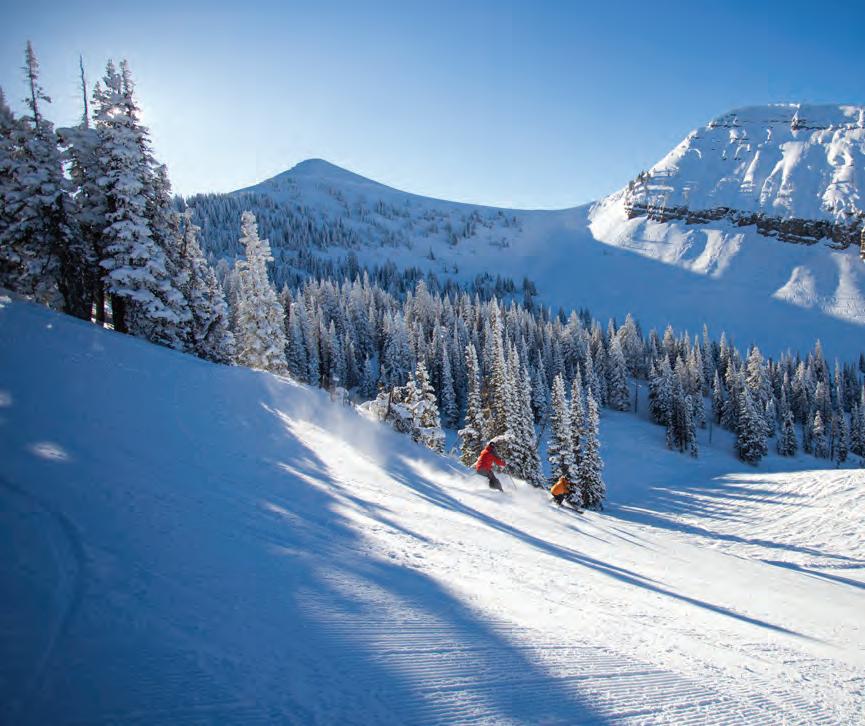
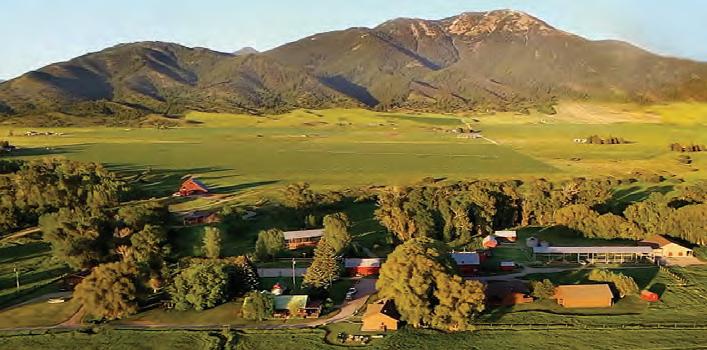
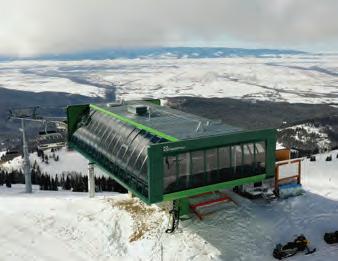
hundreds of dollars for cat skiing or with the skills, backcountry knowledge, and ability to hike there. Access was, by nature, exclusive to those with money or physical ability and a high level of avalanche safety knowledge. Now, the Colter lift offers more intermediate terrain and skiable acres (a bonus as Targhee gets busier), as well as the resort’s longest vertical run. What was once an exclusive domain is available to anyone with a season pass or lift ticket.
For Teton Valley groms looking to test their steeps game without heading over the pass, the north face is a quick skim from the top of the lift. This is not to say that any of those groups should poke their heads into terrain they are not educated or prepared for, but if a kid gets to ski Reliable without having to walk an hour to do it, she is going to become a better skier more quickly.
Rationalizing this doesn’t necessarily assuage my feelings of loss, but it helps. The mountains are constant, unchanging; our experiences in them are not. I am not the same person I was that first winter in the Tetons. Like I did with
the runs at Targhee, I’ve learned the linguistic and geographic currency of the backcountry, where steeps abound, and powder lasts all season if you look hard enough.
Perhaps that’s the lesson for me from this change: Peaked was an important step and place in my understanding of what I want from a life spent in the mountains, a confirmation that my preferred day is taking a walk, putting in some work, to find reliably good snow.
Now Peaked serves a different purpose for a greater number of people who will get to experience and understand how special the mountain is.


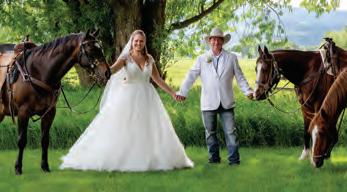


There is so much to explore and enjoy in Teton Valley this winter.
Our remote, rural valley may take a little extra effort to navigate, but the rewards are great.
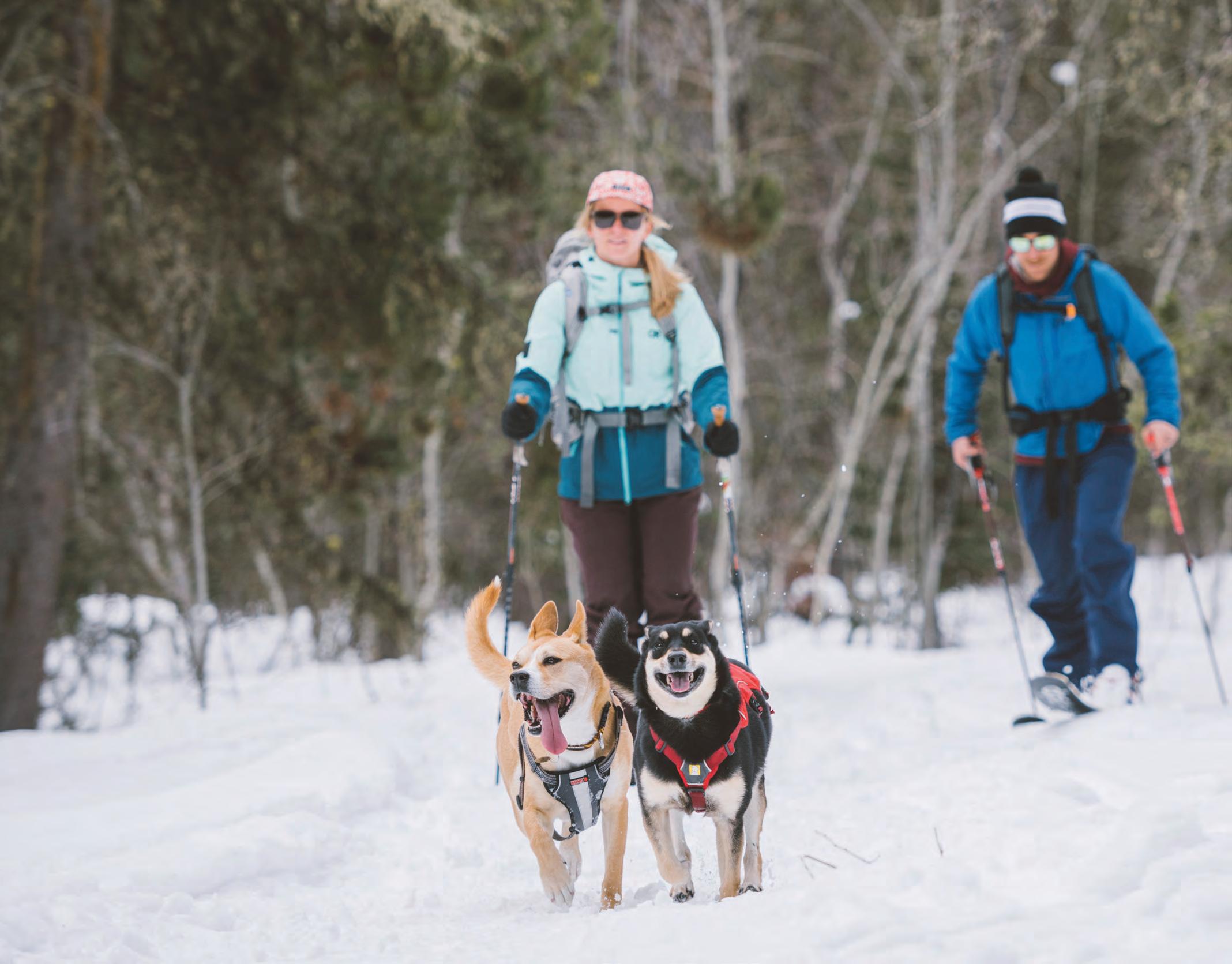
Winter is a celebrated and popular time of year in Teton Valley. Here are a few tips for navigating the snowy season, while being a great visitor:
• Be early, for everything. Whether it’s hitting the slopes at the resort or going out to eat, get there early and you’ll be amply rewarded.
• Be self-sufficient. Carry water, snacks, extra warm clothing, and first aid supplies on your adventures.
• Be prepared. Start at the Geo Center, Forest Service office, and local outdoor shops and load up on local intel for your winter adventure.
• Be patient, kind, and respectful of the people, animals, and ecosystem
• Drive slowly. As we like to say, you didn’t come here to be in a hurry.
• Seek out local goods and be generous to the hardworking staff.

Book your stay now!

BY KATE HULL PHOTOGRAPHY BY LARA AGNEW
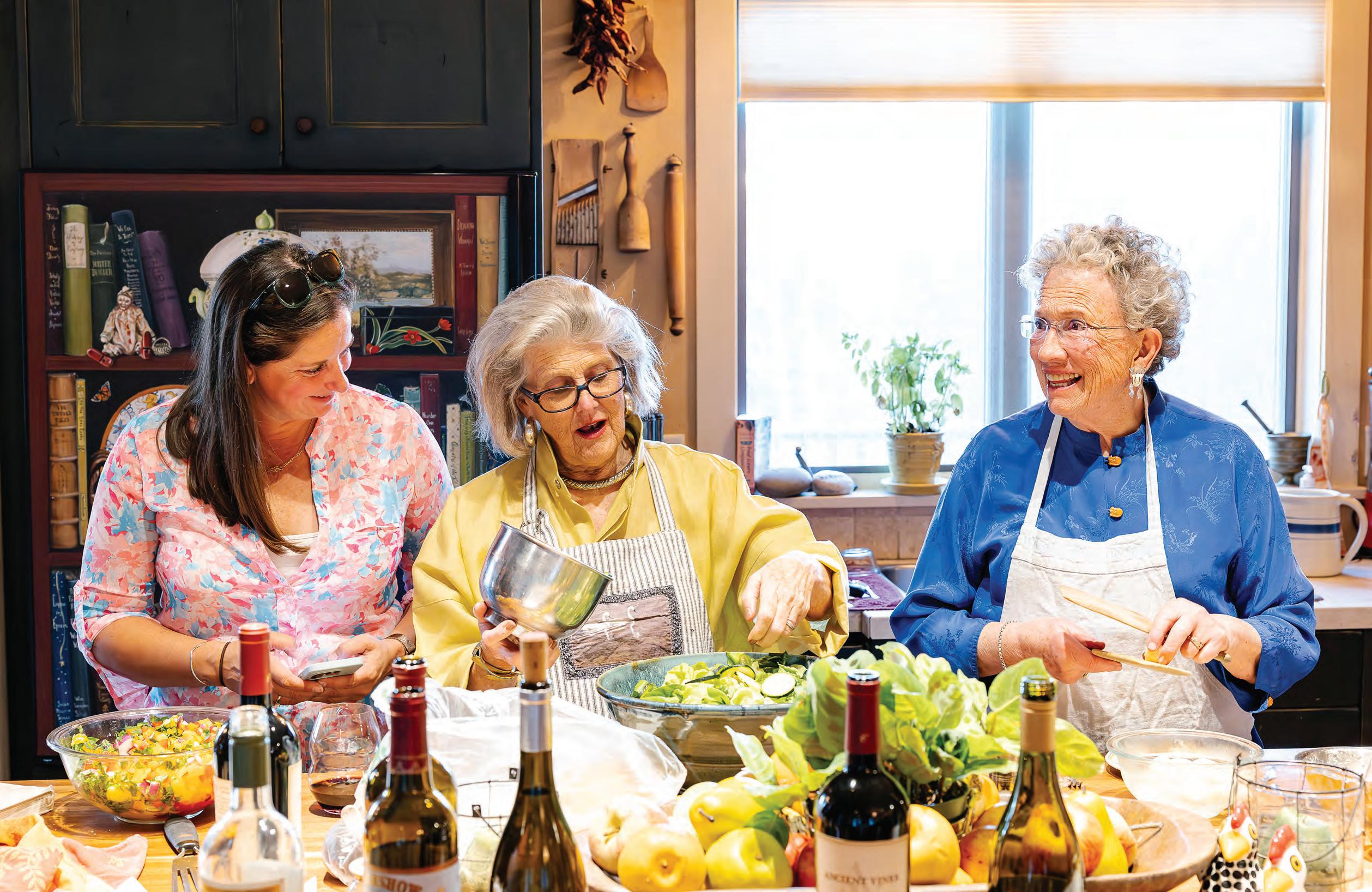
Three valley women savor life’s flavors through a love of cooking—calamities and all

Abotched beef bourguignon, an undercooked fried chicken, a shattered casserole dish, and a spoon cooked inside the soufflé were memories shared between fits of laughter and tear-wiping. The exchange evolved into over an hour of belly laughs, all tucked away in an aisle at Broulim’s in Driggs. These three women—Philbin de Got Schulz, Tucky Harrison, and Nell Fay, who share more than a decade of friendship and a lengthy resumé of marks made in the community, from painting murals to volunteering—happened upon one another at the grocery store while one was on a challenging search for barley.
I am not sure if they ever found the barley, but their hilarious interaction spurred more conversations, reliving dinner parties and favorite gatherings, some casual and some elaborate, some gone awry and some gone well, over their cumulative years of serving up love and laughter from the kitchen.
When the story of these three women and their mishaps made its way to me by way of their idea for a cookbook of lessons learned (maybe that will come later), I knew two things: First, I wanted an invitation to one of their gatherings. And second, I bet we could all learn a thing or two from their happenings and even their mishaps in the kitchen and beyond. So, we cooked up our own plan for a dinner with this trio to chat, celebrate, and bring a multi-generational group of valley residents to the table.
What came next was a celebration of life in Teton Valley. New friends, old friends, some young and some older but young at heart, all with a seat at the table

am convinced that Teton Valley cultivates community in a way that is unique to this part of the country. Maybe it’s in part thanks to our neighborly mountain spirit and remote locale. Or it could be thanks to our long snowy winters when company is key to breaking up the daily snow plowing and recreational activity of choice. Maybe we just know how to throw a good potluck or party!
“When my husband and I were driving back to Jim and daughter-in-law Chris’ house, I randomly asked him if he wanted to be cremated.”
He said yes, and the couple then discussed where they would like their ashes to be put.
to share a laugh, carve out community, and eat a good meal, be it hot dogs or a three-course dinner with all the fixin’s.
“I love to laugh. I love to eat. I love to be around friends,” Tucky says. “I love being silly, but I love having a good conversation when I’m not being silly.”
“I agree with that,” Philbin says. “We are all pretty ‘hang loose,’ I would say. We all love to do it all up with the candelabra and everything, but we also know that it’s just as fun being with people and serving hot dogs. … Well, maybe I wouldn’t serve hot dogs, but just spaghetti.”
“I bet we’d serve hot dogs.” Nell says.
“ I bet we’d serve hot dogs” s,”
If Tucky, Philbin, and Nell are involved, I’d say the latter is without question true.
Nell and her husband, Bill, moved from a Chicago suburb to Jackson Hole to start a bed and breakfast in 1992 with their two sons, one still in high school (valley resident Tom Fay, known to many as the pizza pro behind Pinky G’s Pizzeria) and the second (valley resident William Fay) heading off to college. Fifteen years later, then with grown children and grandchildren in the area, they sold the bed and breakfast and moved to Victor. “The mountains are calming,” Nell says. “You leave a lot of troubles behind.”
In 2001, Philbin and her late husband Jim were visiting two of their four sons, both living in Teton Valley, when they had an epiphany to call the Idaho valley home. On a hike up Teton Pass with their son, also named Jim, and his wife Chris, they were reflecting on life and death. At the time, Philbin’s mother was struggling with an illness and the topic was at the surface of her thoughts.
“It was so beautiful,” Philbin says.
“Jim said, ‘Well, I would want my ashes, at least some of them, to be up Teton Pass.’ And we said, ‘Well, if we want to be here when we’re dead, why don’t we live here when we’re alive?’” And that was that.
Tucky made her way out West to help her eldest daughter, Sarah, when she was put on bedrest while pregnant in 2005. After two months of enjoying the mountain air and the healthy new baby, she went back to Colorado with a plan in mind to share with her husband, Brandon. “When I finally went back home, I said to my husband, ‘Honey, I think we need to take a look at Idaho.’”
Tucky remembers his matter-of-fact reply: “I told you I’m not moving out of this house any way other than in a box.”
“Well, I agree. The question is, how many?” Tucky replied. Idaho would soon become their new home.
“All three of us have experienced that sense of needing to be here,” Tucky says. “And for me, the way I likened it was feeling connected to everything that has ever been and anything that ever will be. There’s just a grounding that comes with living here.”
“And there’s a sense of welcom-
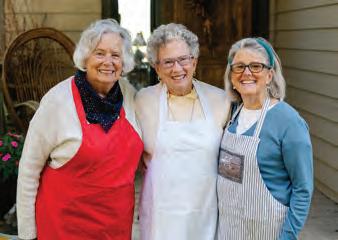
“There’s just a grounding that comes with living here.”
ing here in this valley,” Philbin adds. “I always say to people, ‘I could look in the phone book and just pick out a name, ask if they could come help us, and they would come.’ They wouldn’t have known me from Adam, but they would come. And that, to me, was always very important, and Jim felt that way, too.”
The trio eventually found their way to each other and their infectious spirits and zest for living bonded them together. For nearly ten years, they’ve held a weekly bridge game on Thursdays and gathered as well to dine and have fun. Each with a love of cooking, making a meal is just one way they show love. It may not always go as planned, but it’s always worth the effort, they’d agree.




1. Always read the recipe you are going to cook, all the way to the end. Surprises can happen if you don’t.
ach woman could no doubt fill a book with tales of hosting and gathering, and the occasional calamities that ensued. Philbin’s favorite tale started with a famous French dish she hoped would delight her crowd: Julia Child’s beef bourguignon, a beef stew braised to perfection in red wine, typically of the Burgundy variety, with carrots, onions, and mushrooms. The dish takes more than three hours to make. Philbin thought she could whip it up in no time flat. “Everyone arrived and was having cocktails and hors d’oeuvres,” she says. “I went into the kitchen and read the bottom line of the recipe. It said to cook three hours longer. I don’t think anyone could taste the beef bourguignon by the time dinner was served.” (Thanks to the extra cocktails she served to “buy time.”)
2. If possible, try to find time to set your table earlier in the day. It’s fun to think of different ideas and how to make it all look inviting.
3. Remember that if the recipe works or doesn’t, the important part is, have fun.
Nell’s most memorable calamity was that of cooking up her famous buttermilk Southern fried chicken.
“I never thought that I should cut the breast in half or anything to cook it because it was the whole breast with the ribs and everything,” she says. “Oh, it was going to be divine, and it
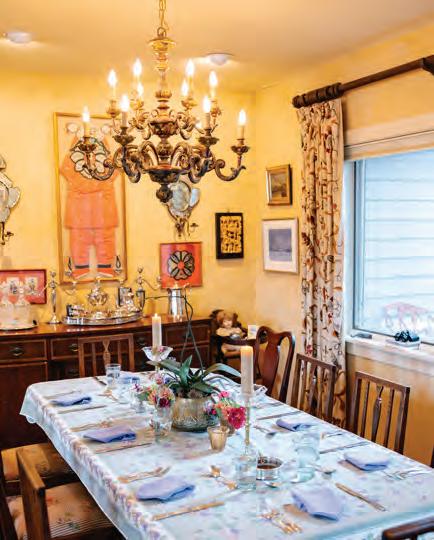
PHILBIN DE GOT SHULZ ENJOYS THE FUN of
creating and setting a beautiful tablescape like the one she crafted for our spring dinner party hosted at her home.
your neighbor over, make the connection. It doesn’t matter if you are good in the kitchen or not.
Tucky’s Shrimp Scampi with Orzo from The New York Times
“This recipe is my go-to what to cook,” Tucky says. “I usually pair it with a simple green salad with a lemony vinaigrette and some 460 Bread—take your pick of flavors.”
1-pound large shrimp, peeled and deveined
3 tablespoons extra-virgin olive oil
1 tablespoon lemon zest, plus 1 tablespoon juice (from 1 lemon)
½ teaspoon red pepper flakes
Kosher salt and black pepper
4 garlic cloves, minced
2 tablespoons unsalted butter
1 cup orzo
⅓ cup dry white wine
“This is a true family favorite”
2 cups fresh, frozen, or canned corn
1 tablespoon flour
3 tablespoons sugar
1 teaspoon salt
2 eggs
3/4 cup milk
2 tablespoons butter
Combine ingredients in order listed. Pour into a 1½ quart baking dish. Dot with butter and bake for 45 minutes at 425 degrees.
looked great.” To her dismay, the grandchildren cut into raw chicken. Into the microwave it went, and still no luck. “It was edible if we cut around the edges of that thing,” she says, laughing.
Tucky says her biggest blunders are a toss-up: One is sure to get a laugh, but it involves a bird’s unexpected sudden demise in a pot of soup, so it’s also a sad tale. I’ll spare you the details. The second was a shattered casserole dish she swept under the table so the night could go on … And go on, it did.
This past spring, Philbin welcomed me into her home for a dinner, alongside her dear friends and a few of my own. We laughed, ate, shared stories, and forged connection. It was the perfect cornucopia of what life feels like in our valley: new friends and old friends, all lucky enough to find their way to the Tetons. While Tucky couldn’t make it, her youngest daughter Catherine Harrison stood in and served story after story. Philbin and Nell whipped up an incredible dinner, complete with elegantly molded butterballs, both of the dairy and vegan variety. But it isn’t about what’s served or even how it’s served, they’d all emphatically agree. Philbin, Nell, and Tucky want to spread a message to have the party, invite
“The enjoyment is being able to be with people, even if it’s simple or impromptu or you take the pressure off with a potluck,” Philbin says. “It’s just about being with people. I think today too many people don’t recognize the importance of saying hello or asking, ‘How are you?’ They don’t know the name of their butcher. They don’t know the name of Art who takes care of the veggies at Broulim’s. It’s more than just eating. It’s more about camaraderie.”
As the valley continues to grow, their hope is that this doesn’t get lost.
“We want it to continue through different generations,” Nell says. “Tucky, Philbin, and I all grew up with a community of friends that felt natural to how we lived.”
Their advice? Bring food to your neighbor. Plan the Sunday supper. Share your garden’s bounty. Have a cocktail with friends. Put fancy butter balls in a glass dish, if you so choose. And if you can’t find the barley or undercook the chicken, not to worry.
“People just love to get together and have fun, and it doesn’t matter if you serve butter balls or hot dogs,” Philbin says.
While no hot dogs were served at the gathering I enjoyed with the ladies, it would have been just fine if they had been.
2 cups boiling water, seafood stock, or chicken stock
3 tablespoons finely chopped parsley
Marinate the shrimp in one tablespoon olive oil, lemon zest, red pepper flakes, half the minced garlic, and salt and pepper. Over a skillet, add butter and remaining olive oil and garlic. Add orzo, stirring often, until orzo is toasted. Add wine, stir until absorbed. Stir in water or stock, reduce heat to low, cover, and cook until orzo is al dente, about 12 minutes. Add the shrimp in a snug, even layer on top of the orzo, cover, and cook until all the shrimp is pink and cooked through, 2 to 4 minutes. Remove from heat and let sit, covered, 2 minutes. Top with parsley, lemon juice, and salt and pepper to taste.
Nana’s Chocolate Sauce a la Philbin
“I usually double this for our family,” Philbin says. “Some is eaten, some goes home.”
8 oz Bakers Unsweetened Chocolate (I’ve tried other chocolates but like Bakers Unsweetened best.)
1 large can evaporated milk
About 1 to 2 cups granulated sugar Dash of salt
1 teaspoon vanilla
1 tablespoon butter
In a double boiler, melt the chocolate. Slowly mix in one cup of sugar. Slowly add the evaporated milk. It will lump up so use a whisk to smooth out while adding more evaporated milk. Don’t put in all the milk; test so that the sauce is smooth but not too thin. Now, taste and add more sugar to your taste. You may want more than two cups. When it is the right taste, add butter, salt, and vanilla.
BY MOLLY ABSOLON ILLUSTRATIONS BY MEGHAN HANSON
When Whalen Frei turned eight years old, he signed up to go on a scenic flight out of the Driggs-Reed Memorial Airport with the Experimental Aircraft Association’s Young Eagles program.
“I joined the first day I could, and then kept showing up every year after that,” Frei, now seventeen, says. “I don’t think I realized at first that I wanted to fly, but the experience definitely built that dream.”
Frei is the president and a founding member of the aviation club at Teton High School, as well as a cadet in a Civil Air Patrol squadron based in Idaho Falls. His dream is to fly for the United States Marines after college. For him, access to Driggs’ airport has been life changing.
“It’s a great staple for our community,” he says. “It gives kids like me an idea of what you can do instead of maybe becoming a plumber, working construction, or being a laborer. We see planes flying overhead and think, why not pursue something different?”
The Driggs-Reed Memorial Airport began as a grass strip on the outskirts of town in 1949. In 1975, the strip was expanded to 5,200 feet by 75 feet and paved, but for a high-elevation airport that length proved to be dangerous, and for years, Driggs had the worst safety record of any airport in the state of Idaho. The safety problem was remedied in the early 1990s, when the runway was lengthened and widened to 7,300 feet by 100 feet.
Owned by the City of Driggs, managed by a volunteer board and now an airport manager (as of December 2022), and located within the city limits, the airport is included in the city budget. But it historically has been self-sufficient, raising most of
its operating funds through things like hangar leases, car rentals, fuel sales, and other aviation services. Federal Aviation Administration (FAA) grants cover 90 percent of all infrastructure improvements; in return, the city must abide by certain “grant assurances” to meet federal safety standards.
Day-to-day operations at the airport are overseen by the fixed-base operator, Teton Aviation. Teton Aviation offers everything from fuel sales and car rentals to laundry service, a pilot’s lounge with DirecTV and gym equipment, conference space, showers, internet access, and a printer, as well as a busy flight school, scenic flights, a historic airplane museum, and one of Driggs’ finest restaurants, Warbirds Café.
“The airport is a great asset to the community,” says Don Moseley, chairman of the airport board and a retired Navy fighter pilot. “It’s a valuable resource, like the Teton River, the ski resort, national for-
ests, wilderness areas, pathways, and the world-class mountain biking we have here.
“Obviously, I’m biased. I grew up flying out of a teeny airport in Farmville, Virginia. These little airports build airport communities. It’s hard to describe. I’d say it’s similar to a mountain biking club, or a snowmobile club; communities where everyone is joined by a common love. For us, it’s flying.”
But, Moseley adds, the Driggs airport is more than just a recreational resource.
The airport is an important economic driver for the community. He points to a study from 2018 that pegged the economic contribution of the airport to the valley annually at $23 million. That number encompasses jobs created, visitors brought to the community, and tax revenues.
The airport’s flight school is as busy as its three instructors can handle. They fly more than five days a week with students. The Young Eagles program that introduced Whalen Frei to flying took 237
local kids on flights in June. Twenty to twenty-five well-paying jobs are associated with airport services.
Driggs has become a hub for backcountry pilots heading into Idaho’s remote wilderness airstrips. Air Idaho has both a helicopter and a fixed-wing aircraft based at the airport to provide patient transport to bigger regional hospitals for advanced care. According to Driggs Mayor August Christensen, Air Idaho receives roughly five hundred calls per year for its services.
But the airport is not without its detractors, and it has faced some negative press in the past few years. Things heated up in 2021, when a clerical error was discovered in the federally mandated runway protection zone (RPZ) that was incorrectly shown on the city’s zoning map. In fact, the RPZ was shown in its proposed future location based on the shift of the runway, but not in its current location. An RPZ is designed to ensure safety on the ground in case of an aviation
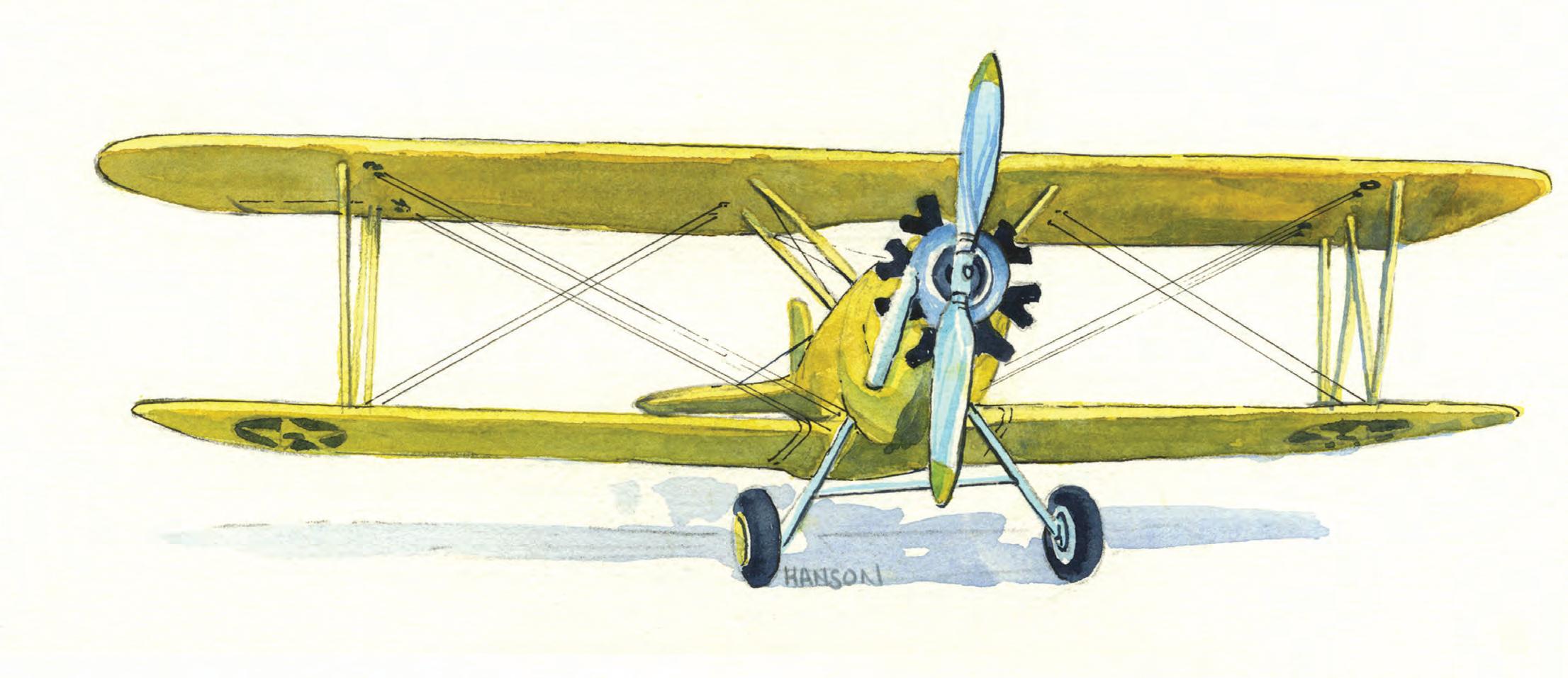
accident and is precisely prescribed by the FAA. Development within that zone is not allowed. In its current location, the RPZ affects thirteen private parcels and overlaps with Highway 33. Existing structures on those properties have been grandfathered in as legally nonconforming structures, but further development is currently forbidden. Shifting the runway as planned will shift the RPZ off private property and away from the highway, and it will only impact city-owned land.
“Obviously, people were upset,” Mayor Christensen says. “I was a council member at the time, and I remember asking if there was anything we could do to remedy the situation. But the answer was always, it’s at least ten years before we can get to the runway shift.”
Thanks to the 245-acre land acquisition in 2022—when Mayor Christensen became mayor—the city was able to take the next steps to correct the compliance issues with FAA support. The wheels were in motion to begin shifting the runway and move the RPZ onto city-owned property.
“It’s unbelievable how many circles had to align to allow this to happen,”
Moseley says. “We owe a huge thanks to the Huntsman family. None of this would have happened if they hadn’t sold us 245 acres of open farmland at belowmarket value at a time when property values were escalating at an extraordinary rate. We were dealing with FAA funding. It’s not an unlimited checkbook. … The Huntsmans made this whole project possible by selling to us cheap. It was very philanthropic of them and a big positive for the valley.”
The result of these circles aligning is that in summer 2024, the airport is antici-
pating being closed for a month to add 2,000 feet to the northeastern end of the runway, and remove 2,000 feet from the southern end, thereby shifting the RPZ onto city-owned property and restoring property rights to those parcels currently in the RPZ. It’s a $10.6 million dollar project that both Moseley and Christensen see as a win-win for the community, in terms of safety, private property rights, and noise abatement.
“With the airport shift, we also increased the glide slope for the approach,” Mayor Christensen says. “I’ve been told that even a change of 0.5 degrees will lessen noise. This won’t change airport noises on the ground, but it will help with planes flying overhead.
“The big issue is and will continue to be noise,” she says. “We can’t stop people from flying in and out of the airport, just like we can’t stop a motorcycle gang from riding down Highway 33 at 1 a.m. It’s a public airport. But we can do little things that will add up.”
Some community members have said those little things aren’t enough, and the sudden influx of airplane traffic in summer 2022 as a result of the temporary closure of the Jackson Hole Airport elevated those concerns. During that two-month period, arrivals and departures into Driggs increased tenfold.
“The Jackson Hole closure was a fifty-year anomaly,” Moseley says. “But it opened our eyes to what we do not want to ever happen.
“We all agree we are not about making the airport bigger,” he says. “Quite the opposite. We want a community airport with balloons, gliders, and kids learning how to fly, all the way up to corporate jets. That’s the way we want to grow. Not trying to limit corporate activities, but trying to grow in conjunction with the community.”
Still, the combination of the Jackson Hole anomaly and the RPZ debacle raised community alarm. In 2022, resident Jim Hartshorn collected enough signatures
“We owe a huge thanks to the Huntsman family. None of this would have happened if they hadn’t sold us 245 acres of open farmland at below—market value at a time when property values were escalating at an extraordinary rate.”
Don Moseley, chairman of the Airport Board

to have two initiatives added to the November 2023 ballot. One would have shortened the runway to 4,500 feet; the other would have limited aircraft to under 25,000 pounds.
Hartshorn wrote, “The purpose of [these initiatives] is to limit the size of aircraft allowed to operate at the Driggs Memorial Airport—DIJ to reduce noise disturbance and the frequency thereof and guard against overpopulation.”
Mayor Christensen said she was alarmed by the proposals. She immediately got on the phone with aviation attorneys to get guidance on how to respond to Hartshorn and the petition signatories. It quickly became clear to her that if the ballot initiatives passed, the city could face bankruptcy. They would no longer be able to meet federally mandated grant assurances with the FAA and would, therefore, lose all future funding and could be forced to pay back past grants. Without federal monies, Driggs would be responsible for long-term maintenance and upkeep of the airport, not to mention building the shortened runway Hartshorn proposed—a project estimated to cost as much as $19 million, again without FAA funding. Furthermore, the city could also face legal consequences from hangar owners whose aircraft would no longer be able to fly into the airport. For the mayor, these consequences were unacceptable.
“I did a lot of research,” the mayor says. “If the initiatives passed, we would go bankrupt. With that information, I sought to educate the public, to let them know the full story. We can’t use city funds to lobby, but we can inform people of the facts.”
Mayor Christensen made plans to begin helping the community understand the consequences of the initiatives, and in the end, she opted not to accept them. Hartshorn was noticeably aggrieved by the decision and wrote angry letters to the newspaper, but in the end, he did not take the issue to court, so neither initiative appeared on the November ballot.
According to FlightAware.com, Driggs sees on average twenty-five flights per day, with summer highs getting close to seventy and winter lows hovering below twenty. An active community of pilots based out of Driggs, and many, like Chris Clarke—a retired corporate pilot—volunteer their time to help attract young peo-
“In the end, Driggs has been discovered, Pilots have found our valley, and they love it. I don’t think that is going to change.”
Driggs Mayor August Christensen
ple to the aviation industry. Clarke met Whalen Frei at a Young Eagles event and helped Frei get the high school aviation club off the ground. He spends his weekends flying with students, not because he gets paid, but because he has a passion.
“I do it all for free,” Clarke says. “It’s a labor of love. There’s something about flying. It becomes a way of life. It’s fun. Part of it’s also adrenalin. If the passion is there, you’ll find a way to fly. Look what it’s done for me. I’ve been flying for fiftyodd years. It’s served me incredibly well. It’s served my kids well.
“People don’t understand the aviation community or see what its value is. I’m not trying to get people to drink the KoolAid, but the airport provides so much for this community. What’s the value of a ski race up at Targhee? It’s not just the $15 kids pay for a bib; it’s mom and dad and grandma and grandpa buying a hamburger, staying in a hotel. The airport provides a similar value to the community. It’s not all direct.”
In the meantime, Mayor Christensen says the city continues to work to mitigate the negative consequences of having an airport inside city limits. Longstanding

voluntary operating hours—
7 a.m. to 10 p.m.— have been in place since 2012 and continue to be standard practice, and the airport is working to educate pilots. Non-homebased aircrafts—those without a hangar at the airport—that land or take off outside those hours are charged higher airport fees. Christensen says most pilots, once they understand they are only being asked to be good neighbors, comply.
“But I need facts,” she says. “The city has a page on its website for noise complaints. We need data. We can’t do anything if we don’t have specifics. So please, please take all the facts, write them down, and put it in the system so we can do something about it.
“In the end, Driggs has been discovered,” she says. “Pilots have found our valley, and they love it. I don’t think that is going to change.”
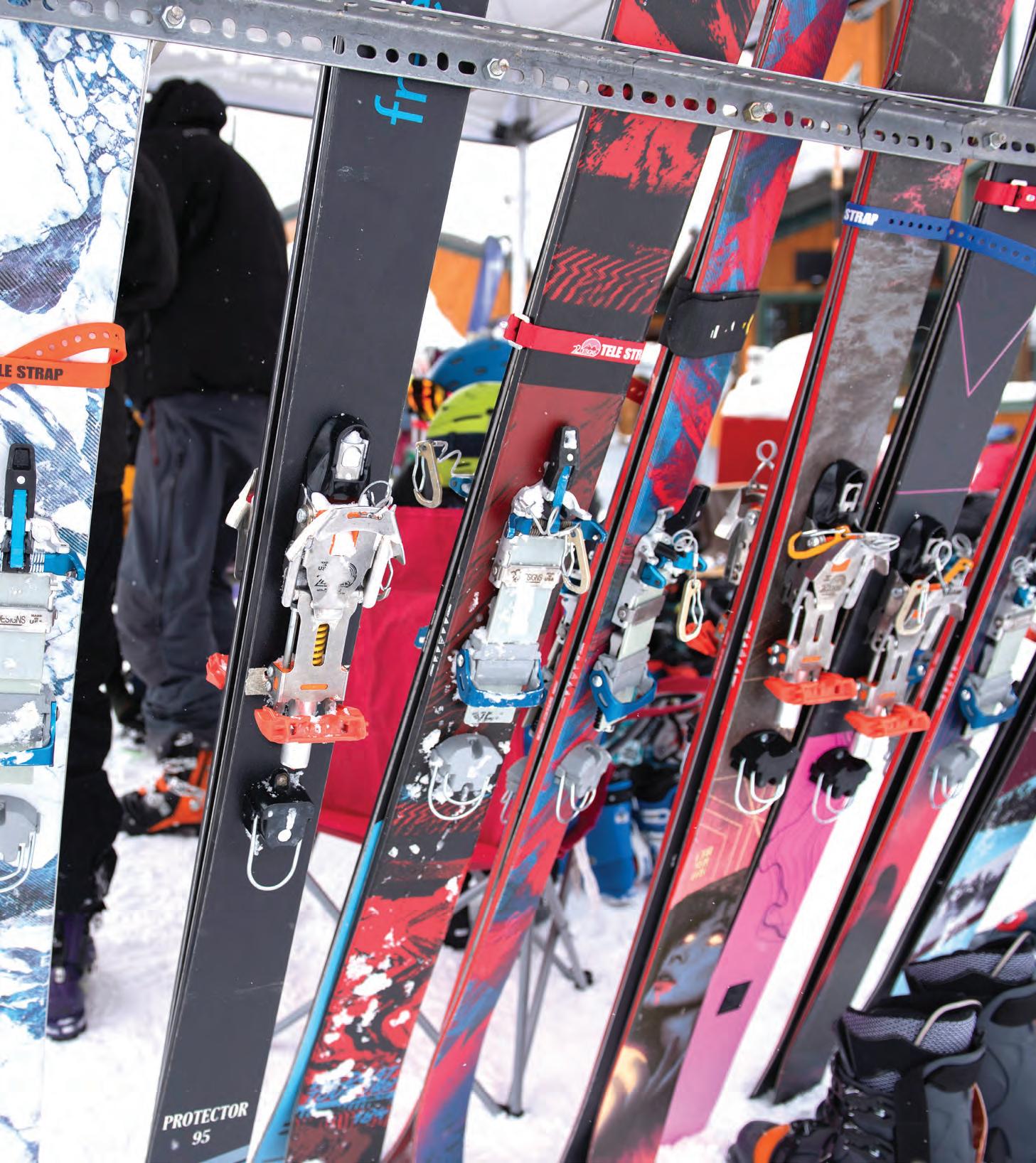
A bent knee, a free heel, and graceful turns; telemark skiing has evolved into a style of skiing that’s garnered a small but mighty following that holds strong in the alpinedominated ski industry. And while its origins may be in Norway, Teton Valley claims an important chapter in tele’s past and present.
Telemark skiing first grew in popularity as a way to access backcountry terrain. The free heel allowed for ease of movement as skiers hiked up the mountain.
Locally, Clair Yöst, founder of Driggs’
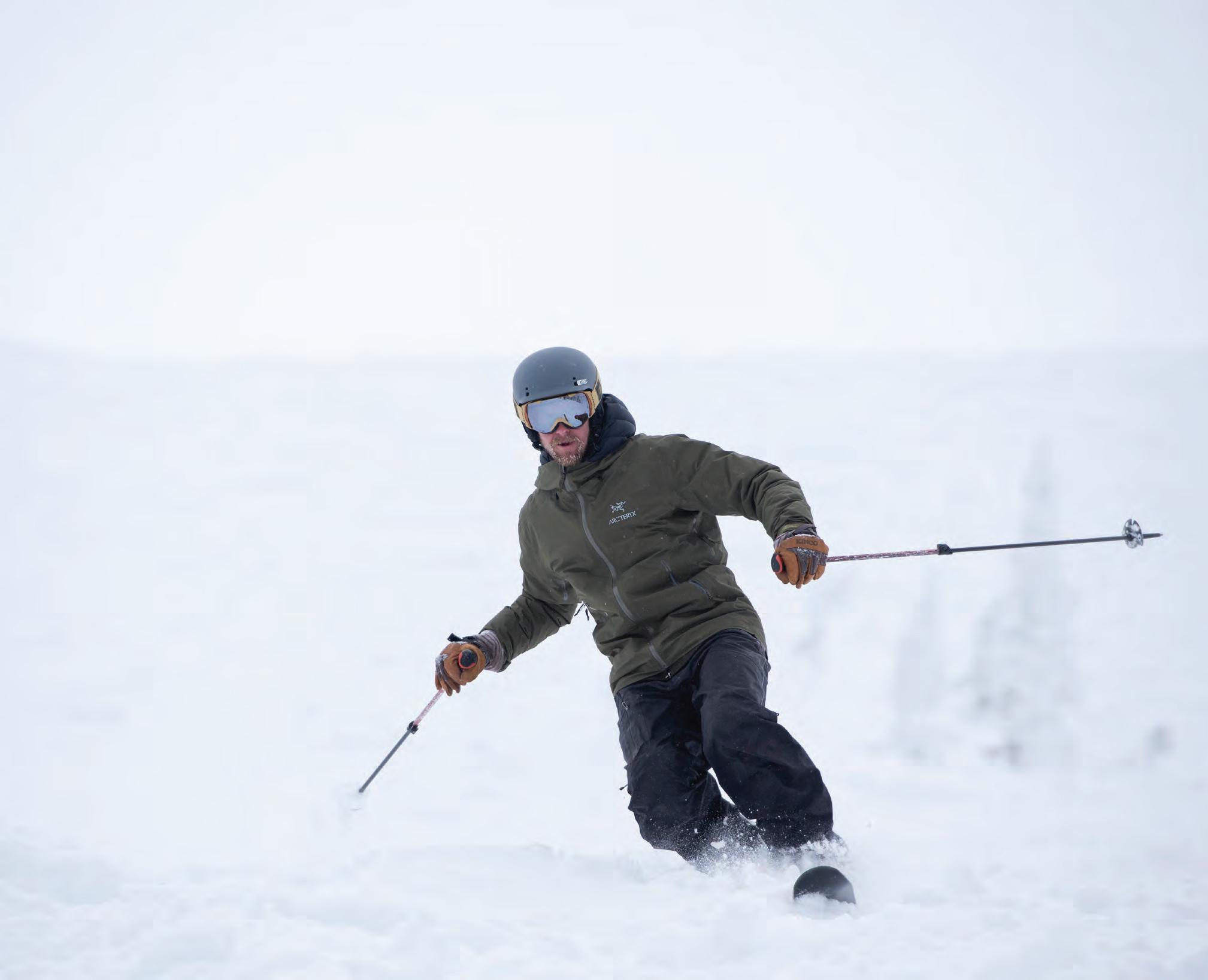
Yöstmark Mountain Equipment, brought the backcountry world and tele skiing to the next level with a concept for fat skis.
“Clair was a visionary,” says Rich Rinaldi, the current co-owner of Yöstmark. His skis, Rich explains, the Yöstmark Mountain and Classic Noodles, became one of the first fat, soft powder skis on the market, all using the traditional tele binding. Today, the shop is owned by Jake Holmes and Rich, who continue Clair’s innovation, in tele and beyond, both in the shop and on the mountain.
Nearby, longtime friends, tele skiers, mechanical engineers, and business partners Chris Valiante and Collins Pringle produce world-renowned tele bindings at 22 Designs. For two decades, the pair have developed and improved upon cuttingedge tele binding technology, producing four styles of bindings, including a binding for kids, produced at the Driggs shop. And so today, tele skiing continues its foothold in the skiing world, all while keeping the heel free.
“There is a long tradition of tele skiing in Teton Valley. Both having 22 Designs here and the fact that we at Yöstmark still enjoy tele, sell the equipment, and rent the equipment; we are committed to keeping the legacy of tele skiing alive.”
– RICH RINALDI, YÖSTMARK MOUNTAIN EQUIPMENT
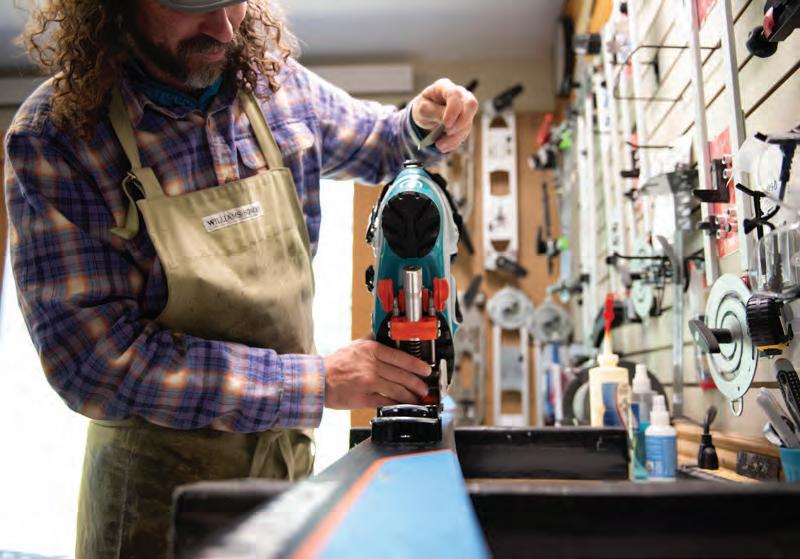

“I feel more of a connection to the mountain when I tele ski.”
– JAKE HOLMES, YÖSTMARK MOUNTAIN EQUIPMENT


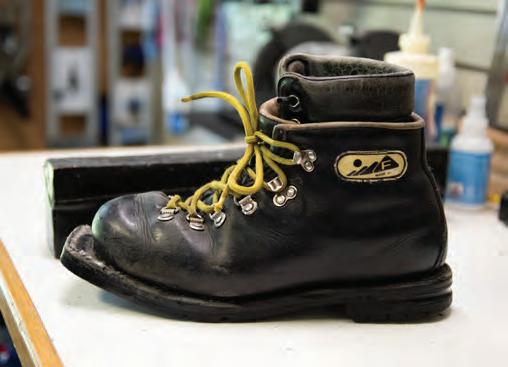
“There is something about the challenge of telemark skiing, especially learning it. It seems like that is one thing tele skiers have in common. A willingness to take on a big challenge like that and keep working at it.”
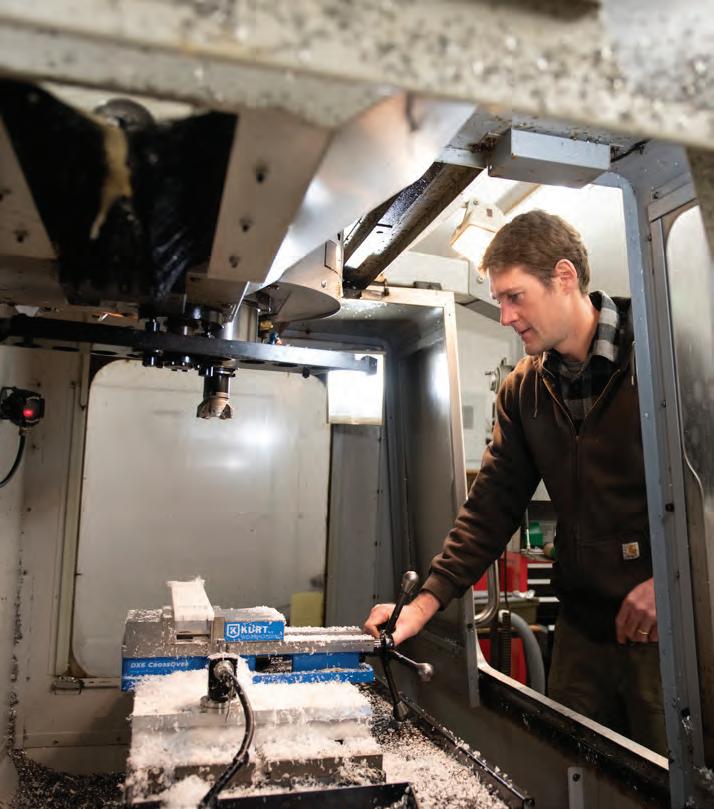
“The smoothest style on the mountain has always been telemark. I love the ability to play down a run in any style. Sliding downhill on skis is fun, right?”
- SHANE ANDERSON, FORMER USA NATIONAL TELEMARK CHAMPION

DRIGGS RESIDENT SHANE ANDERSON was a member of the United States Telemark Ski Team. He placed first in the USA National Telemark Championships in 2010 in sprint, giant slalom, and classic racing.
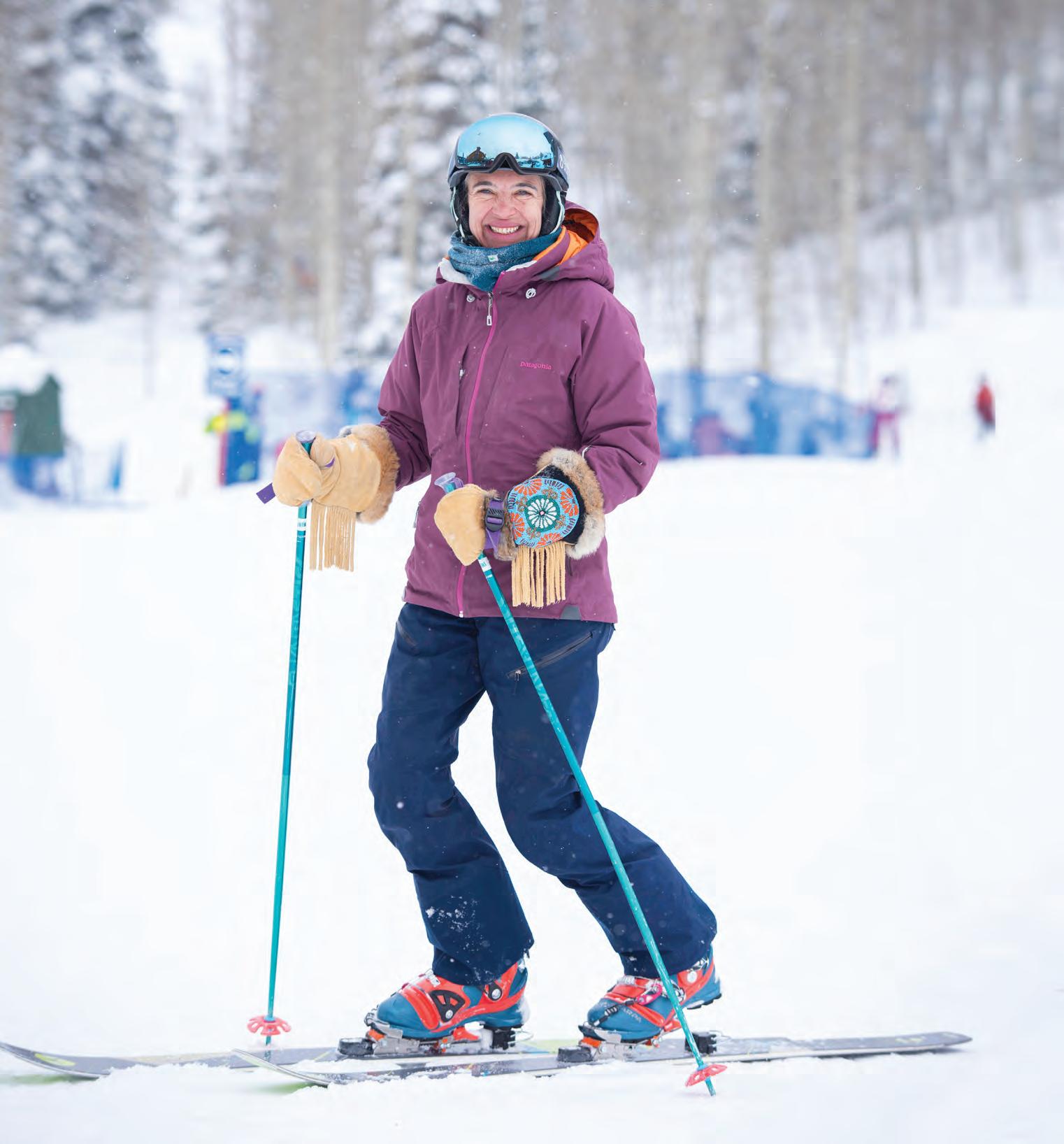
“I
love the ease of travel, the beautiful turn, and the community it brings together.”

“You hear people always saying, ‘Oh I want to try that sometime,’ and if they live here, they are in luck because we have all the stuff.”
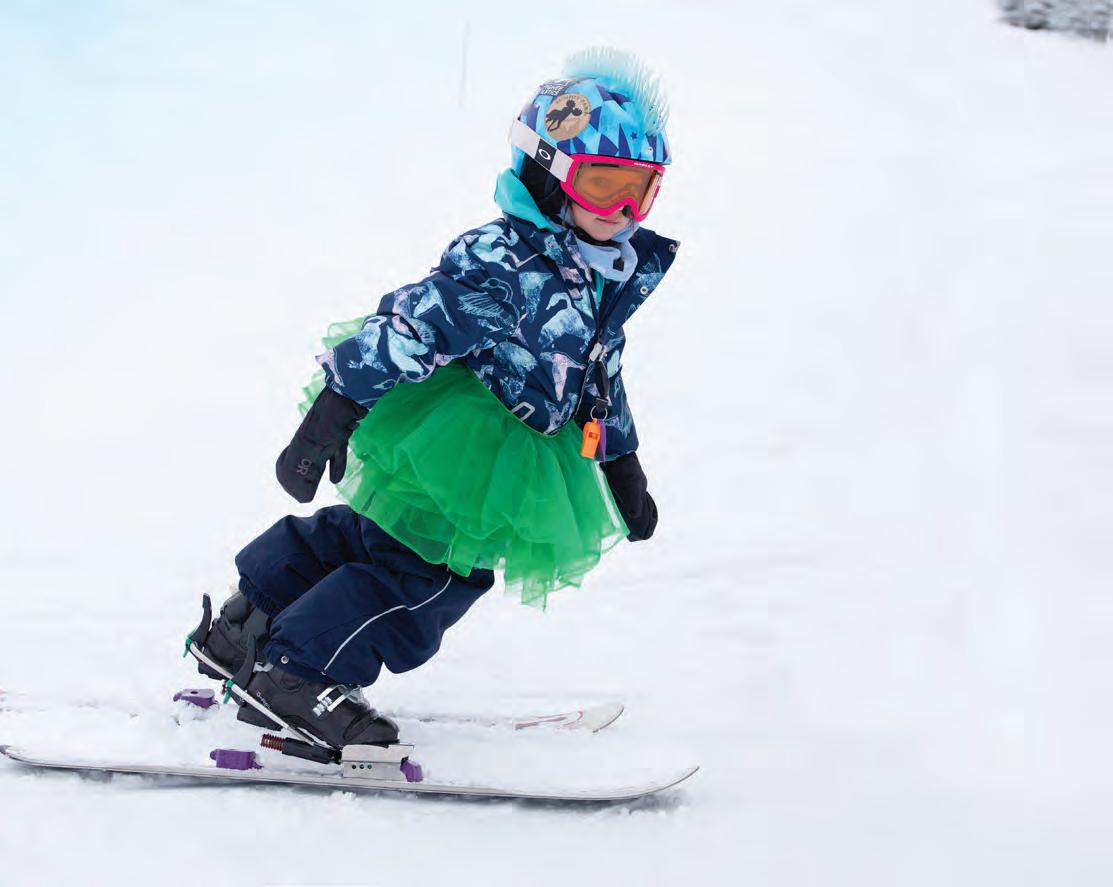
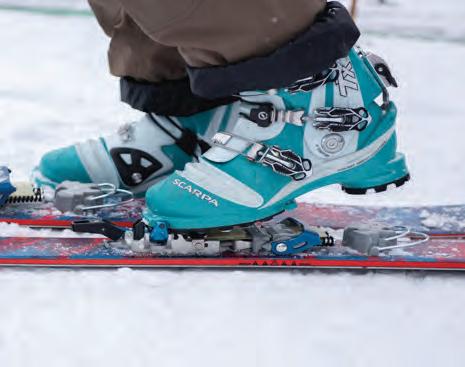

BY KRISTEN POPE PHOTOGRAPHY BY NATALIE BEHRING
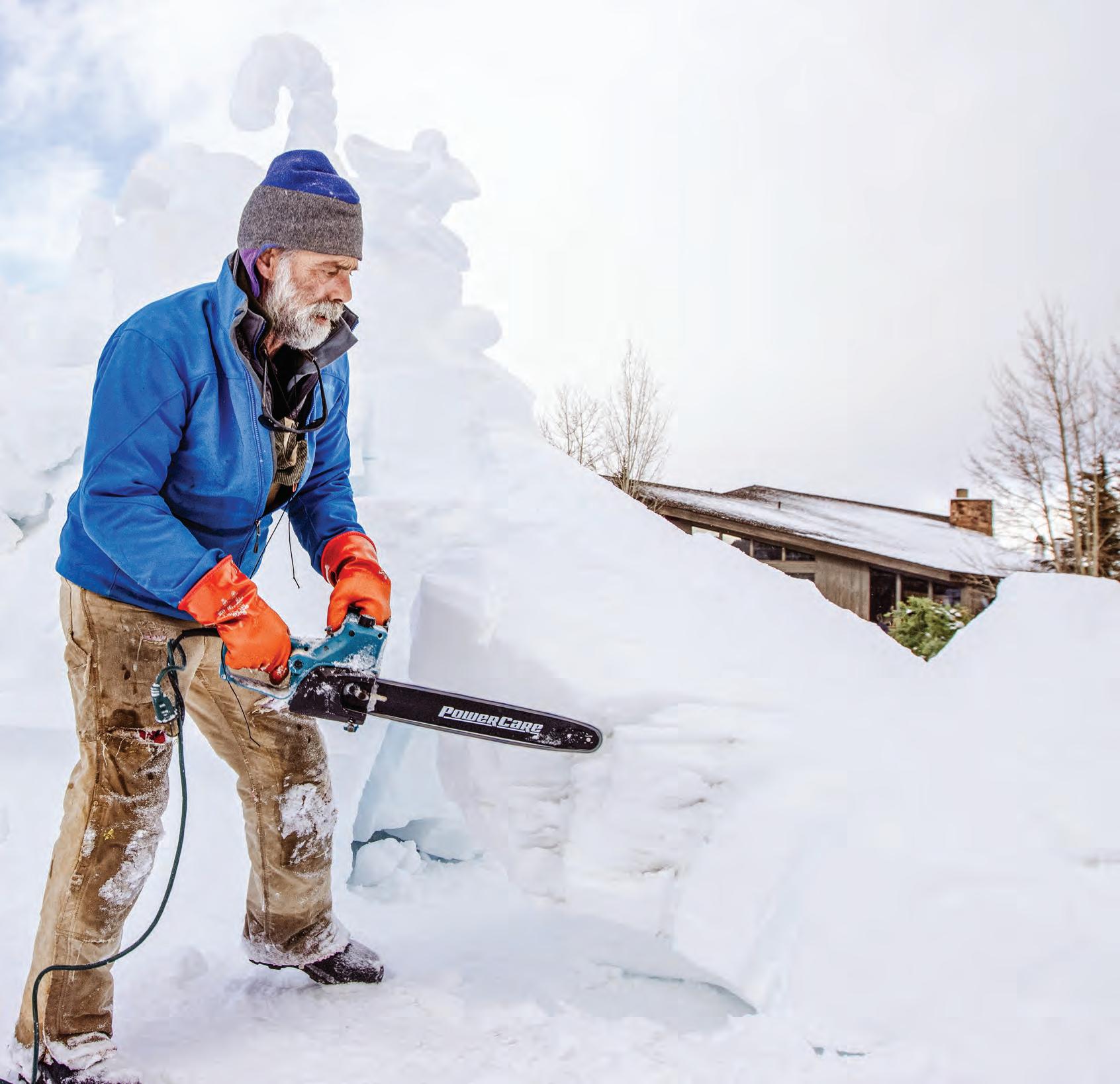
Floating in light backcountry powder, carving turns on fresh groomers, and catching up with friends on the chairlift are favorite winter pastimes in these parts. But you don’t have to be on skis or a snowboard to enjoy some of the best of winter in Teton Valley (although we recommend you do give a powder day or ten a try!). You can get outside this winter and enjoy the snow in other, more unexpected ways, from snowfocused community events to winter activities ranging from sledding and fat biking to joining a curling league.
Winter is a long season, and one of the times Teton Valley shines the brightest— both literally with glistening snow crystals, and metaphorically with the valley’s incredible array of activities and festivities. Whether you’re playing in the snow with your kids, crafting a creature out of the white stuff, or snowshoeing the nearby trails, winter is one of the best times to enjoy Teton Valley. Bundle up, prepare for the conditions, and savor your time in this snow-globe wonderland.
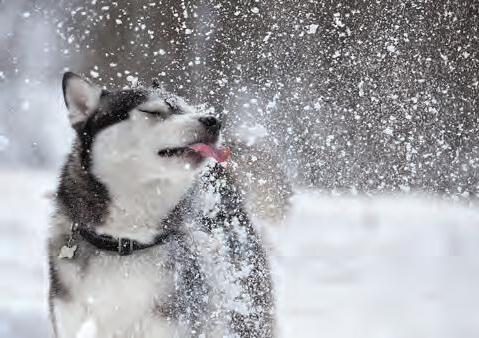


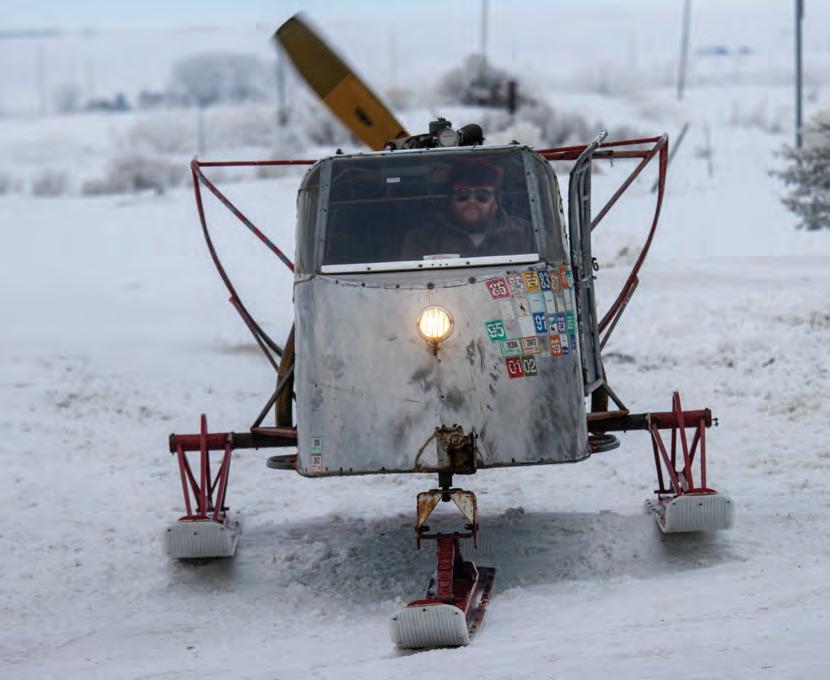
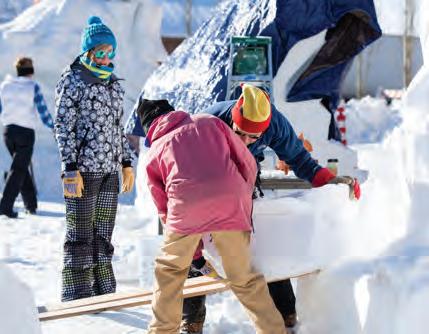
DATE: January 15 – 20, 2024
MORE INFO: downtowndriggs.org/ snowscapes
Teton Valley is known for its snowy winters, and the annual event Driggs Snowscapes: The Art of Sculpting Snow turns the abundance of snowflakes into artistic wonders each January. This snow sculpture contest and celebration is put on by local nonprofit Downtown Driggs Association, an accredited Main Street America Organization, and brings to town a wide range of competitors, from regional and national artists to students who love to create.
Before the competitive sculpting begins, volunteers work to get the massive snow blocks ready, packing frames with snow and then stomping on the contents until it forms compacted blocks for carving—picture stomping grapes in preparation for making a vintage wine, but much colder and less messy. Then the true magic begins as artists carve intricate designs and make fantastical creations to align with the annual theme. (The 2023 event included nine sculpting teams, thirty tons of snow, and more than three thousand visitors.) After the sculptures are completed, the public can vote on their favorites. The creations then sit in front of the Teton Geo Center until nature decides the show is over and melts them away.
During the longest, darkest days of winter, getting together for festive events is a joy. Teton Valley’s winter event calendar is dotted with numerous bright spots to look forward to each snow season. These special events don’t just happen to coincide with winter—they rely on winter and snow to even take place, for true celebrations of the season. Mark your calendar!
DATE : February 24 & 25, 2024
MORE INFO: tetonskijor.org
In skijoring, a horse-and-rider team pulls a skier behind, like a waterskier on a frozen lake, while running a course. Showcasing a blend of equestrian and snow sports, this activity couldn’t find a better place to happen.
“With the western heritage, skiing so close by, and all the ranches and horseback riding, it just makes a perfect fit,” says Neal Stobaugh, president of Teton Valley Skijoring. “It’s not often that you get cowboys and skiers and snowboarders together, and they come together very happily this weekend in Teton Valley.” Skijoring has taken place in the valley off and on since the early 1990s. The favorite event came back to life in February 2023 after a several year hiatus. In 2023, organizers expected around sevenhundred spectators for the weekend and were happily surprised to see nearly three-thousand attend.
“Skijoring happens in a short period of time—each race is under maybe 30 seconds, and some of the fastest racers are 18 seconds or so,” says Elliott Paull, event director for Teton Valley Skijoring. “It’s a really quick, adrenaline-fueled sport.”
The February 2024 event will take place at Teton County Fairgrounds. Organizers hope to set up additional skijoring opportunities in the valley, including working with horse rescue and rehabilitation nonprofit HAPI Trails to provide a place where humans and horses can train to make the sport more accessible.
“People that live in Teton Valley all enjoy some aspect of the natural beauty, whether it’s the horses, the ranches, mountains, skiing, or snowboarding, so there’s something for everyone at this event,” Elliott says. “It’s an event that just brings everybody together.”


DATE: January 2024
MORE INFO : tetoniaidaho.com
Often described as a cross between an airplane and a snowmobile, snow planes are the draw at Tetonia’s annual Dale Robson Memorial Snow Plane Rally. Held each January, enthusiasts bring their machines to Ruby Carson Memorial Park and invite people to take a look, hop inside, and learn all about these fascinating contraptions created in a time before snowmobiles. Powered by engines with propellers in the back, snow planes glide on wide skis but never leave the ground. Karl Lorch from Spy Hill, Saskatchewan, is credited with fashioning the first snow plane in 1929 when he was just nineteen years old. In one of his earliest models, he built a makeshift rig from an old Model T Ford, with an aircraft propeller added to a rear-mounted engine, skis on the front, and chained wheels on the back. His design evolved into a lightweight tubularsteel frame covered with linen sheathing, a construction method favored by aircraft builders of the day. The snow planes use aircraft parts so they are lightweight and can zip along the snow at staggering speeds.
The rally provides a time for community members and visitors to enjoy these historic machines and interact with the people who keep the sport going today.
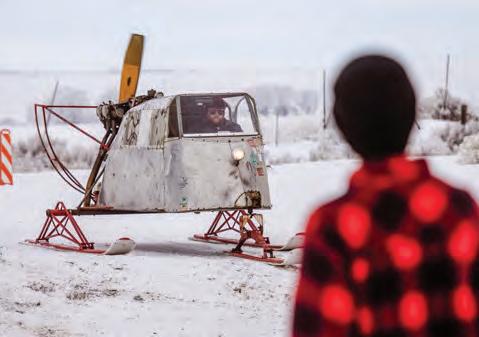
DATE: February 3, 2024
MORE INFO: wyomingstagestop.org
Every year in Wyoming and Idaho, the Pedigree Stage Stop Sled Dog Race brings musher-and-dog teams deep into the Wydaho region. The teams start in Jackson, taking just over a week to complete seven different stages and stopping in a different town each night, including in Driggs.
“It is a stage stop very much like the Tour de France, where every day is a different race in a different location, and the local communities support each of those stages,” says Roger Carpenter, the race’s media director.
People have long utilized dogs and dog sleds for winter transportation, and the event celebrates that history while also engaging communities. The race incorporates an outreach program and local schools are involved, with kids even
showing up with banners for their favorite mushers. Roger says in the past these races served an important role in boosting community spirit during long, dark winters.
“These were social events for small communities and groups of mushers to break up the winter months,” he says. And the modern race still serves to bring people and dogs together and put a smile on everyone’s faces.
The Driggs stop is the seventh and final stage in the week. The race begins at the Kay Dairy trailhead west of Driggs at 9 a.m. Parking is limited at the start and finish; carpooling is recommended. If you can’t make it to the race, the teams head to the Driggs City Center for a midday meet and greet.
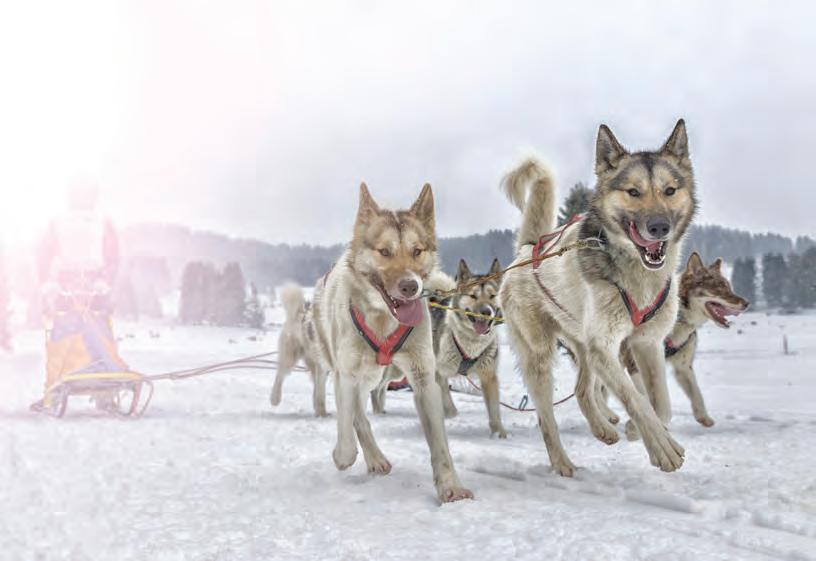
Winter in Teton Valley provides almost endless opportunities to get outside and enjoy the season. Before you go, always take needed precautions for engaging in winter recreation, from dressing appropriately for conditions, to having a winter emergency kit in your car, to taking an avalanche course if you plan to spend time in the backcountry. Stop by any of the gear shops in town for expert advice and all the gear needed to get you outfitted for your winter fun. Safely enjoy Teton Valley’s outdoor wonders this winter with a few of these favorite activities:
Visit discovertetonvalley.com for even more exciting ways to play, experience, and enjoy our Teton Valley winter wonderland.
MORE INFO: tetonvalleyadventures.com
Teton Valley and the surrounding areas are packed with snowmobiling opportunities. If you’re not sure where to go, consider booking a tour with a local company like Teton Valley Adventures, which offers options like trips to the Big Holes, Mesa Falls, and other locations.
MORE INFO: tvtap.org
MORE INFO: tetonvalleyfoundation.org
Strap on your snowshoes and discover some of the best local areas for exploration on foot. Be mindful of other trail users, stay clear of the classic track meant for Nordic skiing, and make sure you’re not post-holing and leaving deep footprints on groomed trails.
One favorite local spot is Teton Canyon, which offers stunning views of the range, though it is often bustling with
cross-country skiers, snowmobilers, and an assortment of human and canine users. The Big Hole Range bordering the valley on the west provides quieter options, as do Teton Range drainages such as South Leigh Creek, Moose Creek, and others. Be sure to hone your navigational and route-finding abilities, especially if you’re venturing out on a less populated trail or it’s snowing, and your footprints
might be covered.
If you’re new to snowshoeing or just want an expert guide to lead the way, book a snowshoe tour at Grand Targhee Resort. You’ll learn about the winter ecology, snow tracking, and Greater Yellowstone Ecosystem, while garnering a wealth of snowshoe tips.
Visit tvtap.org for grooming reports and other trails to try out.

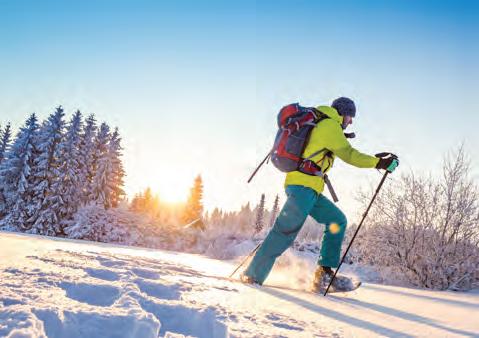

In Teton Valley, biking is a year-round sport. When the snow flies, the tires just get fatter. Hop on a fat bike to check out some of the local trails that make this region a celebrated destination for snow biking. Grand Targhee Resort offers fifteen miles of groomed Nordic trails also accessible to fat bikes. You need to purchase a pass to enjoy the trails, and rental fat bikes are available. Many other trails are also available in the area. Teton Valley Trails and Pathways’ extensive groomed trail system offers routes for fat biking, as well.
Lace up those skates and grab your hockey sticks. Visit Kotler Ice Arena outside Victor this winter to enjoy hockey, skating, and more. Teton Valley Foundation’s Cutthroats Youth Hockey has programs for kids ages four through high school, with a number of different options, including a hockey program for girls, all held at the Kotler Ice Arena. The rink also offers plenty of adult programming, with several co-ed leagues, from beginner pond hockey to more advanced levels, as well as a women’s league. Public programming at the rink includes open skate times (with skate rentals available), stick and puck, learn to skate programs for kids and adults, and pickup hockey. They also work with Valley Adaptive Sports to offer inclusive programming and are working on a sled hockey program.
Bundle the kids up in their snowsuits, toss the sleds in the car—don’t forget the hot cocoa—and get ready for a sledding adventure. Mike Harris Campground, located south of Victor at the base of Teton Pass, is a go-to sledding hill for families. The sledding hill is adjacent to the parking lot with easy access to hills best suited for younger kiddos. (Be aware that road conditions in and around the parking lot can be iffy and may require fourwheel-drive to negotiate.)
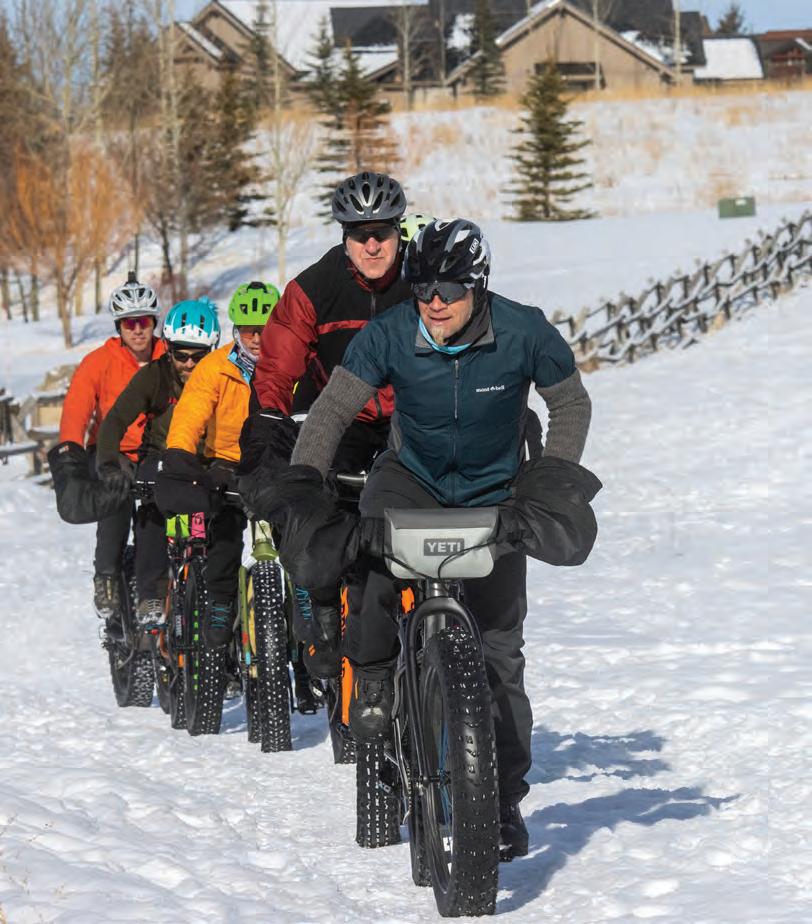
tetonvalleyfoundation.org
In 2022, Teton Valley Foundation held a “learn to curl” event at Kotler Ice Arena. Organizers were stunned to see all thirtytwo spots sell out in a single day—so they added a second event, which was just as popular. “It helped that it was a year with the Olympics because a lot of people were excited about curling,” says Miranda Milligan, rink director.
Curling is growing in popularity in Teton Valley, and Miranda and others worked with clubs in Boise and Ogden, Utah, to help get the local Teton Valley Curling Club up and running. Those clubs were instrumental in helping Teton Valley’s club get on the ice, helping figure out the intricacies of equipment and how to rent stones to use. Teton Valley Foun-
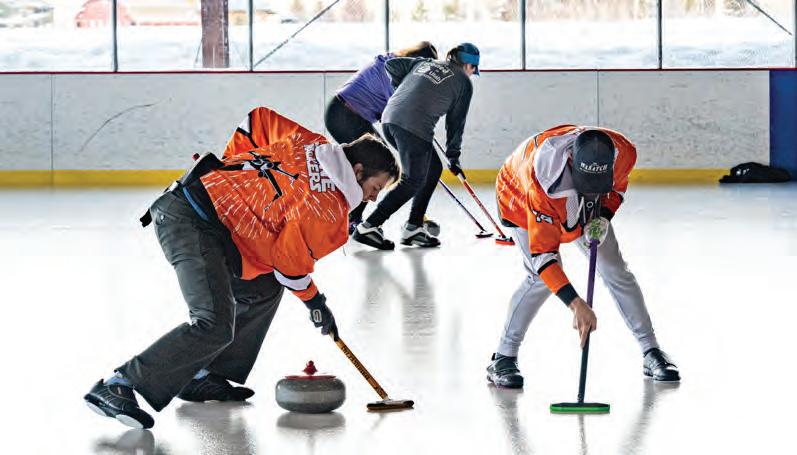
dation even hosted a curling tournament, called a bonspiel, which brought in curling teams from as far away as Minnesota and California. This year, organizers plan on offering even more opportunities for people to participate through educational events, a league, a bonspiel, and more.
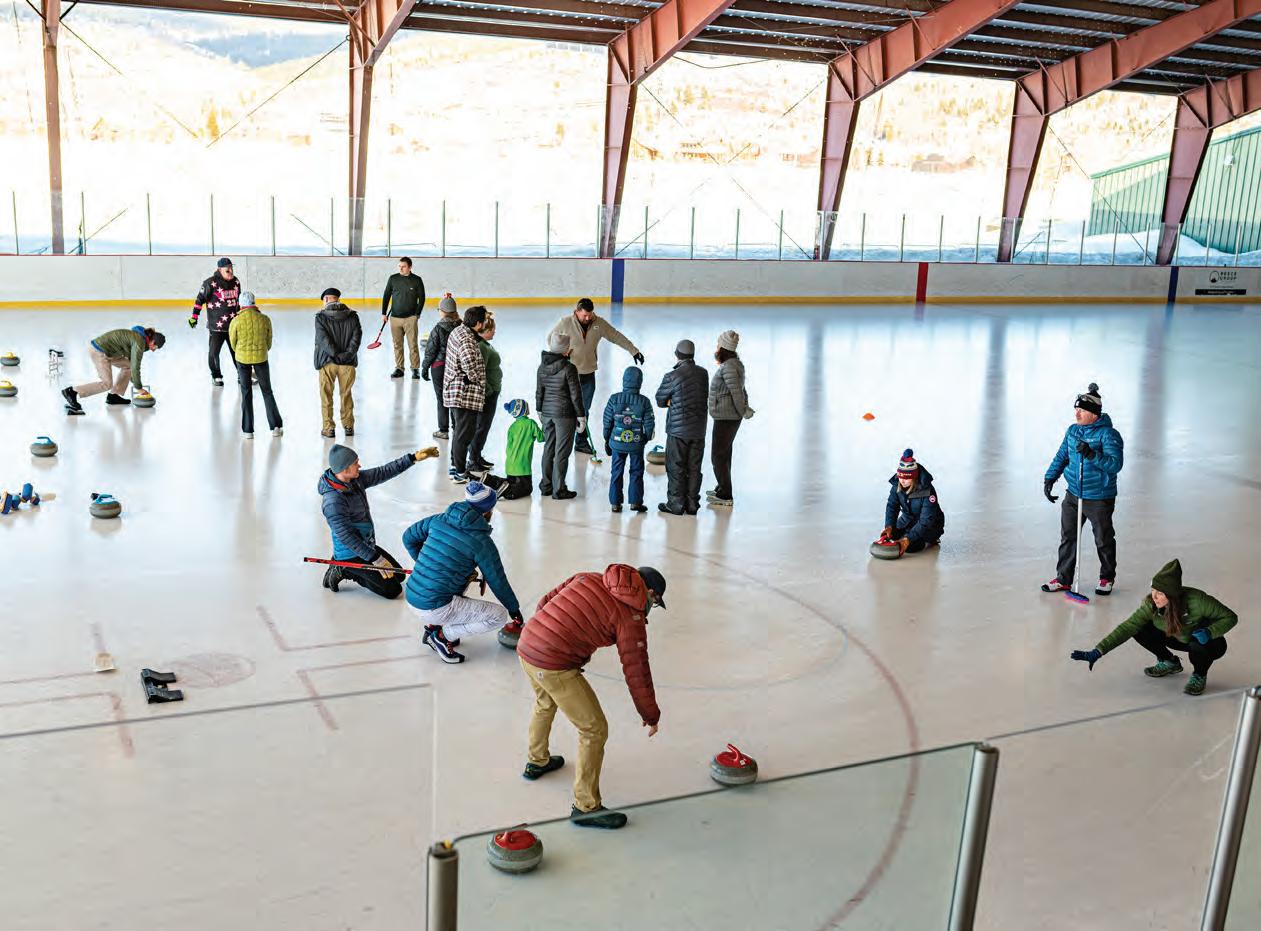
Numerous bird species can be spotted in the valley in the winter (learn more on page 92), including rough-legged hawks, bald eagles, swans, snow buntings, and more. Some live in the valley year-round, while others migrate from the Arctic each year to winter here.
“I just love seeing those birds that come from so, so far away and spend their winter here, and also just the toughness of the birds that stay,” says Mary Chris Harrison Boeh. Mary Chris and her husband Colin Boeh coordinate the Teton Valley’s Christmas Bird Count and have worked with birds, doing wildlife surveys and guiding, and together they administer the Teton Area Birding Society Facebook
page. “We, of course, have much more diversity of species in the summertime, but the birds that live here all winter have to have special adaptations to make it through a very harsh winter,” she adds.
Some of the best places to look for birds in winter are around open water, such as the river corridor, as well as on the flats, and even atop telephone poles.
Binoculars or a spotting scope can be very helpful, along with a field guide or app. Even if the weather is uncooperative, you don’t have to venture far to go birding. Mary Chris says setting up a feeder in your yard can be a good way to see interesting birds, while you enjoy a hot beverage inside. Colin points out that you can

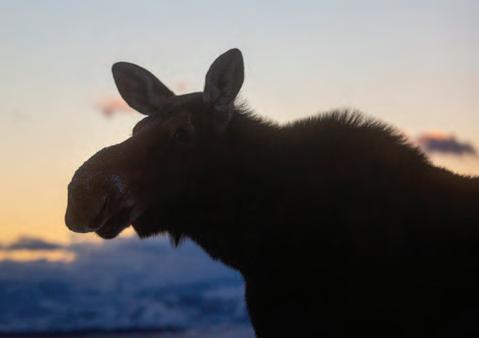
even bird from your vehicle—after safely parking, of course. “A lot of the birding that people end up doing in the winter is vehicle-based birding,” he says. Birding also doesn’t have to be a stand-alone activity; Colin says he often incorporates birding into other activities, such as backcountry skiing and snowmobiling.
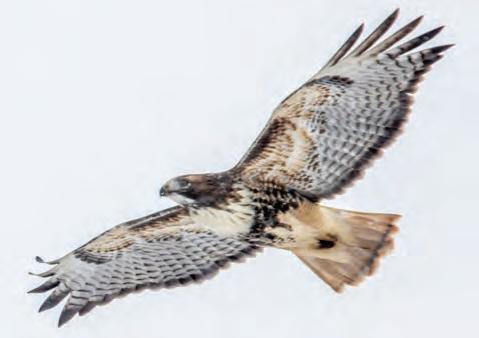



BY P.M. FADDEN
The Idaho winter night is diamond clear. Even the stars seem to shiver. Perfect conditions for a night at the Ice Palace at LaBelle Lake.
Located outside Rigby, Ice Palace is one of the Gem State’s most unlikely (and enchanting) experiences. The very walls glow like a living fairytale and through the gates await thrills for all ages.
The visionaries behind the magical realm are Jim and Shannon Youngstrom, their six children, and now their children’s spouses, all of whom help make this frozen structure come to life each year. Every winter they transform their family’s homestead into a palace crafted solely of ice, so each year’s construction is delightfully distinct. And the window to appreciate the beauty is brief.
When the frigid December days hit Rigby, the Youngstroms get to work, cranking out the magic via two very special ingredients: a cleverly patented building technique, plus the irreplaceable polish of down-home know-how.
One branch of the Youngstrom family crafts log homes during warmer months, so building in ice comes naturally. Straight from the drafting board, they create designs to optimize flow of human traffic, while highlighting the panoply of palace entertainment, artwork, walking paths, and gateways. But perhaps even more impressive than design is construction. The whole enchanted kingdom ultimately encompasses more than one million gallons of water strategically distributed from
no less than seventy sprinklers, across an area roughly equal in size to a rollerderby rink.
Then, from December to typically February, the palace comes alive, welcoming visitors from Eastern Idaho and beyond to come and explore their whimsical wonder.
According to the Youngstroms, this enchanting ice palace is something you can’t see anywhere else—beyond their second location in Minnesota, that is. It makes the visitor feel as though they’ve stepped into another world.
Colored lights pulse and sway within each wall, tricking the senses into believing you’ve entered a private sanctuary of twinkling stars frozen within the ice sculpture and accessed by horsedrawn sleigh.
Two teams of handsome horses stand beside coat-buttoned passengers while they climb a tall step onto a sleigh. With a flick of reins, the sleigh is underway into a chilled grove. Like the palace grounds, it too is dotted with moving blooms of colored light.
Ahead, two warming fires flank a rustic shanty where friendly folk dispense steaming cups of hot chocolate. Directly beside the shanty is an inground ice slide illuminated by rope light. Judging from the wild cheers and chants to give it a whirl, it’s a fan favorite. Riders eagerly grab an inner tube and hurl themselves under a white-light
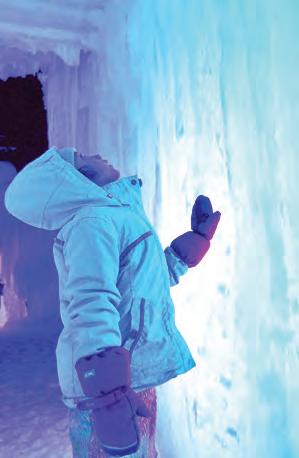
THE ICE PALACE requires more than one million gallons of water to create. This labor of love is also a family affair. The Youngstroms have brought their vision to life for the past seven years.
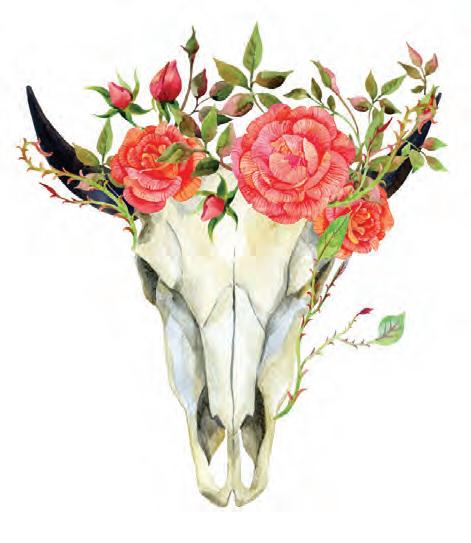

arch bridge. And most of the picnic area is bathed in the same white glow. A network of countless strings of lights reveals an ornate treehouse, gazebo, and a particularly hearty clan of ducks, loitering atop a frozen brook.
Every which way, children run and laugh. Friends gather beside the fire. And like jingle-bell clockwork, the sleighs travel in rhythmic loops to or from the palace. By sleigh, the royal residence is mere moments away. And what first greets the eye is the veritable village surrounding its walls.
Warming tents, food trucks, and a stable of honest-to-goodness reindeer coalesce as a village straight from a holiday fairytale. Its local ‘villagers’ share intriguing stories of Ice Palace lore, as well as dates of upcoming themed parties.
The main entryway is a mass of high walls, graceful arches, and winding tunnels. Every crisply edged corner of the Ice Palace is infused with rotating rainbows of light, which enhance a fiery performance already underway inside.
A single dancer elegantly twirls a huge staff sporting a pumpkin-sized fireball at each end. Her steps are equal parts nerve-racking and mesmerizing. But the dancer herself is as cool as the ice underfoot.


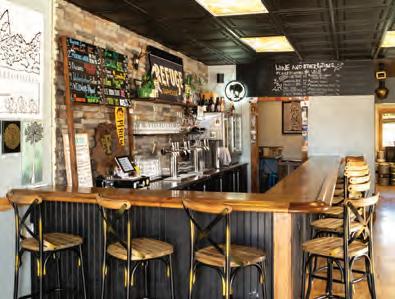
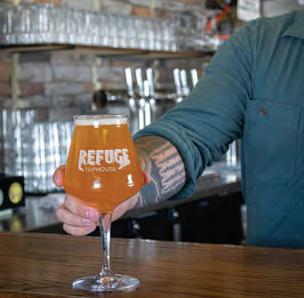
Inside the palace, ensembles of snowmen and costumed characters invite group photo opportunities. And a short-yet-steep tube slide protrudes from one wall. It shoots riders to the base of a solid ice monolith that looks like a great Neolithic stone. The monolith serves as a sort of yard post, directing visitors to the palace’s various points, quiet enclaves where more glowing hallways or secret tunnels open into galleries of icicle art, and a great chamber whose specific purpose is playing with sound.
From the formation of its first icicle, Ice Palace is a marvel. And conditions permitting, the Youngstroms endeavor to erect a second level. It marks the palace’s loftiest point, offering panoramic views of the palace grounds, happy visitors, and the wintery Idaho wilds beyond.
As an icon of winter wonder in Rigby, the Ice Palace continues to grow




and the family aspires to see continued expansion into other states. Palaces are currently located in Idaho and Minnesota with plans to add a third site soon. At the core of each is a wish to share winter whimsy with community. For the Youngstroms, Ice Palace is ‘home’ and they hope it is a home-away-from-home for every visiting family; a dreamland of fairytales, special events, and memories to last a lifetime.
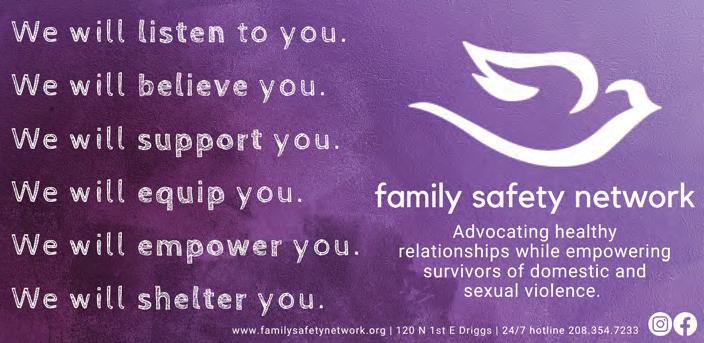
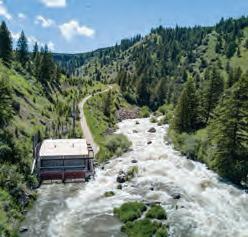


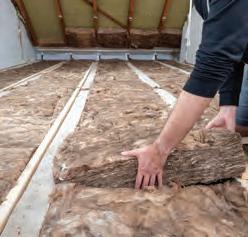


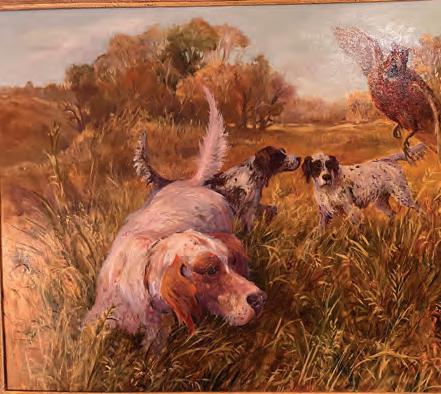
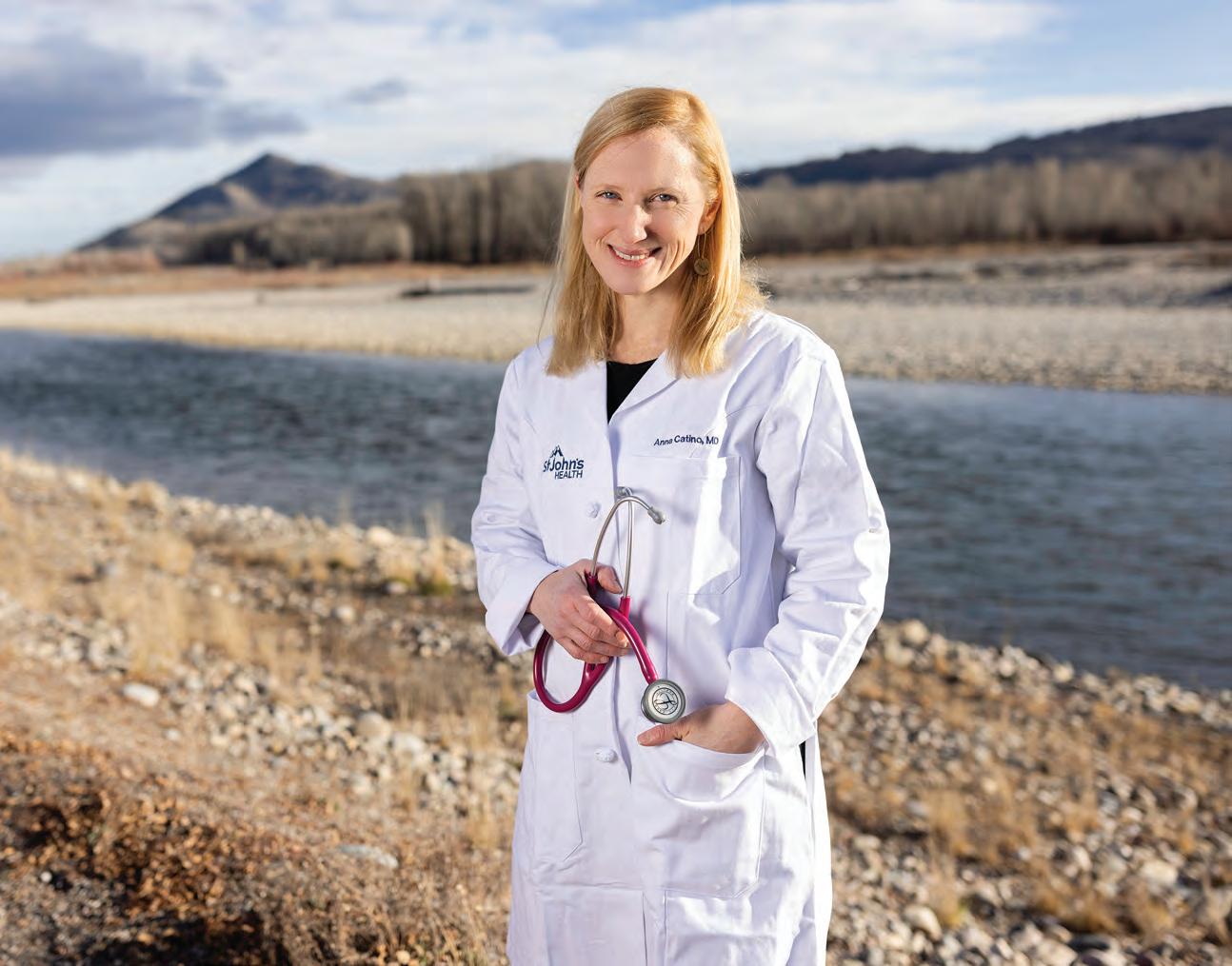
At St. John's Health, our cardiology specialists are here to care for your heart, whether it’s managing an existing condition, diagnosing and treating potential problems, or helping you reduce your overall risk of heart disease. Comprehensive, compassionate cardiology care is one of the ways we’re specializing in Wyoming, and specializing in you.
Anna Catino, MD
www.stjohns.health/cardiology
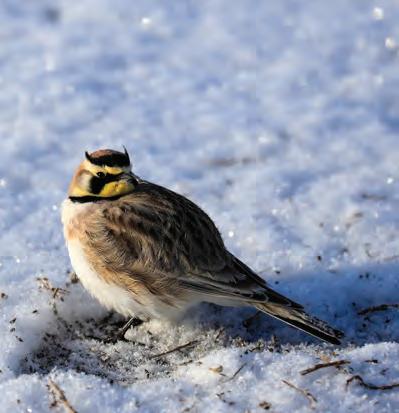






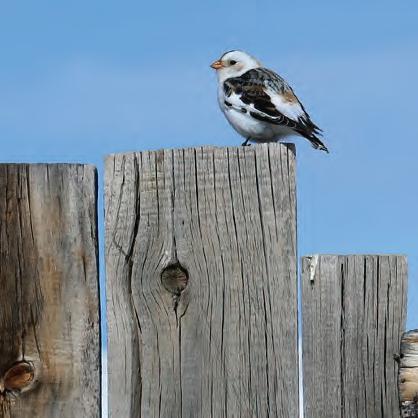


BY MICHAEL MCCOY PHOTOGRAPHY BY MARK GOCKE
In praise of the passerines’ resilience during the frosty season
I marvel at the tiny birds I see during our long winters, flitting about the backyard feeder or perched like little puffballs on brittle aspen branches.
Sure, I admire the big birds of winter, too—the trumpeter swans, bald eagles, great gray owls … But there’s just something about the more petite birds that captures a lopsided share of my respect. They’re like little survival heroes. In general, I’m talking about the passerines, those smaller birds you can, and would want to, attract to your feeders. (An oversized exception is the common raven, a passerine you probably do not want at your feeder.)
What is a passerine? It’s a bird of the order Passeriformes, which includes more than five thousand identified species worldwide, or over half of all bird species. The feet of all passerines feature three unwebbed toes pointing forward and one strong, flexible toe called the hallux pointing backward, in what is known as an anisodactyl arrangement. This allows the bird to perch on things like tree limbs and bird feeders and explains why passerines are commonly known as perching birds.
Conversely, members of the catchall category of non-passerines often have little in common other than their shared birdiness. They include everything from woodpeckers to waterfowl, eagles to owls, and emus to hummingbirds.
Most passerines belong to the suborder Passeri, the songbirds. Those
creatures responsible for the array of sounds that drift through your open bedroom window in May; sounds that signal spring as sure as the retreating snow piles lining your driveway. (And, okay, the same birds sometimes guilty of cacophonously rousing you from your dreams before dawn.)
But we’re talking winter here, when passerines are focused on eating and surviving, not singing and breeding.
Teton Valley’s numerous winter species include birds that come down from the higher elevations of the mountains ringing the basin, such as the pine grosbeak and rosy finch. Others, like the snow bunting and Bohemian waxwing, migrate in from latitudes to our north. Thirdly are year-round residents of the valley, including birds like the American goldfinch, black-capped chickadee, and house finch.
One of the most appealing aspects of these birds is that—unlike most other nonhuman neighbors we share the Greater Yellowstone Ecosystem with— you can safely and ethically get close to them. Attracting them to your property is okay, even encouraged. According to the website of Idaho Fish and Game, “Usually, feeding wild animals is not a smart move. Feeding birds, however, is a special case, since they don’t often become dependent on feeders alone, and

PASSERINES’ FEET feature three unwebbed toes pointing forward and one strong, flexible toe called the hallux pointing backward. This arrangement allows the bird to perch and explains why passerines are commonly known as perching birds.
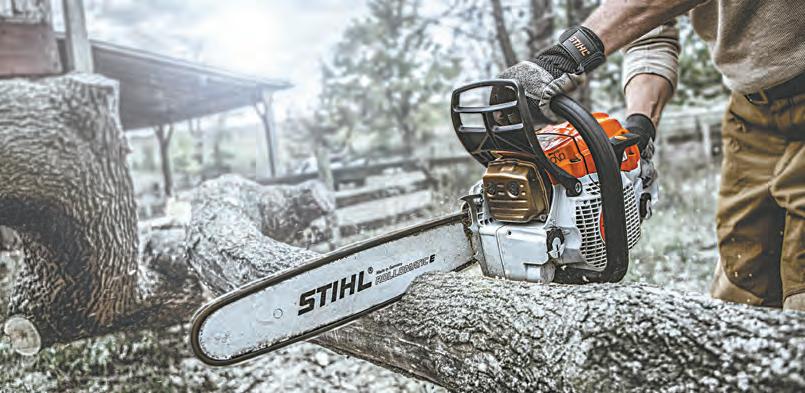




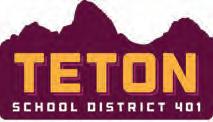

There’s just something about the more petite birds that captures a lopsided share of my respect. They’re little survival heroes.
Recent studies suggest that seeing and hearing songbirds is associated with better physical and mental health in humans. (Perhaps the same cannot be said about that other brand of “Tweeting” widely practiced today.) These birds are ubiquitous and provide a connection with nature that is often subtle, perhaps even subliminal. It’s also fun, and easy, to bring them to your backyard.
• Different styles of feeders tend to attract different species of birds. The traditional hanging feeder will bring in songbirds like chickadees and nuthatches, while a hanging thistle feeder—whether the traditional soft mesh sock-style or more durable metal mesh—is favored by siskins and goldfinches. Any feeder should be cleaned and disinfected with a diluted bleach solution every month or so. Perch-style feeders are easier to keep sanitary than open, saucerstyle feeders.
• Varieties of birdseed available include black-oil sunflower seed, cracked corn, millet, and Nyjer thistle, which is particularly popular among the winter finch crowd. To avoid mold and uninvited guests like rodents, all birdseed should be stored in waterproof containers.
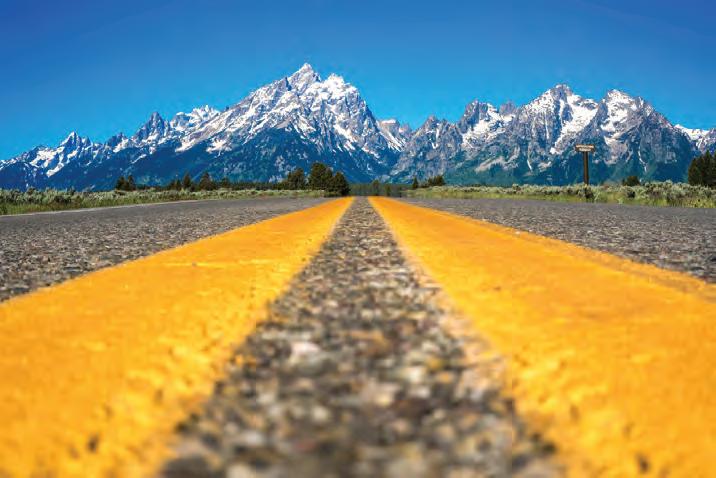


instead use feeders to supplement their daily natural diet. Winter feeding also gives a little assistance to our feathered friends during the harsh, colder months.”
Other than taking advantage of backyard feeders, how do these birds make it through the winter?
First off, winter is indeed tough, but the other option—migrating south— comes fraught with its own perils. Among them are exhaustion, getting blown into a river or other body of water during a storm, and being attacked and gobbled down by a predator. Those birds that “choose” to winter in cold climates like ours have developed an array of adaptations. Take the black-capped chickadee, one of our most familiar avian denizens of the cold and snowy months. This small bird, weighing around half an ounce, can even make it through the forty and fifty below temperatures of interior Alaska.
• Try also to provide a source of water for your feathery visitors to help them stay hydrated and bathed. Feathers must be clean to retain their insulative qualities, explaining why you’ll often see more birdbath activity in winter than in summer. The water in a dedicated birdbath, or even just a clay saucer, can remain unfrozen with the help of a birdbath heater.
• Be cognizant of where you place your feeder(s) or you might harm the avian population more than help it. If it’s placed out in the open, certain birds of prey might be attracted to your intended guests; too close to a fencepost or low-hanging ledge and the neighbor’s housecat might be tempted to commit bird murder. Also avoid placing feeders close to windows, which birds often inadvertently crash into.
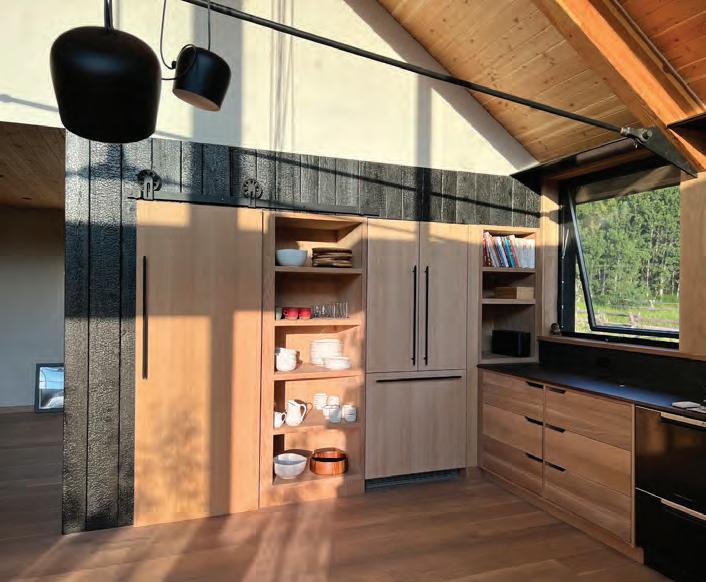

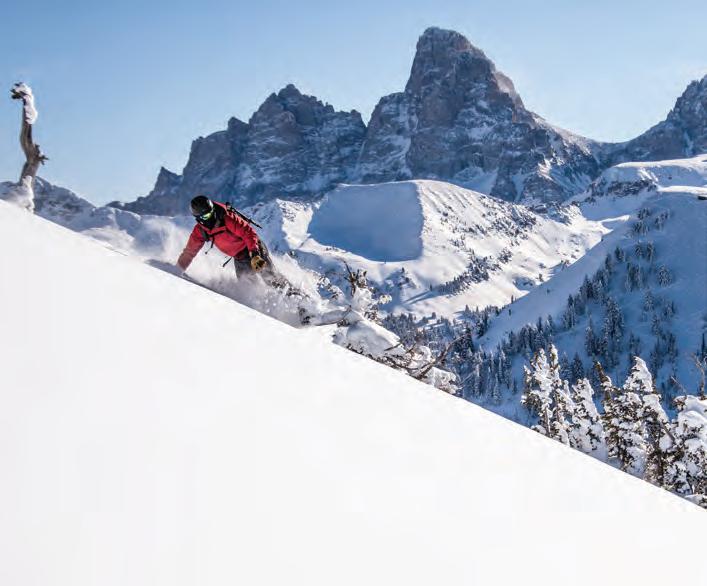
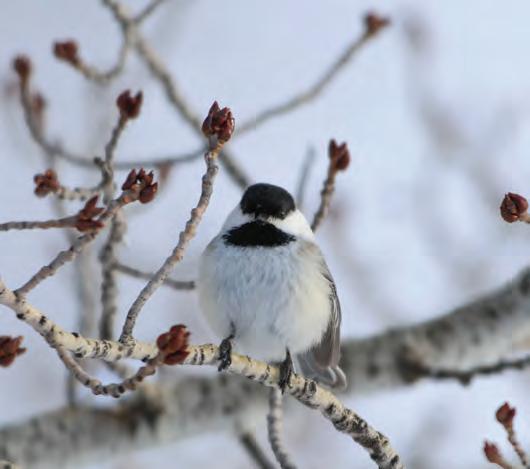
BLACK-CAPPED CHICKADEES have adapted to survive in cold climates. They can fluff their feathers to create insulation and also go into “regulated hypothermia,” which means they lower their daytime body temperature to conserve large amounts of energy.















Adaptations the chickadee has developed include the practice of dining from strategically placed seed caches they’ve hidden the previous autumn. They also fluff out their feathers to create excellent insulation, seek nighttime shelter in tree cavities and other protected holes, and have the ability to go into “regulated hypothermia,” thereby conserving great amounts of energy. Through entering this state of torpor, the bird lowers its normal daytime body temperature of 108 degrees F to just 85 or 90 degrees F. This has the effect of reducing its hourly metabolic output by some 25 percent when the outside temperature is 32 degrees F. The colder it gets, the more energy the bird conserves.
If the food supply is available, a chickadee can consume over half of its body weight in a day. It will go from having virtually no body fat in the morning to weighing upwards of 10 percent more by nightfall. This sets the stage for entering the hypothermic state, when the bird uses the extra body fat to induce shivering—i.e., repeatedly flexing its pectoral muscles—and generate heat.
The chickadee’s feet are also adapted to prevent freezing. The veins that return cooled blood to the body are in close proximity to the arteries that feed
Teton Valley:
• Horned lark: These social birds often flock up with other open-space species in winter, such as snow buntings.
• Black-capped chickadee: These tiny birds have a big appetite. A chickadee can consume over half of its body weight in a day, going from virtually no body fat in the morning to weighing upwards of 10 percent more by nightfall.
• House finch: These birds will eat a variety of seeds in winter.
• Snow bunting: Weeds and sedges make up a large share of this bird’s diet in winter.
• Bohemian waxwing: You might see enormous flocks feeding voraciously on leftover mountain ash berries.
• Dark-eyed junco: These birds appear as winter grabs hold, then head back north in the spring.
• Pine grosbeak: Pine grosbeak breed in open deciduous forests, but will visit backyard feeders during winter.
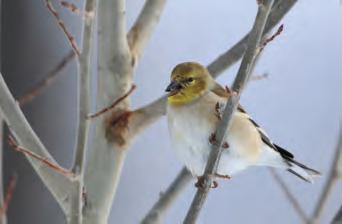
their feet with warm blood. This creates a heat transfer to that colder venous blood. The birds do have consistently cold feet in the winter, around 30 degrees F, yet they do not freeze. When it gets really cold, say 10 degrees F and below, chickadees can benefit greatly from the sunflower seeds and other supplemental food they find at feeders. So can many other species of our fine feathered friends. To learn more about all facets of bird life in the valley, visit the Facebook page of the Teton Area Birding Society.



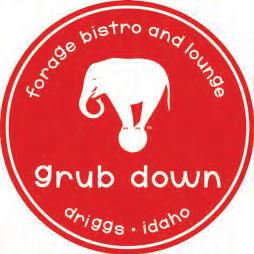



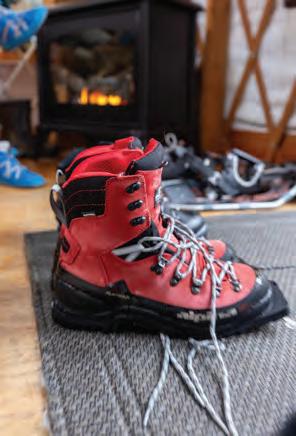
BY TOM HALLBERG PHOTOGRAPHY BY CODY DOWNARD
An easy-to-reach yurt that’s yours for the night
Three Ski-Doos rattled, belching gray clouds of two-stroke exhaust that dissipated in the falling snow. Twilight grew, accentuated by the trailhead’s position in the crook of the U-shaped Horseshoe Canyon, the nearby hills prematurely blocking the sun.
My wife Ellen and I skinned up the road I often walk my dogs on after work, heading into the former Maytag-Teton Timbers property, a nine-hundred-acre enclave the Caribou-Targhee National Forest acquired in September 2020.
Quickly, the din of the parking lot receded, stifled by towering subalpine firs and falling snow. About a mile in, past a red gate, we reached the red-walled yurt, catching the lights of Driggs poking through the magic hour as alpenglow bathed the Tetons across the valley.
Public history on the property started when the U.S. Forest Service obtained it from the nonprofit Conservation Fund, but its backstory dates to early Teton Valley settlers and beyond.
In the late 1800s and early 1900s, the town of Sam grew around a cadre of coal mines in Horseshoe Canyon, with a railroad spur reaching steel tendrils into formerly pristine forest to remove combustible sedimentary deposits. President Theodore Roosevelt’s 1908 establishment of the Targhee National Forest ended mining operations, but
private land stayed private, creating inholdings, an archipelago of non-public acreage.
The property ended up in the hands of Marquita Maytag, heiress to the Maytag family fortune and “a vigorous, nononsense type of outdoor woman who dares to dress the way she feels,” according to a 1976 Syracuse Herald article. When she died in 2011, a furious fight over the property’s direction ensued. A plan for development was floated, of nearly four-hundred homes, before conservationists partnered with the Forest Service to make it public land.
“It’s always of interest to acquire those lands for continuity of management, for wildlife benefits, and for recreation benefits,” says Joe McFarlane, recreation manager for the Teton Basin Ranger District.
Acquire it the forest did, and it came with the yurt. That led to a question: Who would run the thing? Enter the nonprofit Teton Valley Trails and Pathways (TVTAP). Its main winter mission is to groom cross-country ski trails

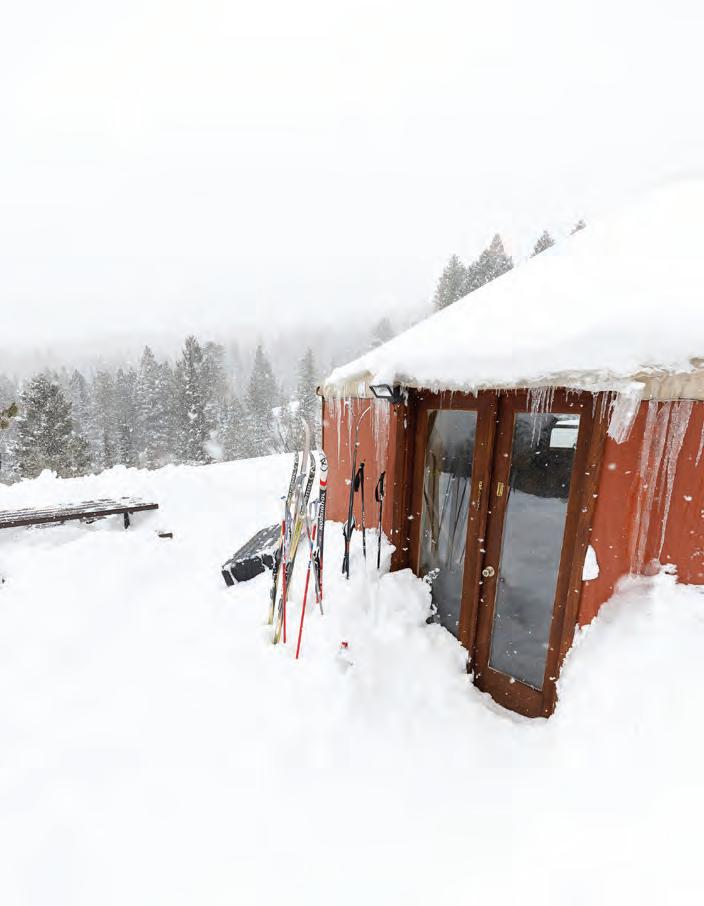

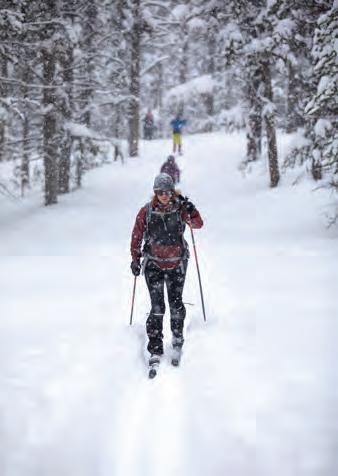
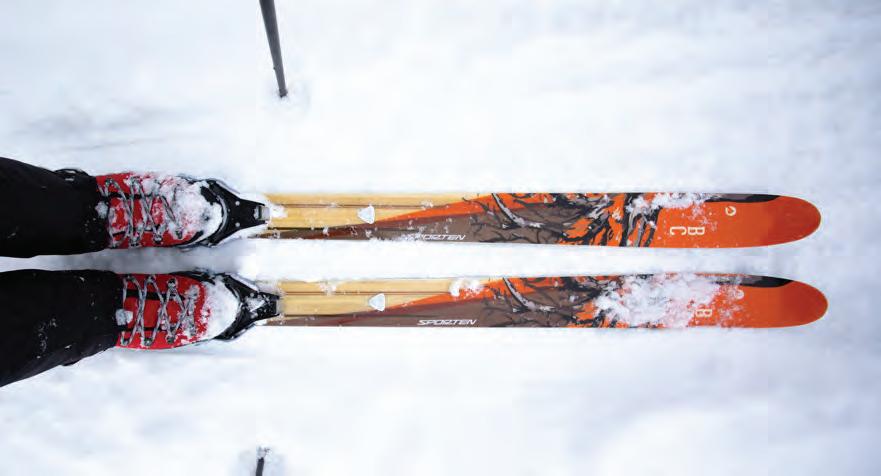
“We tell people you really only need to bring a sleeping bag, pillow, and your food. Everything else is up there for you.”
Dan Verbeten, executive director, TVTAP
around the valley, and the organization saw a potential opportunity to create a new trail system, while offering an affordable backcountry overnight option just a short drive from the center of Teton Valley.
The yurt itself, known as the Horseshoe Yurt, is simple, yet well-appointed. A bank of wooden cabinets holds pots, pans, and a three-burner propane stove; two bunk beds sleep up to six people (and hinge into couches for hanging out); electricity powers the whole thing, so beverages and food can be kept in a fridge instead of being stuffed in the snow like at remote yurts without power. “We tell people you really only need to bring a sleeping bag, pillow, and your food,” TVTAP executive director Dan Verbeten says. “Everything else is up there for you.”
My favorite amenity was the propane heating stove. I love the nostalgia of a wood stove, but I don’t love waking up in the middle of the night to stoke the fire, or waking in the morning to a frost-covered sleeping bag. The Horseshoe Yurt’s propane stove maintains a consistent temperature, meaning better
sleep and drier clothes in the morning. Leaving the yurt, we found a plethora of choices for a day on skis. A logging road splits north immediately, while others curve through the woods like hastily planned suburban streets. For crosscountry skiers who like ungroomed trails, the options are nearly endless. Said logging roads provide readymade thoroughfares with climbable grades and manageable descents, though some can be spicy on skinnier skis.
Being backcountry skiers, we headed west for slopes that offered enough vertical relief for soft turns. Depending on avalanche conditions, fitness level, and gumption, backcountry skiers can access the steep, engaging terrain of Relay Ridge just a couple hours’ walk from the yurt. But we kept our skis on mellow grades that we knew from afterwork laps and dog walks in the area.
TVTAP envisions a future in which groomed trails coexist with the backcountry, ungroomed cross-country ski routes. “Our interest has always been the yurt as it pertains to a future winter trails program up there,” Dan says. No timeline has been set for such work, however, as such machinations on public land often happen at pace akin to snail racing.
Since acquiring the property, the Caribou-Targhee has sent wildlife biologists, recreation managers, fisheries scientists, and other experts out to evaluate the acreage’s ecosystems. Once that work is complete, the forest can create use plans. “In the next couple of years, the vision for Maytag will be apparent,” Joe says. “The reason it’s been
slow-walked so far is our desire to be thoughtful and careful in the decisionmaking process.”
Even without grooming, the Horseshoe Yurt is an oasis in a thick forest peppered with the remnants of the town of Sam, including pits that remain open and can be found with enough off-trail exploration. It retains a backcountry feel but offers an approach most yurts can’t: an easy onemile walk that can be done on snowshoes, cross-country skis, or touring gear. That might be its greatest quality; close-to-town access to the backcountry at an affordable cost.
“Anybody can get in there,” says Erica Rice, a Driggs resident who spent a weekend up at the Horeshoe Yurt last winter with girlfriends. “If you can use snowshoes and you’re in relatively good walking shape, you can get in there. I love that it’s just more accessible, especially for families with kids.”
Leaving most backcountry ski yurts is an all-day affair, often involving multiple miles of walking with heavy packs, or loading snowmobiles. Leaving the Horseshoe Yurt is not. When our time was up, we pointed skis downhill, reaching the gate with just a bit of skating before gliding down the mellow road out to the trailhead. No din of two-strokes greeted us, just the quiet of the winter morning. In a half hour, I thought, I’d be home making coffee, already scheming when I could find my way back.
To rent the Horseshoe Yurt and to learn more, visit tvtap.org/horseshoeyurt




Artfully prepared, flavorful dishes reign supreme at this Driggs gem



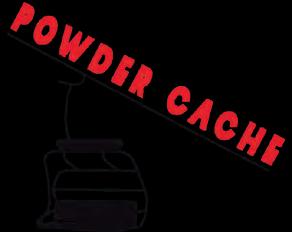
While the ‘typical’ food of the Mountain West might bring to mind seared trout or game meat and potatoes served any way you like ’em, there’s a new cuisine king at the table.
King Sushi is serving up inventive sushi, sashimi, and Japanese-inspired dishes inside its 98 East Little Avenue location in Driggs. The sushi establish ment, owned by husband and wife duo, chef Jason King and Kaylan Fullerton, opened its first location in Jackson in 2014 and expanded to the west side of the Tetons in 2023. Inside the quaint white house, chic and crisp decor with warm lighting and subtle accents like carved wooden fish cascading up the wall create a cozy atmosphere. It beckons patrons to sit back, order up the unexpected, and maybe even step out of their go-to gastronomy comfort zones. For sushi aficionados and nigiri neophytes alike, the menu is stacked with Japanese-inspired flavors beyond an impressive selection of house rolls to satisfy the palate, like scallop shooters, oysters on the half shell, pork belly ramen, pork buns, and more. My husband Kenny and I opted for our first night enjoying this newish valley hotspot to be amongst a dozen friends replete with order after order of sushi. (Truly, I think between us all, the entire menu was ordered and not a person left unsatisfied from delicious food and wonderful conversation.) Reservations are highly recommended—we planned far in advance for such a big group—and can be easily made on King Sushi’s website. A spacious bar gives diners a front seat as sushi chefs—led


Boasting incredible views, excellent service, and deliciously inspired high-end comfort food, the Powder Cache Bar & Grill is the best-kept dining secret at Grand Targhee Resort and one of the best restaurants in Teton Valley.
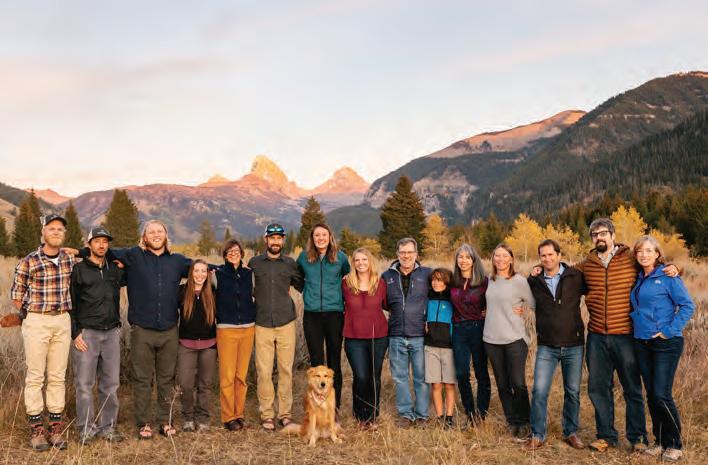
We live here. We work here. We play here. We’re raising our families here. We invest and volunteer in this community, and believe that what is good for people should also be good for the earth.
Just like you, we have big dreams. Let us help make your dreams come true.









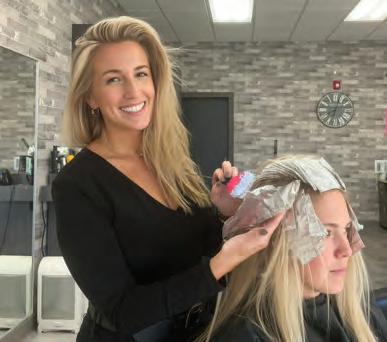
by head chef Charlie Jackson—artfully prepare each vibrant roll. The dining room holds ample seating and in the warmer months, guests can opt to dine al fresco on the patio.
We started our meal with shishito peppers blistered to perfection in a sweet soy sauce, then sampled seaweed salads and edamame, and snagged a bite of yellowtail sashimi with jalapeño, micro shisho, and yuzo-chili ponzu sauce. Sashimi typically consists of fresh, raw fish that is thinly sliced and topped with sauce, citrus, or any other bold flavor combination. Sushi, on the other hand, is served wrapped in seaweed and sushi rice, then filled and topped with more
Each dish is so attractively presented, it’s almost too beautiful to eat. But eat we did.
fish, vegetables, and sauces. Each dish is so attractively presented, it’s almost too beautiful to eat. But eat, we did. We shared three rolls, the King 2.0, the Tora, and the Smoke Show. Each proved to be a delicately balanced explosion of flavor, fresh fish, and textures. Kenny’s favorite was the jalapeño-topped King 2.0 with spicy tuna and tempura. The Tora—my top sushi bite of the evening—featured salmon, avocado, and mango and was bright and delicious. We closed out the meal with the last sips of wine, already scheming the next night out on the town spent with the reigning kings of this
fare.


Agave
310 North Main Street
Driggs, ID 83422
208-354-2003
Open Daily 11am–10pm
of your Mexican favorites, cooked to perfection seven days a week, with lunch specials from 11am to 3pm daily. Bienvenidos amigos, mi casa es su casa! [p. 44]

36 South Main Street
Driggs, ID 83422
208-354-2307
Open Daily 8am–7pm barrelsandbins.market
Teton Valley’s source for all-natural and organic products including local and organic produce, meats, cheeses, and bulk food; 460 Bread baked fresh daily; beer and wine; nutritional supplements; health and beauty products; all-natural pet foods; and much more! Juice & Smoothie Bar is open 9:30am to 1:30pm daily. Check in for sandwiches and salads, as well as other grab-and-go takeout options. [p. 18]

Broulim’s Fresh Foods
240 South Main Street Driggs, ID 83422
208-354-2350
Open Mon–Sat 7am–11pm broulims.com/driggs
Order sandwiches to go made from your choice of Columbus meats and cheeses. Breakfast sandwiches and paninis made fresh daily. Our deli has hot baked or rotisserie chicken, take-and-bake pizza, and other meals to go. Check out our display of hand-cut specialty cheeses! Freshly prepared salads, our own Sushi Bar, and hot Asian food. Daily specials of smoked meats available. Inquire at the deli for catering services. New coffee bar. [p. 101]

Butter
57 South Main Street
Victor, ID 83455
208-399-2872
Visit website for menus, hours, and online ordering butterinvictor.com
Life is better with butter (and mimosas), is the true belief of husband-and-wife team Marcos Hernandez and Amelia Hatchard. Stop in or order your to-go online for a delightful spin on brunch classics, such as blood orange and rosemary brown butter French toast, biscuits with poblano sausage gravy, or our play on huevos rancheros chilaquiles. Whether you are craving tacos at 8am or eggs at 2pm, we are here for all your brunch needs (including mimosas). Follow our Instagram @butterinvictor for specials and updates.

Citizen 33 Brewery & Restaurant
364 N Main St, Driggs, ID 83422
208-354-2073
Open Daily 4pm–9pm citizen33.com
From the team behind Forage Bistro and Tatanka Tavern, Citizen 33 Brewery & Restaurant in Driggs is dedicated to serving fresh, delicious, and locally sourced food and beer from the Main Street pub. Enjoy ever-changing brews on tap by Brew Master Nick Farney and a delicious menu by Chef John Perry featuring elevated bar bites like local fried cheese curds and fried pickle chips, burgers, and flavorful entrees. Citizen 33 was built for the community and visitors of Teton Valley to come together and celebrate this amazing place with delicious food and cold craft beer. Cheers to the citizens, “a native or inhabitant,” of Route 33! [p. 97]

528 Valley Centre Drive Driggs, ID 83422
307-284-9577
Open Mon–Sat 11am–4pm figgiesdeli.com
Fuel up for your winter adventures at Figgie’s Deli, serving up gourmet sandwiches, salads, homemade soups, and fresh baked cookies. Stop by for lunch inside or grab a mouthwatering sandwich to go with a side of house-made chips. Try a favorite like the Stallion, featuring pepperoni, salami, ham, pickled red onion, pepperoncini, mayo, provolone, shaved parm, tomato, lettuce, and Italian vinaigrette stacked on a hoagie. We even have vegan options, such as the Faux Bear with tofu bacon, arugula, caramelized onions, roasted tomatoes, and vegan smoked pepper aioli on wheatberry bread. Enjoy daily specials or build your own sandwich. [p. 12]

Forage Bistro & Lounge
285 Little Avenue, Suite A Driggs, ID 83422
208-354-2858
Open Daily 4pm–9pm Reservations Recommended forageandlounge.com
Forage Bistro, specializing in seasonal regional cuisine with an emphasis on local ingredients, offers creative, chef-inspired dinner seven days a week. Enjoy half-priced bottles of wine every Wednesday. Amazing burgers, steak, trout, market fish, pasta, homemade desserts, and more made from scratch. Our open kitchen with nothing to hide offers diners a unique experience in Teton Valley. [p. 97]

Grand Teton Brewing
430 Old Jackson Hwy Victor, ID 83455 grandtetonbrewing.com
Come enjoy the warmth at the cozy Grand Teton Brewing tap room. Grab a bite from Otto’s Kitchen and a pint after a day in the mountains. [p. 103]
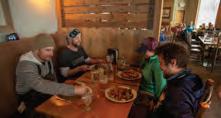
Grand Targhee Resort 3300 Ski Hill Road Alta, WY 83414
800-TARGHEE (827-4433) grandtarghee.com
This winter come check out the Powder Cache Bar & Grill. When you join us for a meal, you’ll see why Powder Cache is one of the best-kept secrets in Teton Valley. Our warm, welcoming atmosphere and excellent service allow you to sit back, relax, and take in the incredible views from our floor to ceiling windows or get toasty next to our beautiful stone fireplace. Our culinary team offers fresh, local, and sustainable ingredients to create our American West-inspired mountain comfort dishes. At the Trap Bar and Grill, enjoy a wide selection of local microbrews on tap, great food like the famous Wydaho Nachos, and HD TVs with your favorite sports teams! Snorkels is your slopeside bistro; enjoy a cup of hot coffee or cappuccino with a Wyoming-style breakfast burrito. Return in the afternoon for homemade soups and sandwiches. [BC]
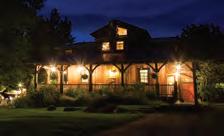
Linn Canyon Ranch
1300 East 6000 South Victor, ID 83455
208-787-LINN (5466) linncanyonranch.com
Join us for a winter wonderland dining experience! We’ll greet you at the lodge with warm drinks before we board the horse-drawn sleigh for a tour of the ranch. Upon your return, you’ll enjoy cocktails and hors d’oeuvres before being seated at your private table in the historic lodge. Experience the fine hospitality and elevated dining the Linn family is known for. Advanced reservations are required. For holiday and private parties, please call to inquire. [p. 36]
Refuge Taphouse
2 North Main Street Victor, ID 83455
Sun–Thurs 3pm–9pm; Fri–Sat 3pm–10pm @refuge_taphouse
Stop by Refuge Taphouse on Main Street in Victor for craft beer and wine by the glass. Enjoy twelve constantly rotating taps from toptier local, regional, and international craft breweries and cideries. Take happy hour home with an eclectic selection of to-go beer and wine. Ages twenty-one and over. Menu features light bar snacks, and outside food is welcome. Refuge Taphouse is the place for aprés ski this winter. [p. 88]

Rise Coffee House
40 Depot Street, Driggs, ID 83422
208-354-RISE
Open Daily 7:30am–2pm risedriggs.com
Rise Coffee House is a place where our community gathers and connects with one another. If you are looking for a beautifully crafted espresso drink, breakfast, or mouth-watering baked good, you’ll be sure to find it here. Come enjoy culture, community, and excellent coffee. Voted best coffee in Teton Valley five years in a row. Cheers!

Pinky G’s Pizzeria
37 S. Main Street Victor, ID 83455
208-787-PINK (7465)
Open Daily 12pm–9pm Delivery 5–9pm in Victor City Limits order at pinkygs.com
Pinky G’s is bringing a taste of the Big Apple to Wyoming, Montana, Washington, and our own Victor, Idaho. Founded by Tom Fay in Jackson Hole in 2011, Pinky G’s rocketed to fame a year later, when Guy Fieri shot an episode of “Diners, Drive-Ins, and Dives” there and was blown away by their hand-tossed New York-style pizzas. Stop by the newly renovated downtown Victor location for dine-in and/or take-out. Delivery within Victor city limits. Enjoy house-made dough and marinara made from scratch daily, with pizzas like the Abe Froman, topped with spicy Italian sausage, buffalo mozzarella, fresh chopped basil, and a balsamic drizzle; or try Guy’s Pie invented by Guy Fieri himself. [p. 27]
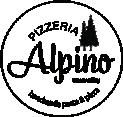
Pizzeria Alpino
165 North Main Street Driggs, ID 83422
208-354-8829
Open for dinner. pizzeriaalpino.com
Open for dinner. Pizzeria Alpino is proud to offer Teton Valley fresh and delicious Italian-inspired Rocky Mountain fare. We are grateful to showcase house made pasta and pizza using seasonal, locally grown products. Please come join us. Reservations are recommended.

Tatanka Tavern
18 North Main Street, 3rd Floor of the Colter Building, Suite 315 Driggs, ID 83422 208-980-7320
Open Daily 4pm–9pm tatankatavern.com
Tatanka Tavern offers wood-fired artisan pizza, salads, and the finest of craft beers and wines. Bring in the family for a night out or grab a seat at the bar and watch the game. Enjoy local favorites like the Fungus Amongus for dinner daily. [p. 97]
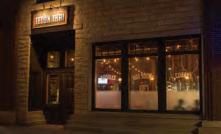
Teton Thai
18 North Main Street Driggs, ID 83422
208-787-THAI (8424)
Dinner Daily 4pm–9pm tetonthai.com
Voted Teton Valley’s favorite restaurant, Teton Thai offers something for everyone. Enjoy a variety of our family’s favorite recipes like our homemade crispy egg rolls, coconut milk curries, or savory wok seared noodles. Stop by our taproom located down the hall from Teton Thai. Serving old-world beers along with a menu from Teton Tiger, our sister restaurant located in Jackson, Wyoming. Dine in or take out. [p. 26]

The Royal Wolf 63 Depot Street Driggs, ID 83422
208-354-8365
Open Daily; serving lunch and dinner 11am–late theroyalwolf.com
Since 1997, locals and visitors alike have enjoyed discovering this off-Main Street establishment offering a diverse menu of sandwiches, burgers, salads, appetizers, and entrées served in a casual, smoke-free, pub-style environment. Complementing our menu is a full bar serving all your favorite beverages, including cocktails, wine, and a selection of regional microbrews on draft. Enjoy outdoor dining on our spacious deck during the summer. Daily food and beer specials, WiFi, and billiards. Stop by to meet old friends and make new ones. Snow sagas and fish tales told nightly. (Hours and menu subject to change.)

Three Peaks Restaurant & Catering
15 South Main Street Driggs, ID 83422
208-354-9463
Open Thurs–Sun 4pm–9pm threepeaksdinnertable.com threepeakscatering.com
Enjoy classic Italian dishes with a wild western flare: Elk Meatballs, Spicy Pork Sausage Lasagna, and Idaho Rainbow Trout, just to name a few. A great downtown Driggs restaurant close to the stoplight. Boutique wine selection available for takeout or on-site enjoyment. Plenty of gluten-free and vegetarian options. Private inhome or on-site catering and cooking classes available. We feature locally made artwork in our unique, circa 1940s building. Visit our website or call for reservations. [p. 32]


Victor Valley Market
5 South Main Street
Victor, ID 83455
208-787-2230
Open Daily 7am
Victor Valley Market is your local grocer and the place to get fresh seafood and choice meats in Teton Valley. Offering a unique selection of groceries, from organic and specialty items to your everyday needs, including a full selection of wine and beer. Our gourmet deli counter offers delicious house-made takeout dishes, along with sandwiches made with locally baked bread, fresh salads, housemade soups, and so much more! Victor Valley Market has all that you need to make a delicious meal, whether for eating in or picnicking out. [p. 54]
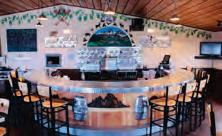
Wildlife Brewing
145 South Main Street
Victor, ID 83455
208-787-2623
Open Wed–Sun 4pm–9pm wildlifebrewing.com
Since 2003, Wildlife Brewing has been a cornerstone of Victor’s restaurant scene. Locals and visitors alike visit daily to enjoy awardwinning microbrews and freshly made hand-tossed pizza. With a large family-friendly seating area and a unique stainless-steel bar, Wildlife is the perfect place to enjoy a quick brew after a fun-filled day, or bring the whole family to enjoy the best pizza in the valley. Come on in and ‘Live the Wildlife!’ [p. 39]
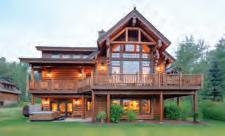
C & C HomeServices
57 South Main Street Victor, ID 83455 307-201-1861 cchsjacksonhole.com
C&C HomeServices provides luxury vacation rentals, vacation rental representation, and home management services in Jackson Hole and Teton Valley. We stand by uncompromising standards designed to overachieve the expectations of our owners and guests alike. Enjoy meticulous attention to detail and twenty-four-hour service. We offer short-term rental management, long-term rental management, caretaking, housekeeping services, snow removal, and lawncare. It is our pleasure to care for our clients’ homes and provide our guests the best in comfort and convenience. [p. 6]

Grand Targhee Resort
3300 Ski Hill Road Alta, WY 83414
800-TARGHEE [827-4433] grandtarghee.com
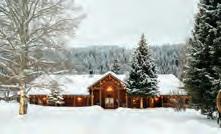
Moose Creek Ranch 2733 East 10800 South Victor, ID 83455
208-510-0216
moosecreekranch.com
Moose Creek Ranch is a beautiful location for weddings, ski vacations, a weekend getaway, corporate events, retreats, family reunions, and more. The ranch is 22 miles from Jackson Hole, just 35 minutes from both Grand Targhee Resort and Jackson Hole Mountain Resort. Nestled at the base of Teton Pass, find world-class backcountry skiing just up the road. Enjoy complimentary cross-country skiing and snowshoeing right from our front door. Warm up with hot chocolate by the fireplace in the lodge and enjoy a complimentary s’mores kit. Make your event, reunion, wedding, or vacation an unforgettable experience at Moose Creek Ranch. [p. 31]

Relax with the family in one of a variety of western-style slopeside accommodations. Be ready for first chair as you relax in the high alpine setting with a quaint mountain village that offers dining and shopping. Rooms vary in size and budget, from sleeping four to ten guests. Teewinot Lodge was completely renovated prior to the winter season and boasts beautifully decorated and comfortable rooms with king and queen beds. The Sioux Two Bedrooms offer a small kitchenette and are perfect for your next resort getaway. The resort is dog friendly and offers pet friendly rooms. Lodging guests also receive 15 percent off lift tickets. Call 800-TAR-GHEE to book your stay. [BC]
45 North Main Street
Victor, ID 83455
208-787-2221
Open seven days a week
Over one million served! For more than sixty-five years, the Victor Emporium Old Fashioned Soda Fountain has served delicious milkshakes, including the World Famous Huckleberry Shake. Gourmet coffee and espresso served daily. The Emporium is also a great place to pick up those unusual gifts. Where the locals meet before enjoying the great outdoors here in Teton Valley. [p. 36]
18 North Main Street #105
Driggs, ID 83422
800-746-5518
mail@tetonhomestead.com tetonhomestead.com
You’ve known Grand Valley Lodging for more than thirty years as the premier property management company in Teton Valley. Now, under new local ownership, we are ready to turn things upside down. Introducing Teton Homestead—It’s time to reset your expectations of what to expect in a property management company. Vacation homes, long-term rentals, caretaking, and housekeeping. Teton Homestead— Expect more. [p. 19]
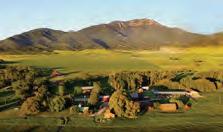
Hansen Guest Ranch & Event Venue
956 Rainey Creek Road Swan Valley, ID 83449
208-483-2305 hansenguestranch.com
Hansen Guest Ranch & Event Venue offers western-style accommodations perfect for individuals as well as large groups. The property is on 18 scenic acres and features a historic 125-year-old barn, private cottages, creekside cabins, and cozy bunkhouses with porches and vaulted ceilings. Whether for a quiet getaway or a full buyout of the ranch for your retreat, wedding, camp, or family reunion, Hansen Guest Ranch is the perfect setting. The property has an outdoor cooking area, pickleball courts, horseshoe games, a fire pit, and more. Fishing, horseback riding, hunting, and hiking are all nearby. Enjoy convenient access to the national parks and Jackson Hole. [p. 55]
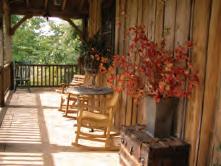
Linn Canyon Ranch
1300 East 6000 South Victor, ID 83455
208-787-LINN [5466] linncanyonranch.com
Experience our authentic timber-frame cabin nestled in the snowy foothills of the Tetons, where quiet luxury awaits. While you’re here, take a ride on a horse-drawn sleigh, and join us for an evening of elegant Western dining in our historic lodge. [p. 36]

Teton Valley Cabins
34 East Ski Hill Road Driggs, ID 83422
208-354-8153 or 866-687-1522 stay@tetonvalleycabins.com tetonvalleycabins.com
Nestled in the heart of Teton Valley, our family owned cabins welcome you for special getaways, vacation home base, family or group reunions, and more. Quaint charm, rustic cabins, and affordable rates await! Enjoy locally owned restaurants and shops, along with easy access to Yellowstone National Park, Grand Targhee Resort, and Jackson Hole Mountain Resort. Staying at Teton Valley Cabins means you don’t have to leave your furry friends behind. We offer various room types equipped with microwave, fridge, satellite TV, WiFi, and pet friendly room accommodations. Check out our website for trip planning and activities in Teton Valley. We can’t wait to see you! [p. 12]
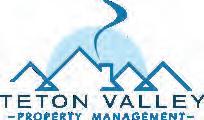
Teton Valley Property Management
253 South Main Street Driggs, ID 83422 208-354-3431
info@tetonvalleypm.com tetonvalleyvacationrentals.com
Allow us to find that perfect home or condo to make your vacation memorable. All our homes are nicely furnished, meticulously maintained, and fully equipped to accommodate your group at a fraction of what you would pay for hotel rooms. All homes come complete with linens, kitchen necessities, smart TVs or satellite TV service, high-speed internet, soaps, and paper products. Book online and receive all the conveniences of home, away from home. [p. 8]
Church of Jesus Christ of Latter-day Saints
Teton Valley is home to three meetinghouses of The Church of Jesus Christ of Latter-day Saints. Visitors of all ages and backgrounds are welcome.
Sunday worship services are held in Victor (87 East Center Street; 9am, 10:30am, and 12pm), Driggs (225 North 1st Street; 9am, 10:30am, and 12pm), and Tetonia (209 South Main Street; 9am and 10:30am).
Worship services are centered on the partaking of the bread and water of the sacrament. This one-hour meeting includes congregational hymns, prayers, and brief sermons focused on the love of God and atoning sacrifice of Jesus Christ. Following this meeting, visitors of all ages are invited to attend a one-hour Sunday School class, divided by various age groups. Additional information can be found by calling Zane Calderwood (208-317-3325), Wade Treasure (208-351-4480), or by visiting ChurchOfJesusChrist.org.
2559 South ID-33, Driggs, ID 208-354-1771 uppervalleycatholic.com
Good Shepherd is a Roman Catholic Church serving the needs of the faithful in Teton Valley. As an ever-growing parish, we welcome all in participation in our liturgies, devotions, ministries, and activities. Mass times on Sunday include a 9am mass in English and an 11am mass in Spanish with Confession after each Sunday mass. In addition, there is Adoration of the Blessed Sacrament on Wednesdays from noon to 5pm, followed by bilingual mass. Confession is offered Wednesdays, 3:30-4:30pm. Preparation is offered for all the Sacraments. The church is open for prayer during the day, and we would love for you to join our Catholic community.
Headwaters Calvary Chapel
500 Ski Hill Road | Driggs, ID 83422 | 208-354-WORD [9673] headwaterschurch.fun
Our vision is to simply teach the Bible simply—and thus, our pattern of study is verse by verse, chapter by chapter, book by book, right through the whole Bible. Sunday service starts at 10am; dress is smart casual. Wednesday Bible study starts at 7pm; dress is casual. From the stoplight in Driggs, head east on Ski Hill Road and the church will be on your left as you round the turn.
St. Francis of the Tetons Episcopal Church 20 Alta School Road Alta, WY 83414 | 307-353-8100 sftetons@silverstar.com | stfrancis.episcopalidaho.org
Join us for Sunday morning worship beginning at 10am. St. Francis of the Tetons Episcopal Church welcomes worshippers of all walks of faith. In the shadow of the Tetons, this historic church offers an opportunity to experience God’s presence and join in fellowship, spiritual renewal, and service to others.
265 North 2nd East Driggs, ID | 208-354-8523
tetonvalleybiblechurch.org
Teton Valley Bible Church exists to glorify God and exalt Jesus Christ as Lord through Holy Spirit-empowered living and worship. Our mission is to make disciples through gospel-centered outreach, the spiritual building-up of believers, and living in loving fellowship with one another. We gather together to worship the Lord on Sunday mornings; please visit the website for service times. Pastor Jim Otto (MDiv) is committed to expositional preaching and Biblical theology. Childcare is available and all are welcome. [p. 96]
Teton School District 401
District Office: 208-228-5923
tsd401.org
Empowering our students to reach their full potential—Teton School District 401 provides a safe and exceptional learning environment where career and college readiness are the academic cornerstones of a relevant and progressive education. [p. 94]
Teton High School
Grades 9–12 208-228-5924
tsd401.org
Teton High School strives to recognize the uniqueness of the individual in preparing for a lifetime of learning. THS provides a safe and academically focused learning environment, where students are challenged for career and college readiness.
Basin High School
Grades 9–12 208-228-5928
tsd401.org
Basin High School is an alternative for students who meet the state criteria for enrollment. Students obtain credits through a stateapproved independent-study format, with assistance from certified staff.
Teton Middle School
Grades 6–8 | 208-228-5925
tsd401.org
The mission of TMS is to be a safe and innovative organization that empowers each student and staff member to develop a foundation of self-efficacy, build relationships, overcome challenges, stretch their grit and resilience, and recognize their potential.
Rendezvous Upper Elementary
Grades 4–5 | Driggs 208-228-5926
tsd401.org
Rendezvous’ mission is to create a caring community of learners who inspire each other to embrace curiosity, value others’ opinions, and develop a foundation of self-efficacy.
Teton K-3 Elementary Schools
Victor 208-228-5929 | Driggs 208-228-5927 | Tetonia 208-228-5930
tsd401.org
The mission of the TSD 401 elementary schools is to be integral in the partnership between school, home, and community in nurturing and encouraging all children to become productive citizens and lifelong learners.





PHOTO BY LARA AGNEW
POEM BY BRYCE ANGELL
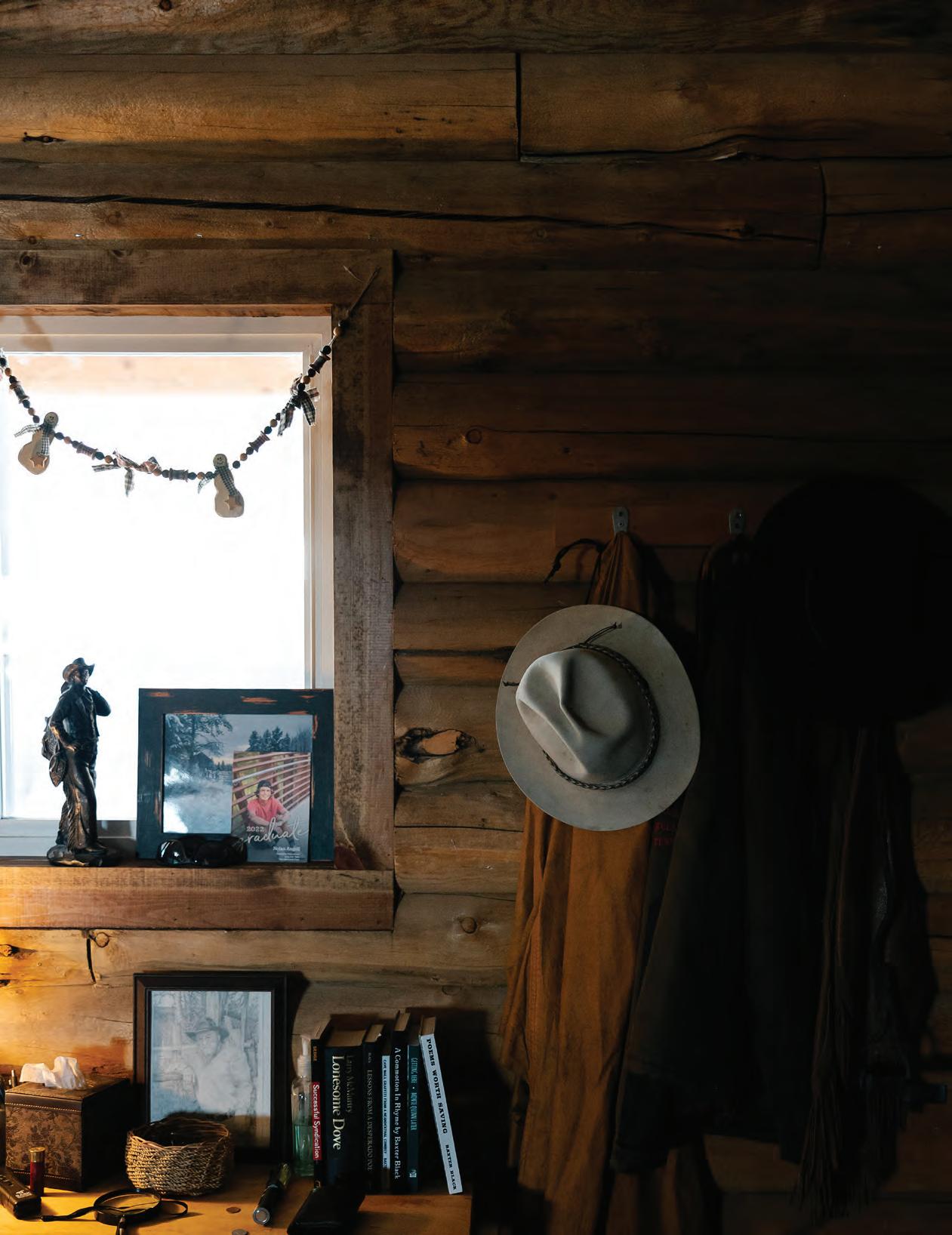
Why does a person take up roots in Teton Mountain land? Where icy winds and frigid snow will freeze you where you stand.
Where winter follows Mother Nature’s all consuming eye. So if you haven’t guessed it, then let me tell you why.
When you drive into the valley floor the first thing that you’ll see are the Teton Range of Mountains in all their majesty.
The Teton Peaks are beautiful. To hike them is a must. If you’re looking for a challenge, the rugged trails will earn your trust.
You can spend all daytime hiking from the many trails to choose, and breathe the cleanest mountain air while taking in the views.
The waving fields of golden barley and green alfalfa hay will only help entice the man or woman who might stay.
Down by the Teton River a new mare grazes with her foal. To witness God’s creation would heal the broken soul.
The Teton River boasts the place to cast your fly about. The river view is gorgeous while reeling in your trout.
The kindness of the country’s people shines with every smile and the goodness you will find is longer than a country mile.
Why does a person take up roots around the Teton land? ‘Cuz it’s still a place where God creates the beautiful firsthand.
